Plan the perfect Puglia itinerary | essential Puglia day trip and road trip guide.
Most Puglia itineraries look the same: Instagram-famous towns, crowded beaches, and a rushed checklist of must-sees. But we don’t all travel alike. Some come solo, others with partners, friends, or family – each with different expectations and pace. That’s why we don’t believe in a “one size fits all” Puglia itinerary.
A Puglia itinerary, your way
Our approach is different. Instead of prescribing a fixed route, we break Puglia – and nearby Matera in Basilicata – into building blocks so you can design a trip that matches your style. We show you how destinations connect, so you can travel efficiently without feeling rushed. Whether you want a quick getaway, a slow immersive stay, or to fit in as much as possible, our guides are flexible, honest, and rooted in lived experience.
In this guide, we suggest creating a Puglia itinerary as day trips starting from your chosen base.
Some of our Puglia itinerary combos assume you have your own transport, but many can also be done by train or bus. For practical advice, see our Puglia Guys Public Transport in Puglia guide.
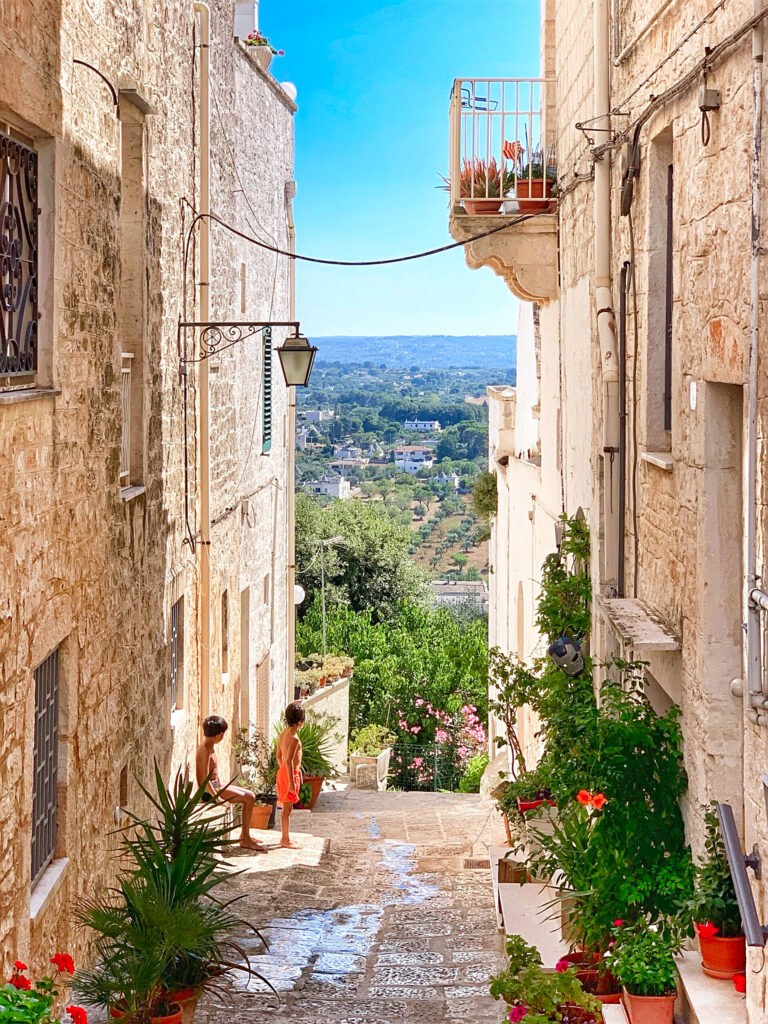
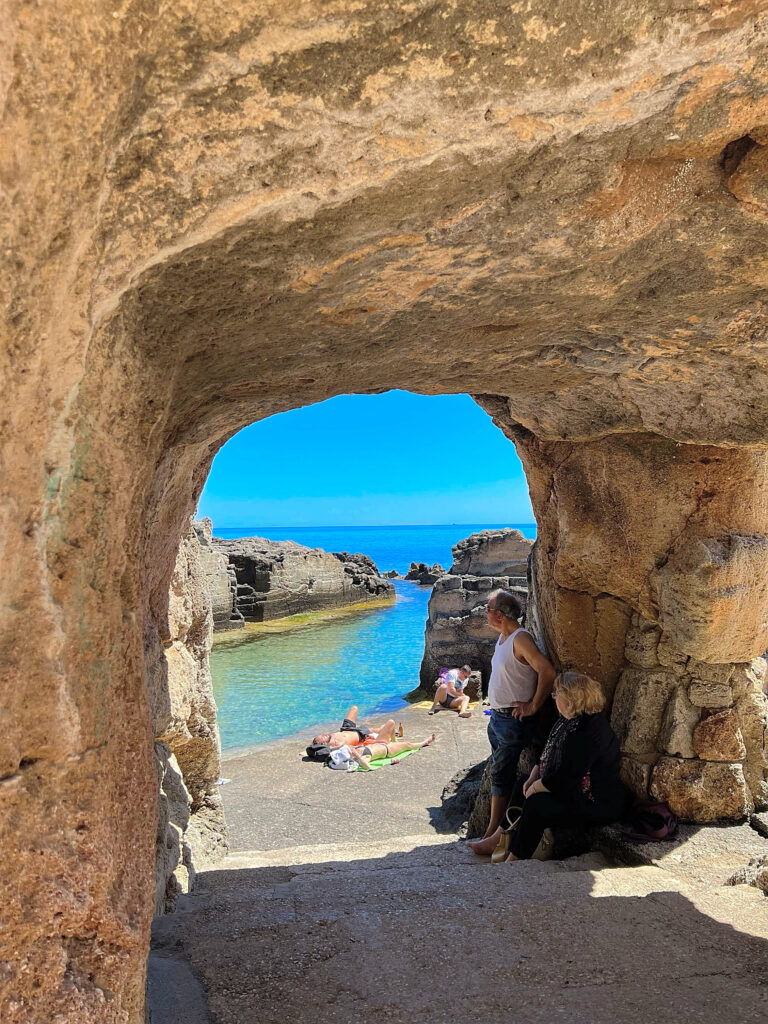
Follow us on Instagram for frequent video stories, reels, photos, ideas and other information to inspire your visit to Puglia.
The Puglia Podcast
Also available on Apple Podcasts, Spotify or wherever you get your podcasts from.
Plan the perfect Puglia itinerary | Orientation
Puglia is known as la terra tra due mari – the land between two seas – nestled between the Adriatic to the east and the Ionian to the west.
Our region stretches from the mountainous, verdant Gargano Peninsula in the north – the “spur” of Italy’s boot, where dramatic limestone cliffs plunge into the deep blue of the Adriatic – to Santa Maria di Leuca at the very tip of the heel, known as Finibus Terrae, land’s end.
In the 400km between, you’ll find one of the most geographically diverse regions in Italy. The vast Tavoliere plain near Foggia, carpeted with golden fields of durum wheat, gives way to the rolling olive groves of the Valle d’Itria, the sprawling vineyards around Manduria, and the prickly pear cactus-lined vistas of the Salento peninsula.
Plan the perfect Puglia itinerary | Architecture
Discover Puglia’s iconic trulli – whimsical, cone-shaped dwellings found nowhere else in Italy. Explore ancient masserie, once fortified farmhouses built to defend against bandits and Saracen raids, now transformed into elegant boutique stays.
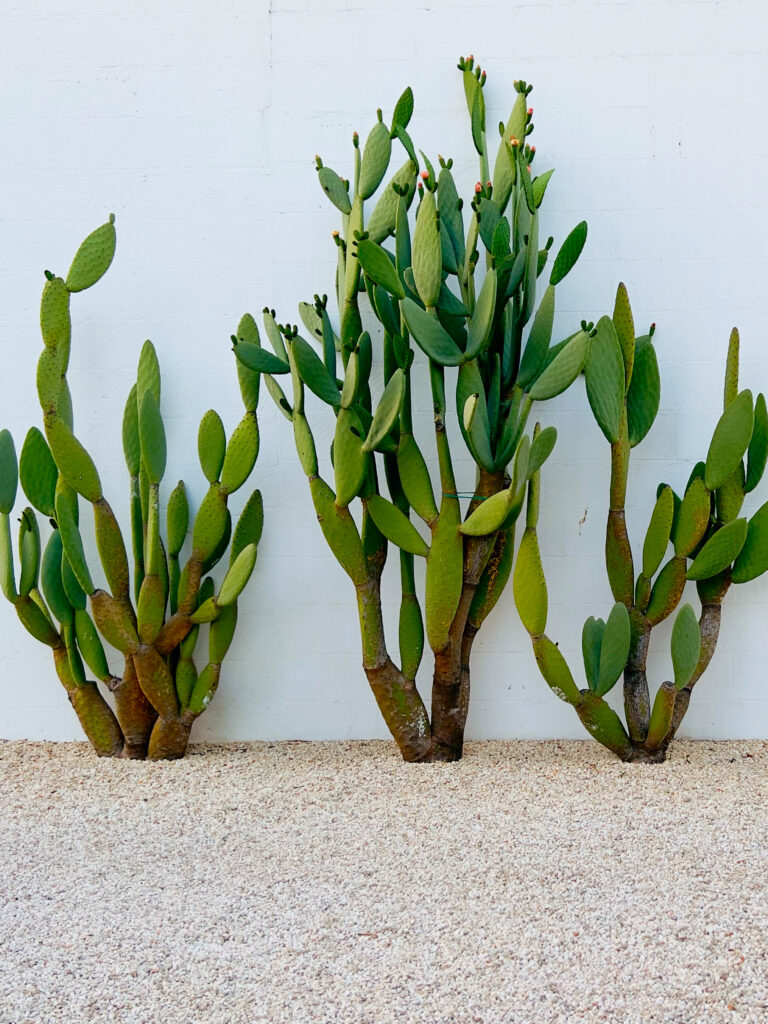
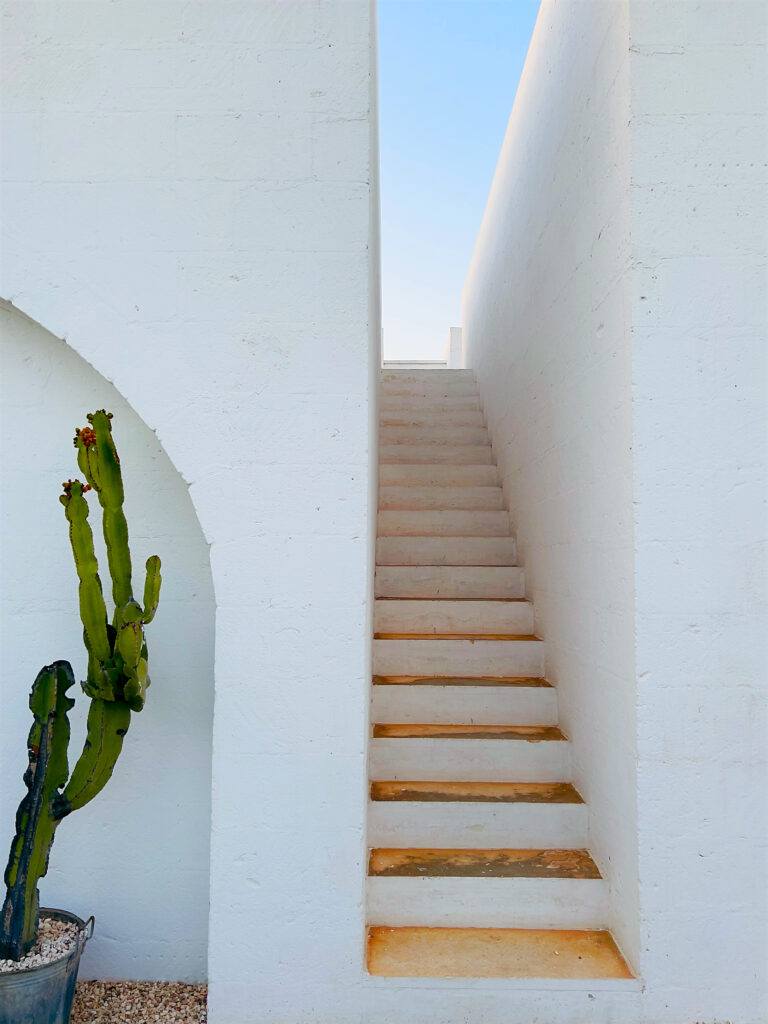
Visit the città bianche – white-walled hill towns with historic centres that wind through mazes of whitewashed alleys and circle around striking cathedrals. Their resemblance to Greece is no coincidence. The Salento peninsula was once part of Magna Grecia – Greater Greece – and the influence is still felt today.
Plan the perfect Puglia itinerary | Food
Puglia is the breadbasket of Italy. Our fertile red soil and Mediterranean climate make the region one of the country’s top producers of durum wheat, olive oil, and wine. Puglia produces nearly 40% of Italy’s olive oil, is its second largest wine region, and is the birthplace of burrata.
If you’re a food lover, why not plan a Puglia itinerary around food?
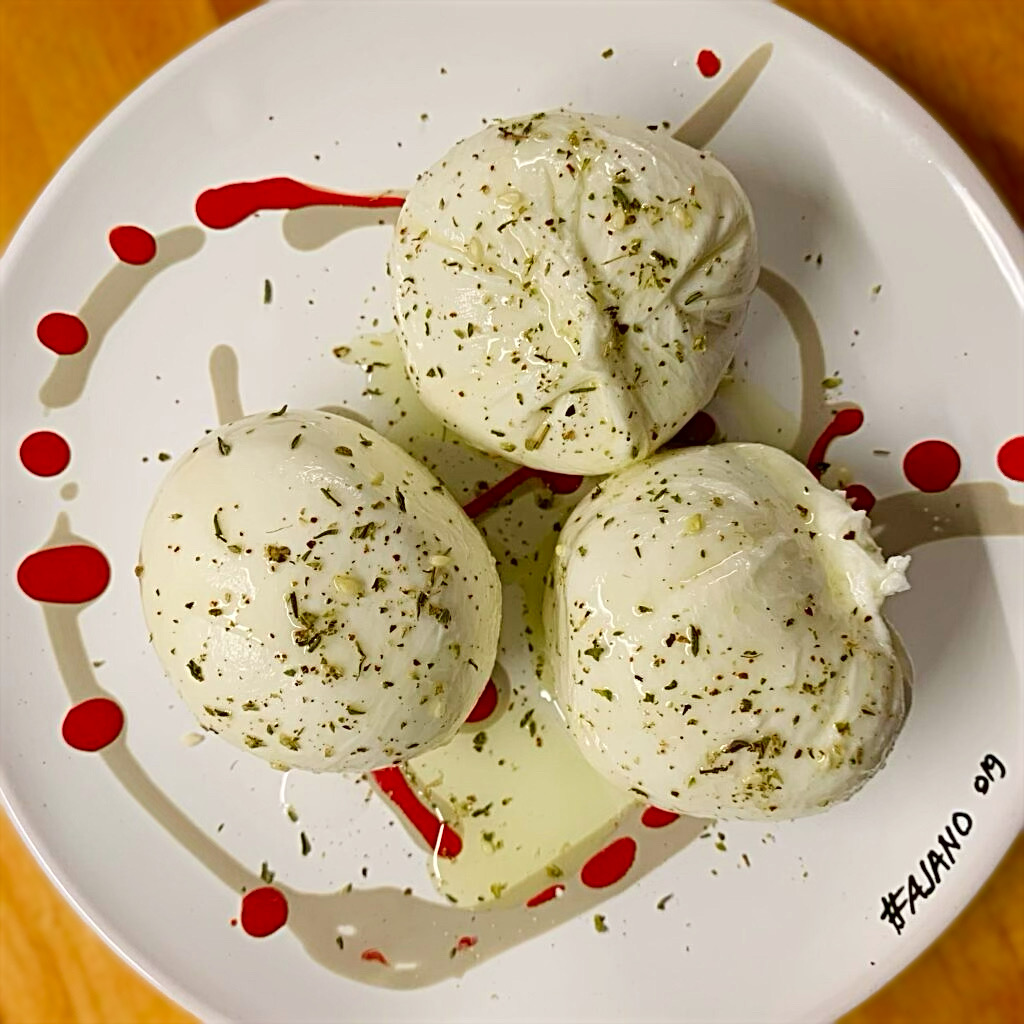
Slow food isn’t a trend – it’s tradition. Puglia’s cucina povera (“poor cuisine”) relies on seasonal, local produce, turning just a few humble ingredients into dishes full of flavour. Nothing is wasted, and simplicity is key.
You’ll eat well almost anywhere. While fine dining exists, some of the most memorable meals come from modest trattorie and osterie — simple, affordable, and unforgettable.
Plan the perfect Puglia itinerary | bitesize Puglia
This guide suggests how to visit Puglia’s popular destinations as day trips from a different base, helping you plan efficiently while embracing the region’s slower rhythm of life – the dolce far niente that makes people fall in love with it. We include combinations and road trips, ideal for linking destinations and exploring at your own pace.
Our timings are only suggestions, designed so you can see the essentials and move on without feeling you’ve missed out. Take more or less time, or swap a morning visit for a leisurely lunch and afternoon stroll. Just keep in mind la pausa: from about 1pm to 4.30/5pm many restaurants and shops close; lunch service usually ends around 2.30pm, and in smaller towns closures often last until evening.
Looking for a ready-made itinerary?
While we believe there’s no one-size-fits-all way to explore Puglia, we’ve also mapped out a few of our favourite routes using smart bases. If you’d prefer to skip straight to these classic itineraries, you can jump to them here.
Puglia itinerary | Bari – old town walk, food & easy day trips
Best for: Food lovers, history buffs, street life
Time needed: A half-day to explore wonderful Bari Vecchia with its confusing orientation. Staying a night or two there will do justice to the great cuisine available.
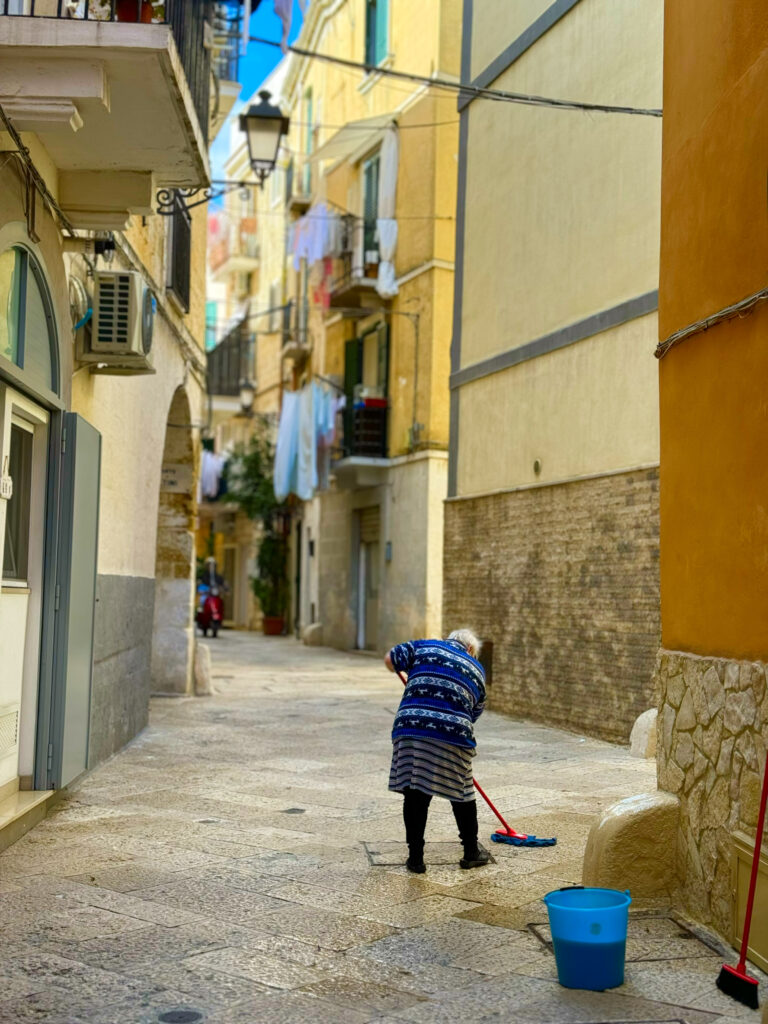
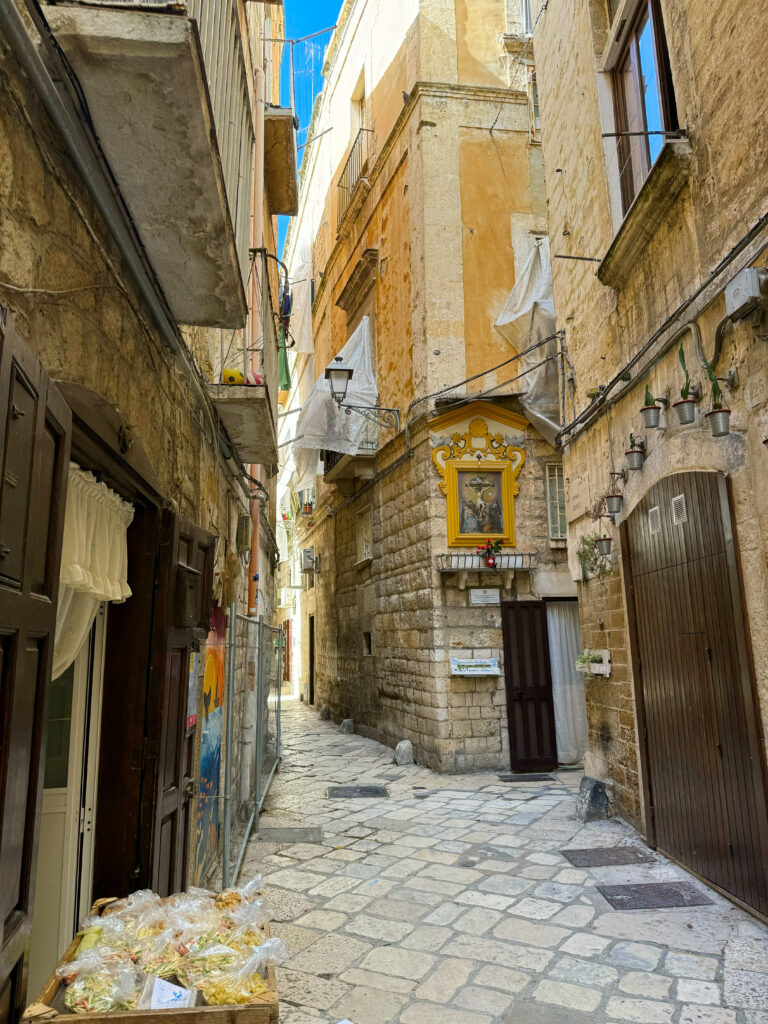
Why go
More than just a gateway, Bari is a city where daily life still spills onto the streets. Its old town, Bari Vecchia, is a labyrinth of stone alleys, draped washing, and the irresistible sight of nonne rolling orecchiette by hand.
Start with food
Kick things off at Panificio Fiore, a bakery dating back to 1508, for a slab of tomato-topped focaccia barese. Prefer more bustle? Join the queue at Panificio Santa Rita, a local favourite.
What to see
From here, it’s a short walk to the Basilica di San Nicola, a place of pilgrimage for Catholics and Orthodox Christians alike, then on to the towering Castello Svevo. Double back through the old town to Strada delle Orecchiette, where pasta-making is pure street theatre. Take a coffee break in a sun-drenched piazza, then stop for gelato at Gelateria Gentile, a Bari institution.
Street life and snacks
By late afternoon, follow your appetite. Snack on fried polenta fritters in Largo Albicocca, sample raw seafood at the Porto Vecchio fish market, or join the line at El Chiringuito for a panzerotto and a cold Peroni. For a proper sit-down, order spaghetti all’assassina at Al Sorso Preferito (lunchtime only), or ask for it off-menu at La Locanda dell’Elfo in the evening.
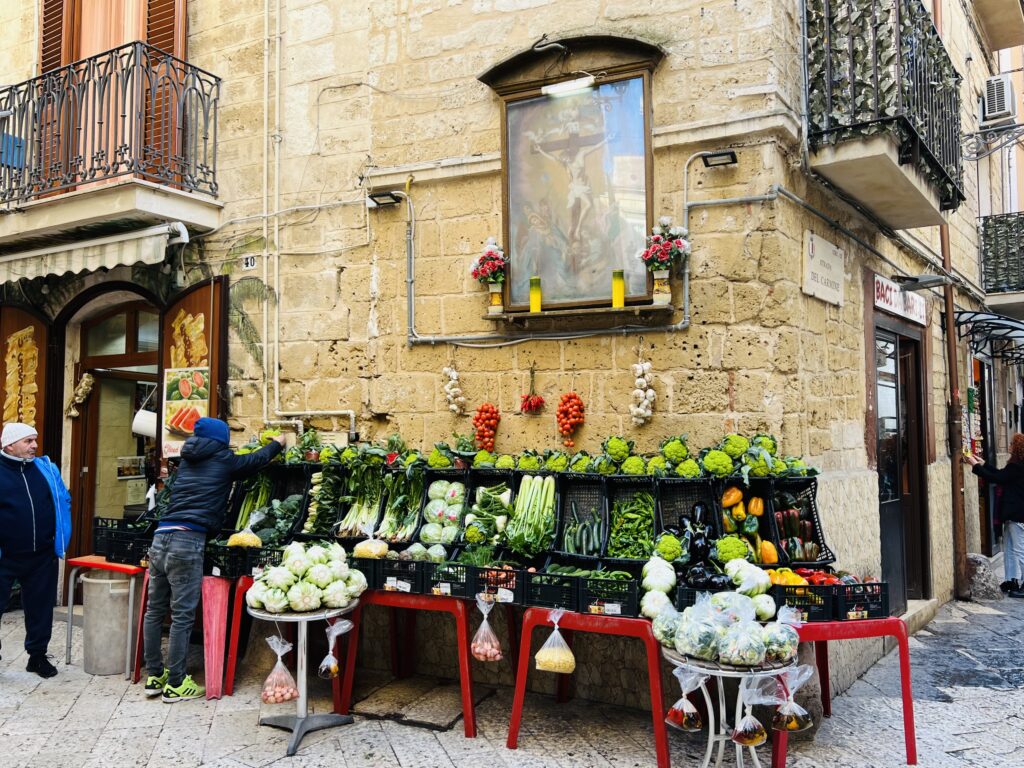
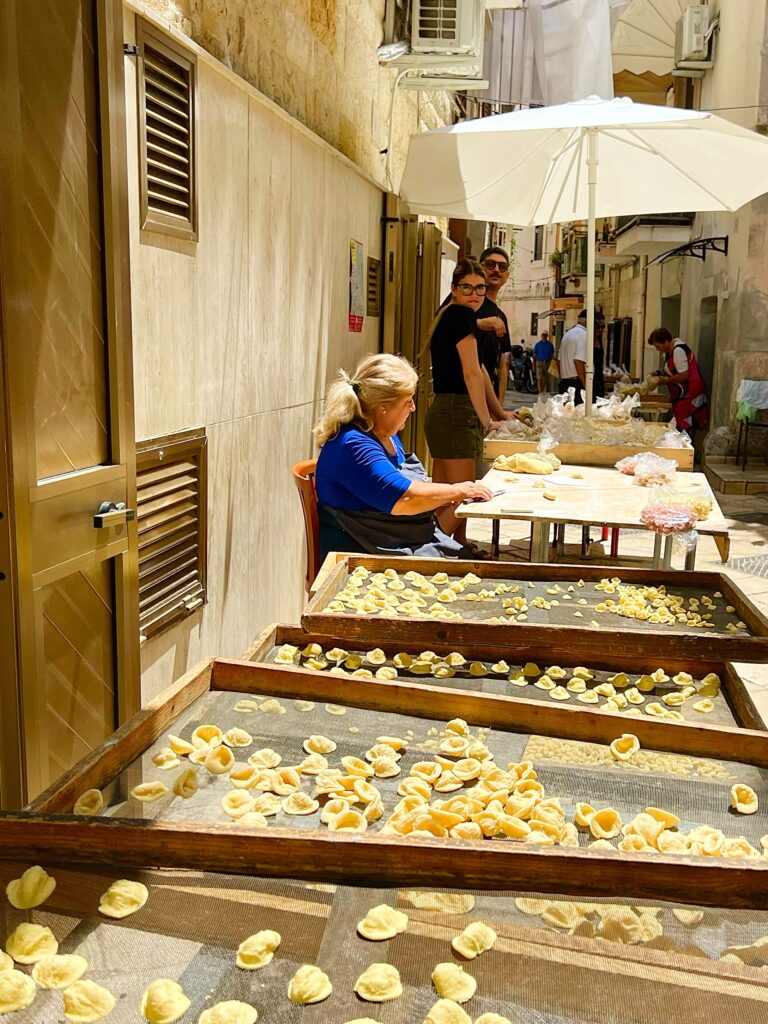
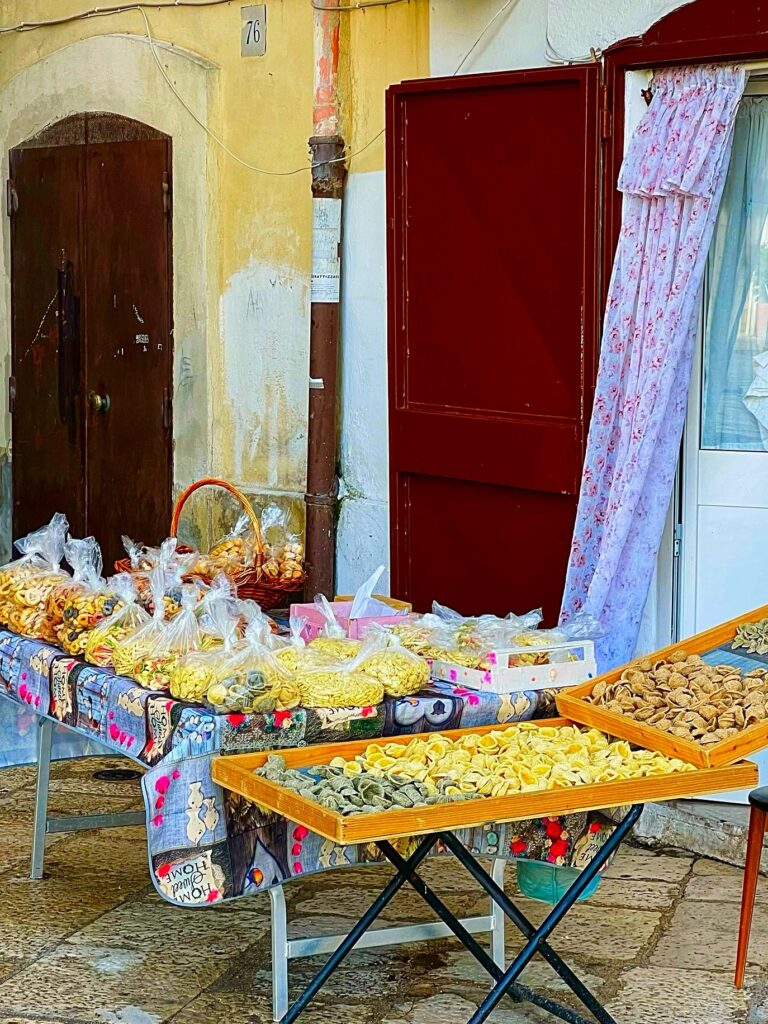
Shopping & culture
Bari’s squares are as much about atmosphere as they are about shopping. Pass through Piazza Mercantile and Piazza del Ferrarese, where locals gather and the old town meets the modern city. For something to take home, step into the Puglia Design Store, showcasing contemporary Made in Puglia ceramics, textiles, and other locally crafted products that travel well.
Food lovers should dive into Bari Vecchia’s salumerie. Visit a local deli for cheeses and cured meats to take home, or order an on-the-spot panino or charcuterie plate by choosing from the counter — then add taralli, olives and other sides for a ready-made feast. Our favourites include Salumeria Meraviglie (Str. Arco Meraviglia, 7, just by Bari’s own “Juliette” balcony) and Antica Salumeria Di Nicola Lapesara (Strada Bianchi-Dottula). And even if you don’t go inside, stroll past Nino – il Salumiere on Strada Vallisa and see if you can resist.
Transport & parking
We always try to park at Molo San Nicola where you find by El Chiringuito. It’s pay parking, and you’ll need to input your car licence plate (registration) number — so have it handy before using the machine. Approaching from the south, driving into Bari is surprisingly straightforward: come off the Adriatic Highway just as it becomes the Bari tangenziale (Via Bari, the highway exit is marked Bari Lungomare/Bari S. Giorgio/Fiera del Levante/Triggiano). From there, follow the lungomare for an easy, picturesque drive straight to the parking on Molo San Nicola.
If you’re arriving by train, Bari Centrale is the region’s main rail hub with direct services north to Foggia, south to Lecce, and inland to Matera and the Valle d’Itria. From the station, it’s a 15-minute walk into Bari Vecchia along Via Sparano da Bari, the city’s main shopping precinct.
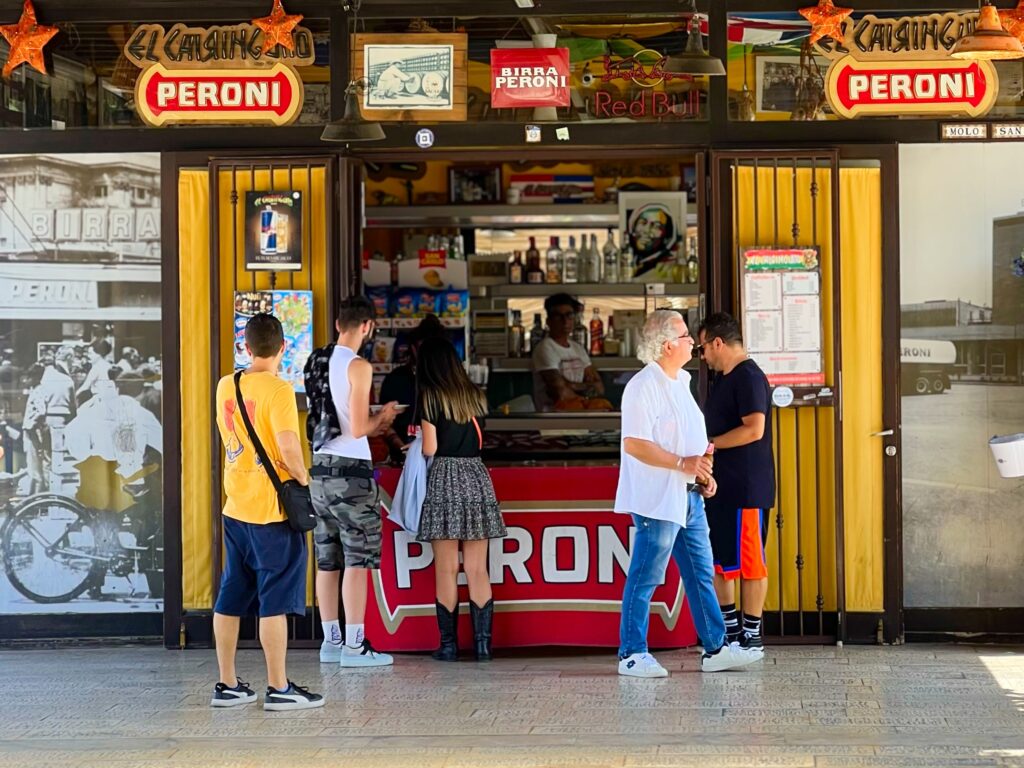
More
For a deeper orientation, see our Puglia Guys Bari Guide, and for a dedicated food and restaurant guide check-out our Eat Bari guide, and our dedicated feature on spaghetti all’assassina — Bari’s cult pasta dish.
Puglia itinerary | combo day trips from Bari
Bari, Trani & Castel del Monte
From Bari, plan an excellent Puglia itinerary with a day trip that pairs the elegant port town of Trani with the extraordinary Castel del Monte, Frederick II’s octagonal 13th-century fortress in the Murge hills.
We suggest going first to Trani (about 40 minutes by train or car). This way you can enjoy a relaxed seafood lunch by the harbour, followed by a stroll around the Cattedrale di San Nicola Pellegrino, the Castello Svevo, and the old Jewish quarter. The town is at its liveliest around midday, and you’ll appreciate exploring the waterfront before the heat of the afternoon.
From Trani, continue inland (about 45 minutes by car) to Castel del Monte. Visiting in the late afternoon makes sense: the site is quieter after the lunch crowds, and the shifting light across the surrounding hills adds to the drama of the setting.
Return to Bari in the evening (about 1 hour).
This order works better than the reverse: Castel del Monte has little in the way of food options, so saving Trani for lunch avoids the need for a detour, and lets you finish with the castle at its most atmospheric.
Bari, Altamura, Gravina & Matera
From Bari, one of the most rewarding inland day trips combines Altamura, Gravina in Puglia, and Matera.
Start mid-morning with a 45-minute drive or FAL train ride to Altamura, the city of bread. Visit the Cattedrale di Santa Maria Assunta in Cielo, then step inside Antico Forno Santa Chiara to see one of Italy’s oldest wood-fired bakeries and taste focaccia or the famous Pane di Altamura.
From here it’s only 15 minutes to Gravina in Puglia. Cross the dramatic stone bridge over the ravine — which doubled as Matera in the No Time To Die opening sequence — and visit the Concattedrale di Santa Maria Assunta. For lunch, we recommend Trattoria Mamma Mia, a local favourite with an interesting backstory linking Gravina to Glasgow.
Continue another 30 minutes to Matera, the stunning city of the Sassi. Spend the afternoon exploring its winding alleys, churches, and viewpoints before returning to Bari in the evening.
That said, Matera is well worth an overnight stay. As the sun sets and the day-trippers leave, the Sassi glow golden and the city feels magical. Staying overnight lets you experience Matera at its quietest and most atmospheric.
More
Take a deeper dive into Gravina with the Puglia Guys Gravina in Puglia city guide.
Bari old town & Adriatic coast
If you’re short on time, combine a half-day in Bari with an afternoon on the coast. Spend the morning in Bari Vecchia, wandering the alleys, visiting the Basilica di San Nicola, and tasting focaccia. After lunch, hop on the train (20–30 minutes) to Polignano a Mare or Monopoli for a swim, gelato, and aperitivo before returning to the city in the evening (see the day trip guides below for food and drink suggestions).
Matera
Take a full day to explore the city of the Sassi in the neighbouring region of Basilicata.
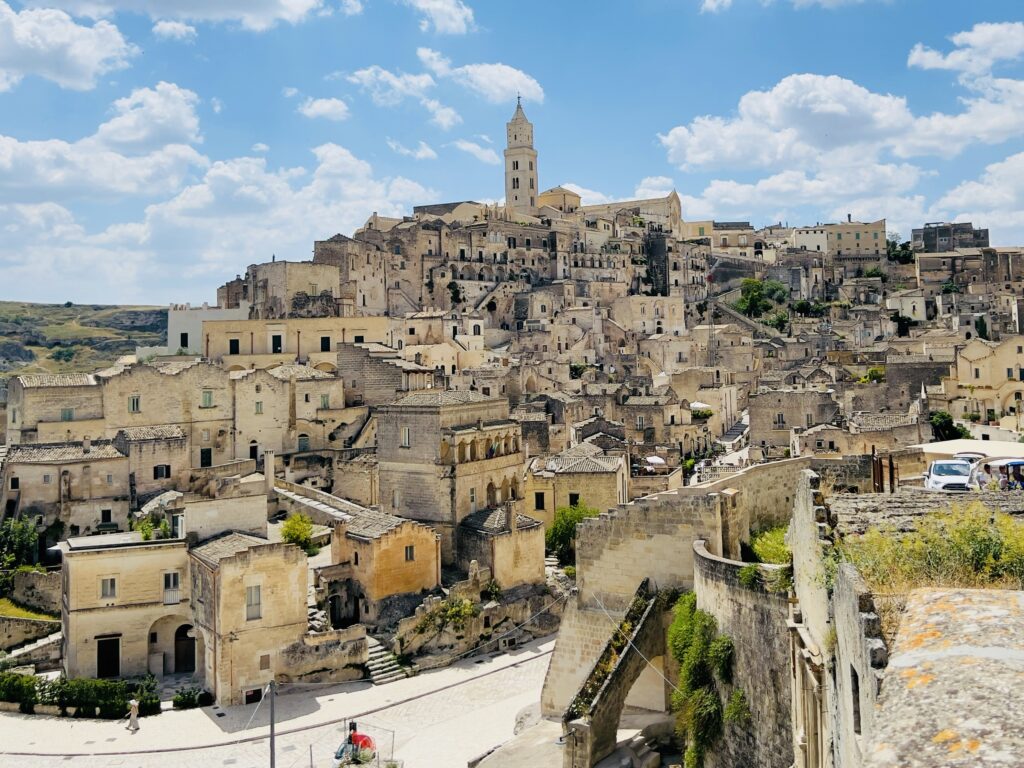
Set aside a full day to explore Matera, the extraordinary city of the Sassi in neighbouring Basilicata. Wandering its winding lanes and stairways is part of the experience – though it’s easy to take a wrong turn and end up on an unexpected detour. Don’t count on GPS here: in Matera’s multi-level maze, it’s as confused as we are!
We suggest a walking route that links the main sights of the Sassi, which can be covered in 2–3 hours depending on how long you linger. Streets are steep and uneven, so wear comfortable shoes and bring water and sunscreen.
Think of your walk in four stages:
- Piazza Vittorio Veneto → Piazza Duomo – a gentle climb, steeper near the cathedral.
- Piazza Duomo → Piazza San Pietro Caveoso – descending through the Sassi.
- Piazza San Pietro Caveoso → Piazza Pascoli – heading uphill again.
- Piazza Pascoli → Piazza Vittorio Veneto – more or less level.
You can start anywhere and walk in either direction. If you’re staying in the Sassi, beginning at Piazza San Pietro Caveoso and working your way up may make more sense.
What to see
- Casa Grotta nei Sassi di Matera – a simple but fascinating insight into cave life. The €5 ticket includes an audio guide you access on your smartphone.
- Gelateria I Vizi degli Angeli – unmissable. Try the lavender ice cream if it’s in season, or the Aperol Spritz ice lolly if you spot it.
Festival tip
Matera’s city festival takes place on 2nd July. The climax is the chaotic destruction of the festival float – a tradition dating back to the Saracen occupation, when locals preferred to smash their own religious icons rather than see them desecrated by invaders. It’s noisy, crowded, and unforgettable.
Transport & parking
Matera is served by the regional Ferrovie Appulo Lucane (FAL) line from Bari (about 90 minutes). Trains leave from the FAL station next to Bari Centrale in Piazza Aldo Moro. Some services split at Altamura, so you may need to change trains or be in the right carriage. The route passes through the dramatic Murge hills and towns like Altamura and Gravina. Tickets are sold at stations, machines, or local bars/newsagents.
Driving is faster: around 45 minutes from Bari Airport, under an hour from Bari Centrale, and about 1h15 from Taranto. From Lecce (via Brindisi and Taranto) allow around 2h15. Roads are mostly dual carriageway, though the stretch just after Taranto is a mix, and slow! After Massafra take the highway (SS100) or preferably the toll road (E843) for Bari. They run almost parallel, although the toll road is much quieter and costs around €6 to the Matera exit). From the Valle d’Itria we drive cross country through the Parco Naturale Regionale Terra delle Gravine, via Martina Franca and Mottola, a scenic route.
More
Discover Matera in depth with the Puglia Guys Matera city guide.
Trani
Known as the Pearl of the Adriatic, Trani makes a brilliant day trip from Bari, Barletta, or even the Valle d’Itria if you don’t mind a longer drive. This elegant port town combines a working fishing harbour with a refined seafront atmosphere — and some of the most beautiful Romanesque architecture in southern Italy.
What to see
- Cattedrale di San Nicola Pellegrino – Trani’s iconic waterfront cathedral, built in creamy local limestone, rises almost directly from the Adriatic. Its bronze doors and crypt are highlights, and the sea views from the square in front are unforgettable.
- Castello Svevo – Built by Frederick II, this sturdy fortress stands guard at the harbour entrance. Inside are exhibitions on Trani’s medieval history.
- Jewish Quarter – A reminder of Trani’s role as a medieval trading hub, with synagogues that survived conversion into churches.
- Harbour & Lungomare – Perfect for a stroll, watching fishermen bring in their catch, or stopping for a seafood lunch.
Food & drink
Trani is renowned for seafood. Local staples include crudo (raw fish and shellfish), fritto misto, and risotto ai frutti di mare. For a glass of something local, try Moscato di Trani, a sweet golden wine produced from nearby vineyards. You’ll find restaurant recommendations in our Puglia Guys Trani Guide.
Practical tips
Allow half a day to explore the main sights, but stay longer if you want a leisurely lunch by the harbour.
Trains from Bari take about 40 minutes, making Trani an easy excursion by public transport.
Driving is just as quick along the SS16, with parking available around the port and marina.
Polignano a Mare
Two to three hours includes eating time without swimming. Allow a half day to include bathing.
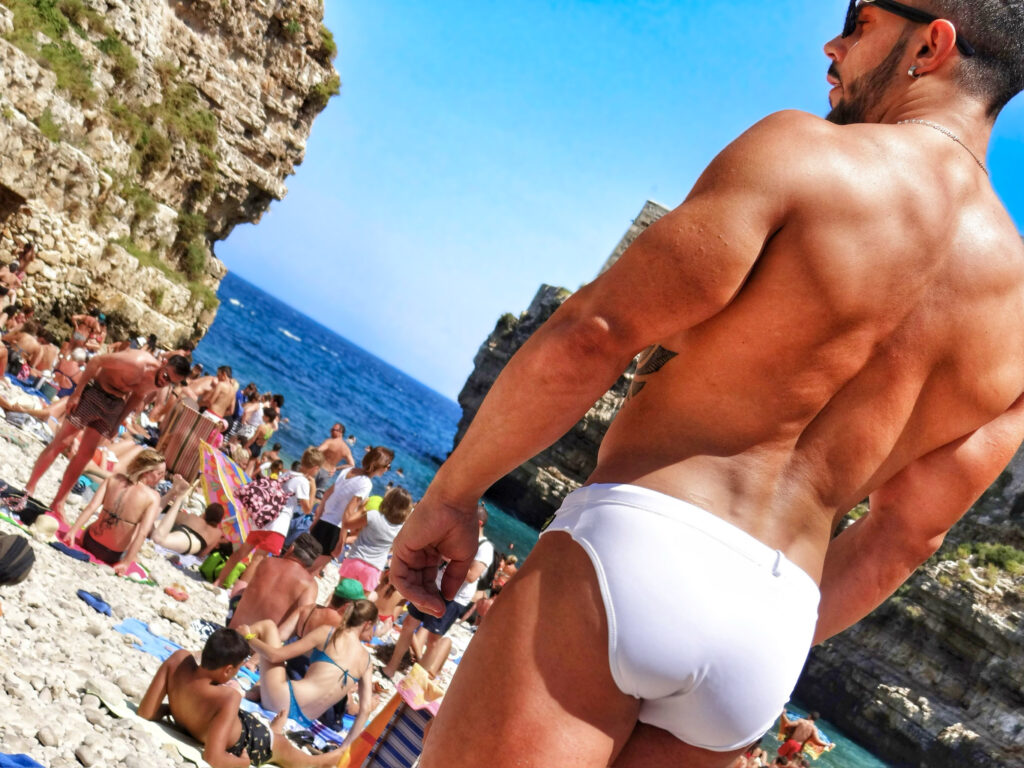
Polignano a Mare is famous for its dramatic clifftop setting and the iconic Lama Monachile beach. The smooth pebbles make it less comfortable for sunbathing, but nothing beats swimming out between the cliffs or into the cave beneath the old town — one of Puglia’s most unforgettable experiences.
How to combine it
From an Ostuni base, a perfect day trip runs: Alberobello in the morning (40 mins), lunch in Monopoli (25 mins), then Polignano (10 mins) for a swim, gelato, and coffee before heading back to Ostuni (40 mins via the Adriatic highway). Reverse the order if you want to swim before lunch.
From Bari, you can easily do the same loop — Alberobello first, then Monopoli, finishing in Polignano.
What to see
The best views of Polignano are:
- Ponte Borbonico su Lama Monachile – looking down onto the beach.
- Belvedere Terrazza su Lama Monachile – old town side, facing the cliffs.
- Belvedere Terrazza Santo Stefano – out across the Adriatic.
Take the steps on the far side of the bridge down to the water. Swimming here is unforgettable, though be warned: those pebbles are punishing for tender feet!
Where to eat & drink
- Lunch: Pescaria (Piazza Aldo Moro, 6/8) – famous for its seafood panini. Arrive before 12.30pm or after 2.30pm to avoid the queue.
- Gelato & Coffee: Mario Campanella “Il Super Mago del Gelo” (Piazza Garibaldi, 22). Try the house “special coffee” — it’s legendary.
Getting there by train
Polignano is on the Adriatic mainline (Trenitalia) between Bari, Monopoli, Ostuni and Brindisi, with frequent regional trains. Even if you have a car, we strongly recommend taking the train — especially in July, August, and September — when the town is crowded and parking can be stressful. The station is a 10-minute walk from both the old town and Lama Monachile beach, making it by far the easiest way to visit.
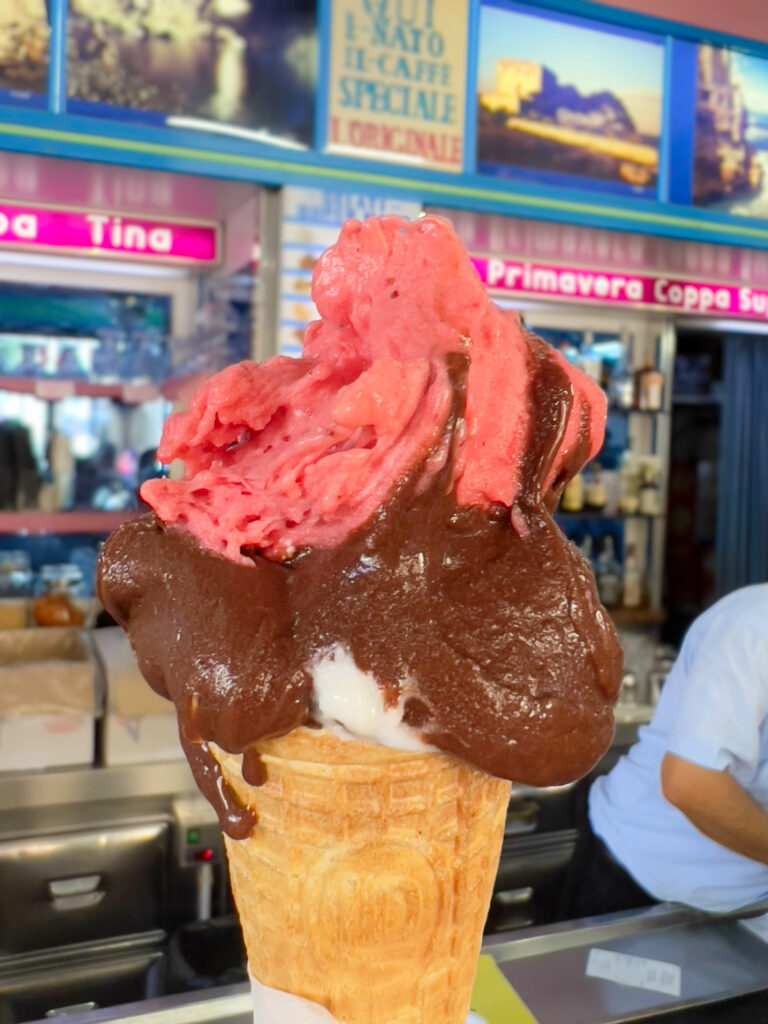
Parking
If you do drive, paid parking around Piazza Aldo Moro is central but often full. In that case, head up towards the railway station, where spaces are usually easier to find.
More
Discover Polignano in depth with our Puglia Guys city guide to Polignano a Mare – eat, swim, walk and shop.
Monopoli
Allow 2–4 hours to enjoy Monopoli, ideally including lunch.
What to do
Start in Piazza Giuseppe Garibaldi, one of the liveliest spots in town and a great place to eat — we like La Dolce Vita Ristorante. After lunch, wander the porto antico to Castello Carlo V, then follow the lungomare along the old sea wall. From Bastione Santa Maria, take the steps down to the seafront and continue past Bastione di Babula to reach Spiaggia Cala Porta Vecchia. From here you can loop back into the compact old town, or turn left to continue along the seafront.
Getting there by train
Monopoli is on the Adriatic mainline (Trenitalia), with frequent regional trains from Bari, Polignano, Ostuni, and Brindisi. Even if you’re driving, we recommend the train in July, August, and September, when the town is busiest and parking can be difficult. The station is about 10 minutes’ walk from the old town.
Parking
If you do drive, we usually park around Piazza Vittorio Emanuele II and walk into the old town. Look for blue lines (pay parking) or white lines (free, but check time limits). From the south, you can also drive straight to the city beaches and park at Parcheggio Pentima.
More
Explore further with our Puglia Guys Monopoli City Guide.
Alberobello
Allow around two hours to soak up Alberobello — enough time to see the highlights without being overwhelmed.
Many visitors leave feeling underwhelmed, put off by the crowds and heavy commercialisation. The authenticity and charm of trullo life has largely gone. And yet, no trip to Puglia feels complete without seeing Alberobello’s trulli — a UNESCO World Heritage Site and the region’s most famous image.
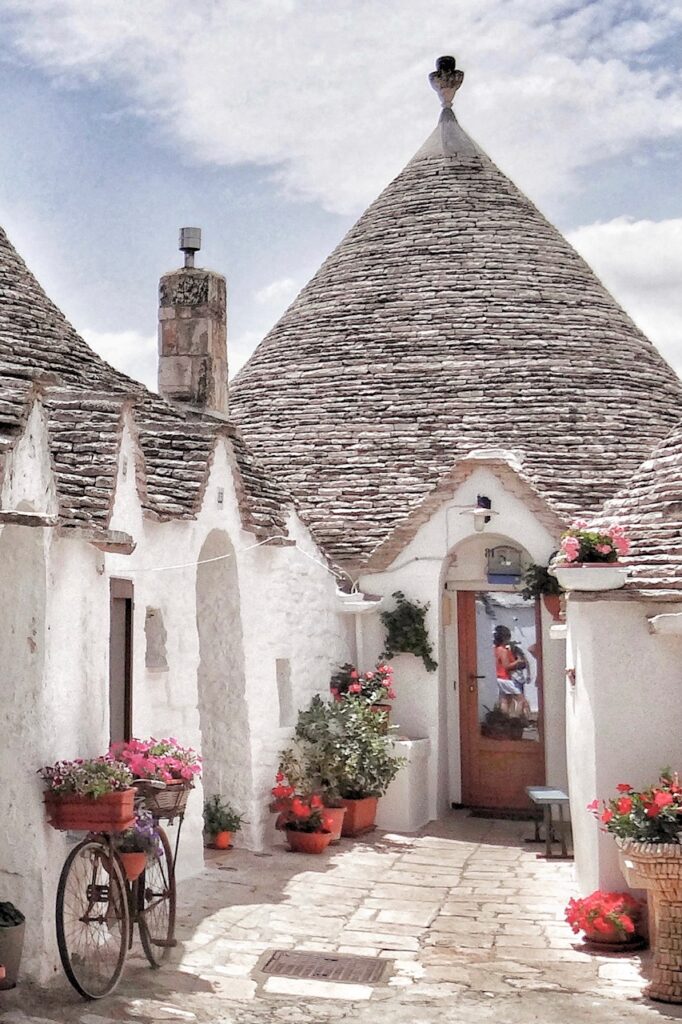
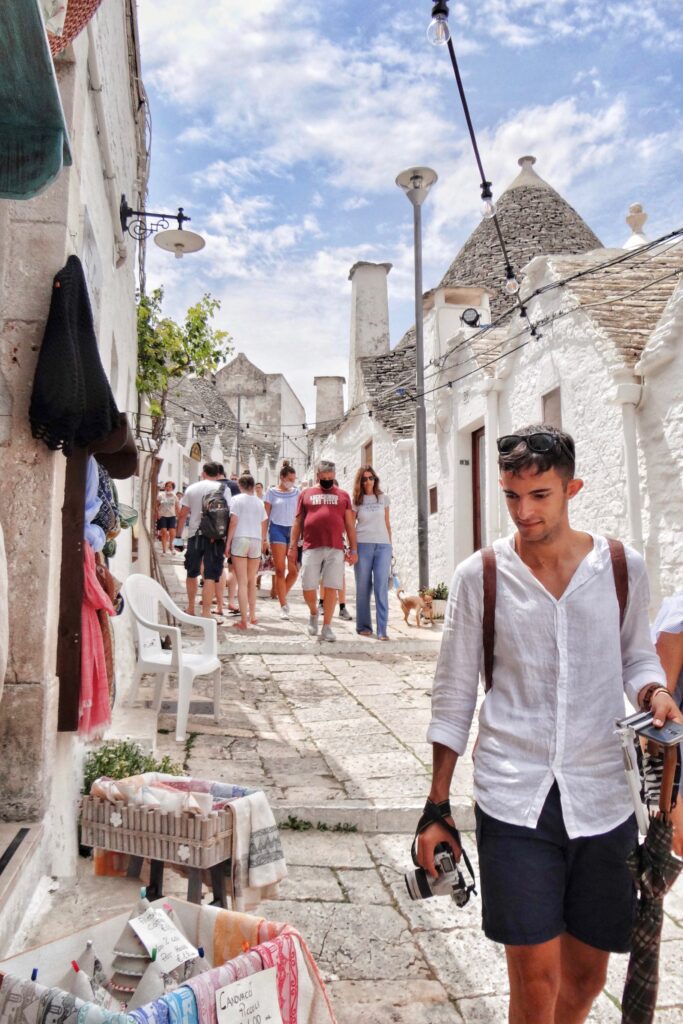
When to go
Most guides tell you to arrive early to avoid the crowds, but in reality there’s no escaping them — Alberobello fills with coach groups by mid-morning, and even early arrivals find themselves part of the throng. Our advice? Go when it suits you. Mid-morning or after 5pm works well, when the light is soft and the pace more relaxed.
What to see
- Rione Monti – the main trulli district, lined with souvenir shops. Commercial though it is, this is the Alberobello most visitors come for. Walk up Monte S. Michele (coffee and pastry at Martinucci Laboratory, Via Monte S. Michele 57), then continue across Monte S. Gabriele and Monte S. Marco. Job done.
- Rione Aia Piccola – cross Largo Martellotta and climb towards Piazza XXVII Maggio. This quieter district of restored trulli — many now B&Bs — keeps more of its original stonework and character. Wander Via Giuseppe Verdi, detour to Villa Tria on Via Colombo, and follow Via Galileo Galilei and Vico il Duca degli Abruzzi for glimpses of unrestored trulli framed by pine trees. This is the Alberobello that once inspired Pasolini.
Getting there by public transport
Alberobello is connected by the Ferrovie del Sud Est (FSE) train line, with services from Bari (around 1h40), Martina Franca (30 mins), and other Valle d’Itria towns. From Ostuni or Brindisi, the simplest route is usually via Bari or Fasano (train + bus). Services can be patchy, especially on Sundays, so check timetables carefully.
An alternative — and often more straightforward — option is the Trulli Link bus service from Bari, also operated by FSE. It departs from Bari Largo Sorrentino, on the far side of Bari Centrale opposite the main entrance, and takes just over an hour. The service shows up in searches on the Trenitalia/FSE website if you enter “Bari – all stations.”
Parking
If you’re driving, try the top end of Via Cavour (pay parking, blue lines) or turn up Via Cairoli for a chance at free parking (white lines — check time limits). At the other end of town, Parcheggio “Nel Verde” is a convenient paid lot, also suitable for camper vans.
→ For more detail on parking areas, see our Puglia Guys Alberobello Guide.
More’berobello
- Love Me Trulli – the story of Alberobello’s stone dwellings
- Trails of the Unexpected – the Puglia Guys guide to Alberobello’s secret spaces
- Our full Alberobello City Guide
Combo day trip: Alberobello, Monopoli & Polignano
From our Ostuni base, this is one of our favourite day trips. Start the morning with a scenic drive inland to Alberobello (about 40 minutes, passing through Cisternino and around Locorotondo, a lovely countryside route) and spend a couple of hours wandering among the trulli, with a stop there for coffee and pastries.
From there, head towards the coast – the road down to Monopoli (25 minutes) gives scenic views as you descend towards the Adriatic. Have lunch in the old town, then walk it off along the harbour, the defensive sea walls, and the narrow lanes.
In the afternoon, continue just 10 minutes up the coast to Polignano a Mare. Here we stop for gelato and Mario Campanella‘s “special coffee,” then walk down to Lama Monachile beach and around the clifftop balconies and for those iconic Adriatic views.
Finish with an aperitivo in Polignano’s old town – Piazza Vittorio Emanuele II is perfect for people-watching – before heading back to Ostuni (40 minutes). If you prefer, stay for dinner in Polignano and return later.
Locorotondo v1
Drive by.
Many of Puglia’s white towns have a similar feel, so there is no need to visit them all. You can drive around the front of Locorotondo when passing by en route to Alberobello or Cisternino to see why it takes that name.
Locorotondo v2
Compact, immaculate, and perfectly circular, Locorotondo is one of the prettiest towns in the Valle d’Itria. Its name means “round place” — a nod to the concentric layout of the old town, where narrow lanes wind around a hilltop lined with whitewashed houses and wrought-iron balconies overflowing with flowers.
Allow 1–2 hours to stroll, with time for a glass of local wine or coffee.
What to see
- Centro storico – wander the spotless lanes, framed by geraniums, laundry lines, and the pointed pitched roofs of the cummerse, the town’s characteristic narrow terraced houses.
- Chiesa Madre di San Giorgio – the neoclassical parish church, simple but striking in its hilltop setting.
- Belvedere – head to the panoramic terraces on the edge of town for sweeping views over the Valle d’Itria’s patchwork of vineyards, olive groves, trulli, and stone-walled fields.
Eat & drink
Locorotondo is at the heart of one of Puglia’s DOC wine zones, best known for its crisp white wines. Order a glass with lunch or at an enoteca in the old town. For a longer stop, book a wine tasting at a nearby cantina.
Getting there by public transport
Locorotondo is on the FSE railway line between Bari and Martina Franca, with connections to Alberobello and other Valle d’Itria towns. Trains are regular but slow; check timetables carefully, especially on Sundays. From Bari the journey takes around 1h45.
→ For more detail, see our Puglia by Public Transport Guide.
Parking
If driving, head for Via Martina Franca or Via Cisternino, where there are pay-and-display spaces just outside the walls. From here it’s an easy walk into the centro storico.
More Locorotondo
- Our Valle d’Itria itineraries, linking Locorotondo with Alberobello, Cisternino, and Martina Franca.
- Our Eat Puglia guide for enoteca and restaurant suggestions.
Cisternino
For lunch or dinner.
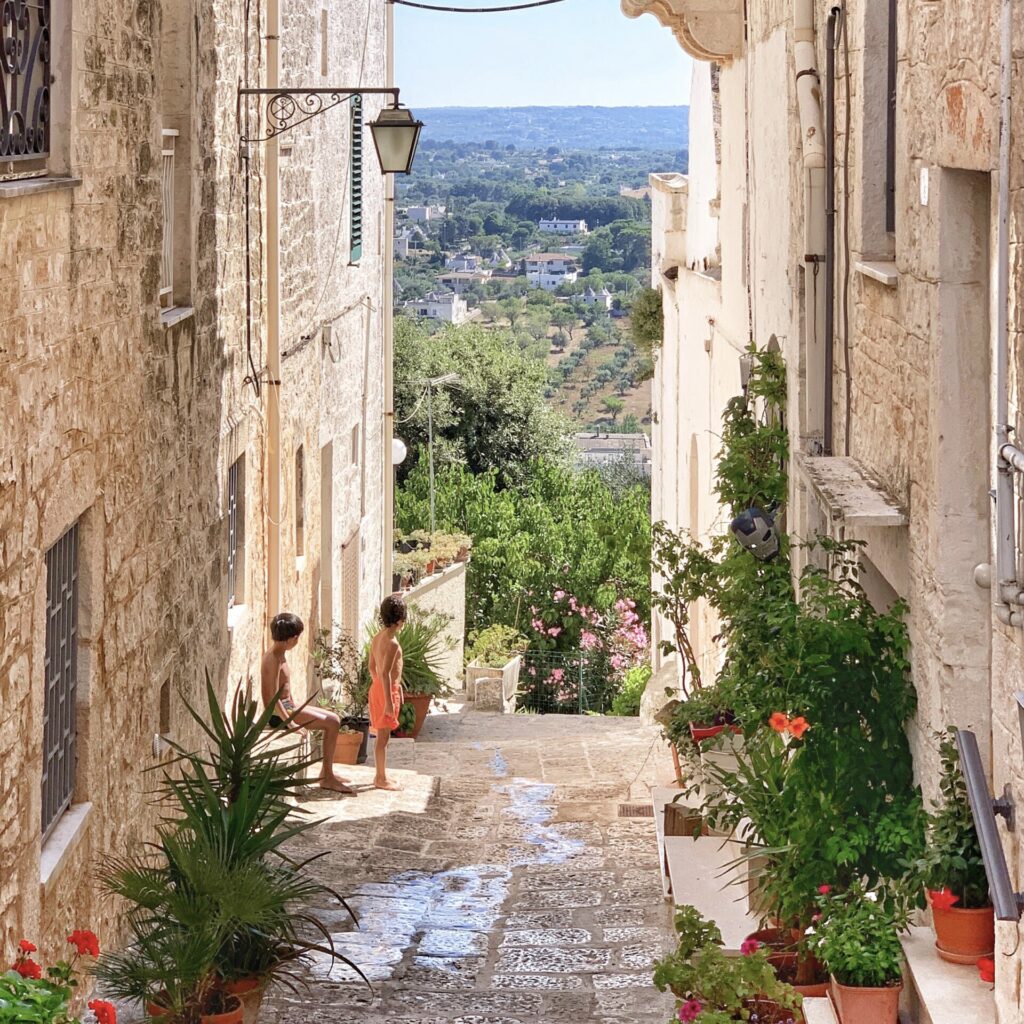
Perched on a ridge overlooking the Valle d’Itria, Cisternino is a small whitewashed town with a big reputation for food. It’s especially famous for its fornelli pronto – butcher shops that double as restaurants, where you choose your meat and have it grilled on the spot.
Allow 2–3 hours, ideally timed for lunch or dinner.
What to eat
The must-try dish is bombette – little pork rolls stuffed with cheese and herbs, cooked over the embers of the braceria grills. We like Al Vecchio Fornello, one of the most traditional spots in town.
What to do
After your meal, wander the compact centro storico with its narrow lanes and whitewashed houses. If you’re there during the day, stop at Cremeria History Vignola for coffee, a gelato, or a pastry, and enjoy the panoramic views across the valley.
Getting there by public transport
Cisternino has its own FSE (Ferrovie del Sud Est) commuter train station, just a few minutes’ walk from the old town, with services connecting Bari, Locorotondo, Alberobello, and Martina Franca. This makes it an easy stop if you’re exploring the Valle d’Itria by train.
Be aware that there is also a Cisternino Trenitalia station on the Bari–Brindisi main line, about 11 km from town, which is not convenient unless you arrange onward transport.
→ For more detail, see our Puglia Guys Public Transport Guide.
Parking
Pay parking is available just outside the historic centre, right by Cremeria History Vignola. If spaces are full, continue down Via Principe Amedeo and loop back around — you’ll usually find something.
More Cisternino
See our Eat Puglia guide for more braceria recommendations.
Combine with Locorotondo and Martina Franca for a full Valle d’Itria loop.
Martina Franca
The elegant baroque capital of the Valle d’Itria, Martina Franca is larger and grander than its neighbours. Its centro storico is a maze of whitewashed alleys punctuated by ornate palazzi, wrought-iron balconies, and churches with striking baroque façades. The town has a more local feel than Alberobello or Ostuni, and it’s an excellent place to experience Puglia’s everyday rhythms alongside its architectural splendour.
Allow half a day – morning or afternoon with lunch or dinner.
What to do
- Basilica di San Martino – the showpiece of the town, with a dazzling 18th-century baroque façade and richly decorated interior.
- Centro storico – lose yourself in winding lanes, passing the gates of the old town (Porta di Santo Stefano, Porta di San Nicola). Look out for noble palazzi like Palazzo Ducale, which hosts exhibitions and cultural events.
- Piazza Plebiscito – the heart of the old town, lined with cafés and overlooked by San Martino. Perfect for a coffee or aperitivo stop.
- Palazzo Ducale – originally a 17th-century ducal palace, today housing the town hall and exhibitions; check if any temporary shows are on during your visit.
Eat & drink
Martina Franca is known for its capocollo, a cured pork specialty with Slow Food recognition. You’ll find it on antipasto plates and in local butchers’ shops. For a sit-down meal, trattorie and osterie around the centro storico offer hearty Valle d’Itria cooking. See our Puglia Guys Martina Franca guide for restaurant recommendations.
Getting there
- By train: Martina Franca is served by the FSE (Ferrovie del Sud Est) network, but trains from Bari are rarely direct. They often involve a change at Putignano or Alberobello and take a meandering route through the Valle d’Itria. The station is about a 10–15 minute walk from the centro storico. It’s a scenic ride if you have time, but not the fastest option.
- By car: Around 30 minutes from Ostuni, 20 minutes from Alberobello, 45 minutes from Taranto, and just over an hour from Bari. Parking is easiest around Piazza d’Angiò or along Via Taranto, both a short walk from the historic centre.
Ostuni
The Città Bianca, or “White City,” is one of Puglia’s most photographed towns. Its whitewashed old town rises above a sea of olive groves that stretches down to the Adriatic, with winding alleys, stairways, and sweeping views.
Allow half a day to explore.
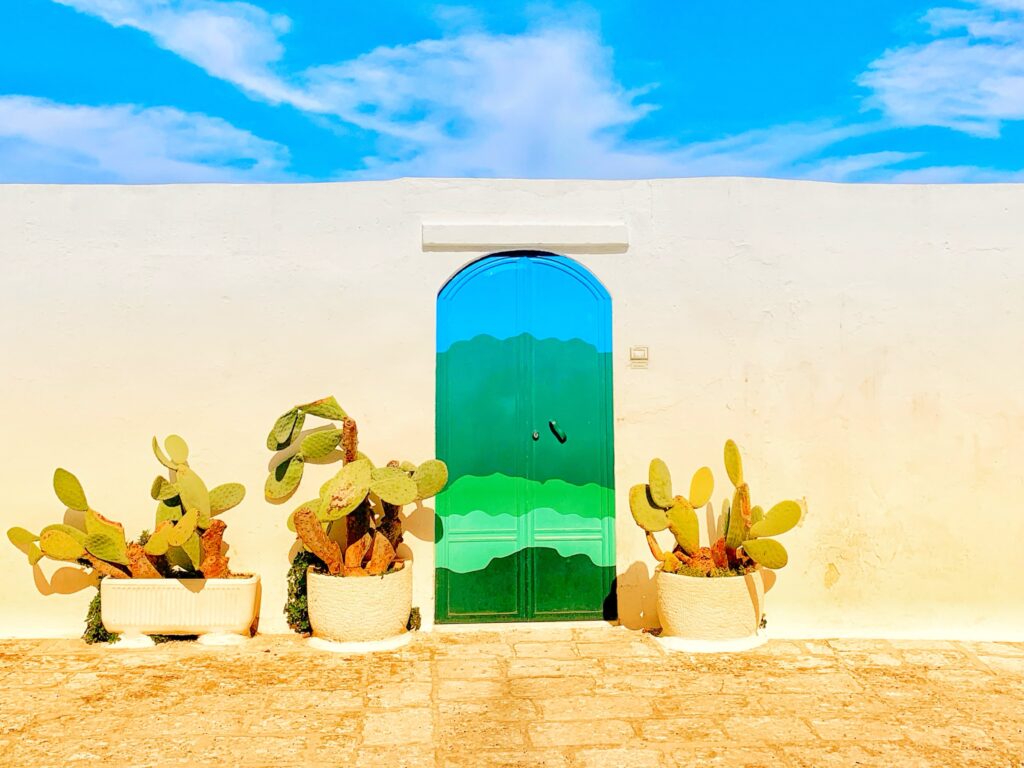
What to do
Start with lunch at the excellent family-run Osteria Ostuni Bistrot on Piazza della Libertà. Be careful not to confuse it with the neighbouring Petit Bistrot (formerly Pizzeria Codice a Barre) — it’s Ostuni Bistrot you’re after.
From here, climb into the centro storico. Explore the maze of whitewashed alleys as you make your way up to the Cattedrale di Santa Maria Assunta and pass under the graceful Arco Scoppa.
Have a gelato at the corner gelateria by the cathedral, then continue through the narrow streets to Ostuni’s best-known viewpoints:
- The panoramic terrace over the olive groves.
- La Porta Blu — a private rental apartment with a blue door that has become Ostuni’s most photographed selfie spot.
For an afternoon aperitivo, we like Borgo Antico Bistrot — tables here have wonderful views, and prices are fair given the location. From La Porta Blu you can either:
- Turn left and head down to the Chiesa Rettoria di Santa Maria della Stella, then walk along Viale Oronzo Quaranta, following Ostuni’s old defensive walls.
- Or loop back through the alleys to Via Cattedrale and descend to Piazza della Libertà.
Getting there
Ostuni is on the Adriatic mainline (Trenitalia) between Bari and Brindisi/Lecce, served by frequent regional trains (about 50 minutes from Bari, 20 minutes from Brindisi, and 1h10 from Lecce).
The station is approximately 3 km from the old town. From here:
- Bus: the local shuttle runs between the station and Ostuni’s historic centre (at Parcheggio Tenente Specchia). It’s timed with some trains, but not all – check our Puglia Guys Ostuni Guide which has posted timetables and links.
- Taxi: taxis usually wait outside the station; the ride into town takes about 5 minutes. If none are available, you may need to call one (numbers are included in our Ostuni Guide).
- On foot: it’s technically walkable in 30–40 minutes, and many do. But the road is busy and the climb steep – and even though a dedicated pedestrian route has been included as part of a road and station upgrade, we don’t recommend it.
Parking
Parking in Ostuni can be tight in summer. We usually look in Via Giosuè Pinto, just below the centro storico and around Parco Rimembranze. From there it’s a short walk up (or down) to Piazza della Libertà. There are also larger pay car parks on the edge of town. See our Puglia Guys Ostuni Guide for more details.
More Ostuni
- Eat like a local: our Ostuni city guide has recommendations.
- Our full Puglia Guys Ostuni City Guide with shopping, beaches, and where to stay.
Ceglie Messapica
With an attractive town centre and a centro storico that feels less curated for tourists and more lived-in, Ceglie Messapica offers a different flavour to neighbouring Ostuni. It’s one of the Valle d’Itria’s lesser-visited towns for foreign tourists, though Italians know it well for its culinary excellence.
One of the oldest towns in Puglia, Ceglie’s roots stretch back over 2,000 years, with fragments of its ancient Messapian walls still visible. Today, it’s best explored slowly, with time set aside to enjoy a meal — from humble osterie to acclaimed restaurants.
Allow half a day, ideally timed for lunch or dinner.
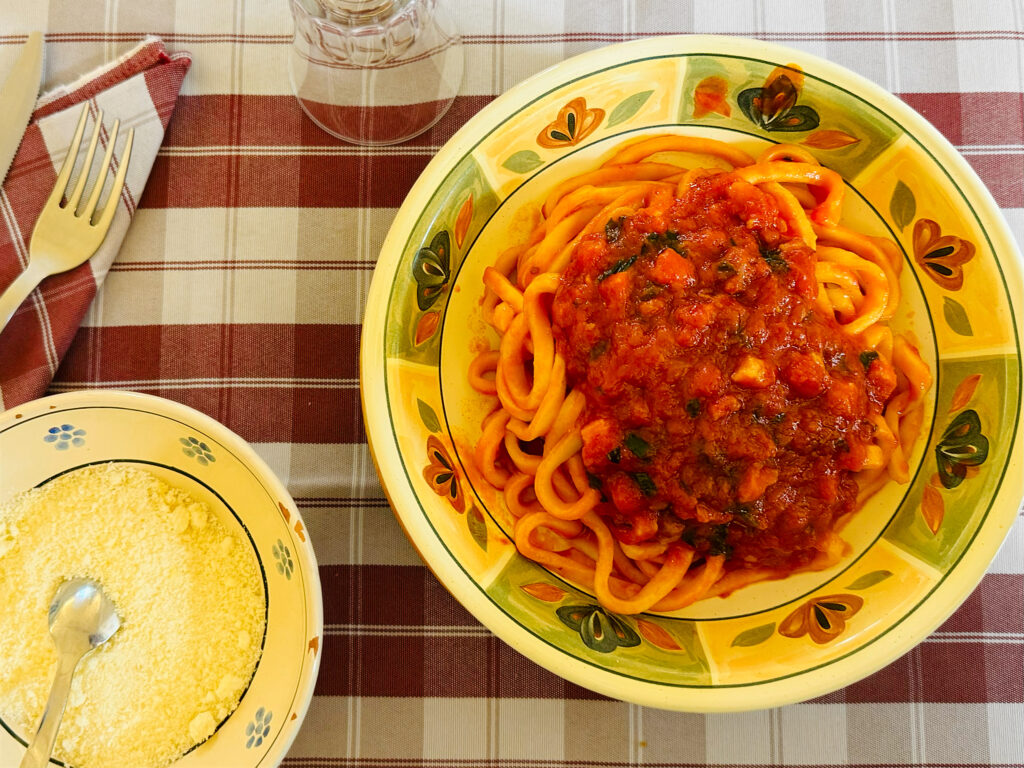
What to do
- Centro storico – wander the tangle of whitewashed lanes, small piazzas, and quiet corners. The atmosphere is authentic, everyday, and less manicured than nearby towns.
- Castello Ducale – the restored ducal castle dominates the old town, with exhibitions and cultural events.
- Chiesa Matrice di Santa Maria Assunta – rebuilt in the 18th century on the site of an earlier Norman church.
- Messapian walls – fragments of the ancient fortifications are still visible just outside the centre.
Eat & drink
Ceglie is renowned for its food. Look for traditional trattorie and innovative restaurants that have made the town a local gastronomic hub. Don’t miss:
- Biscotto di Ceglie – an almond pastry filled with cherry or grape jam, recognised as a Slow Food product.
- Restaurants range from Michelin-starred to humble osterie; many celebrate the town’s long-standing culinary traditions.
Getting there
- By train: Ceglie Messapica is on the FSE (Ferrovie del Sud Est) line linking Martina Franca and Francavilla Fontana, with onward connections to Bari, Brindisi, and Lecce. From Lecce, change at Francavilla; from Bari, change at Martina Franca. The station is about 1 km from the historic centre — an easy 10–15 minute walk.
- By bus: From Ostuni, the FSE bus departs from Viale dello Sport and takes around 15 minutes. The bus stops near the hospital, just outside the historic centre.
- By car: Ceglie is about 20 minutes from Ostuni, 40 minutes from Brindisi, and just under an hour from Bari. Parking is available around the edge of the centro storico; look near Via San Rocco or Via San Lorenzo.
More Ceglie Messapica
- Eat Puglia: our recommendations for trattorie and restaurants.
- Read our Puglia Guys Ceglie Messapica City Guide.
Carovigno
For aperitivo and dinner.
A worthwhile change of scenery if you’re staying in nearby Ostuni, Carovigno has a charming old town with restaurants that punch well above their weight. It’s less visited by international tourists, giving it a more relaxed, local feel.
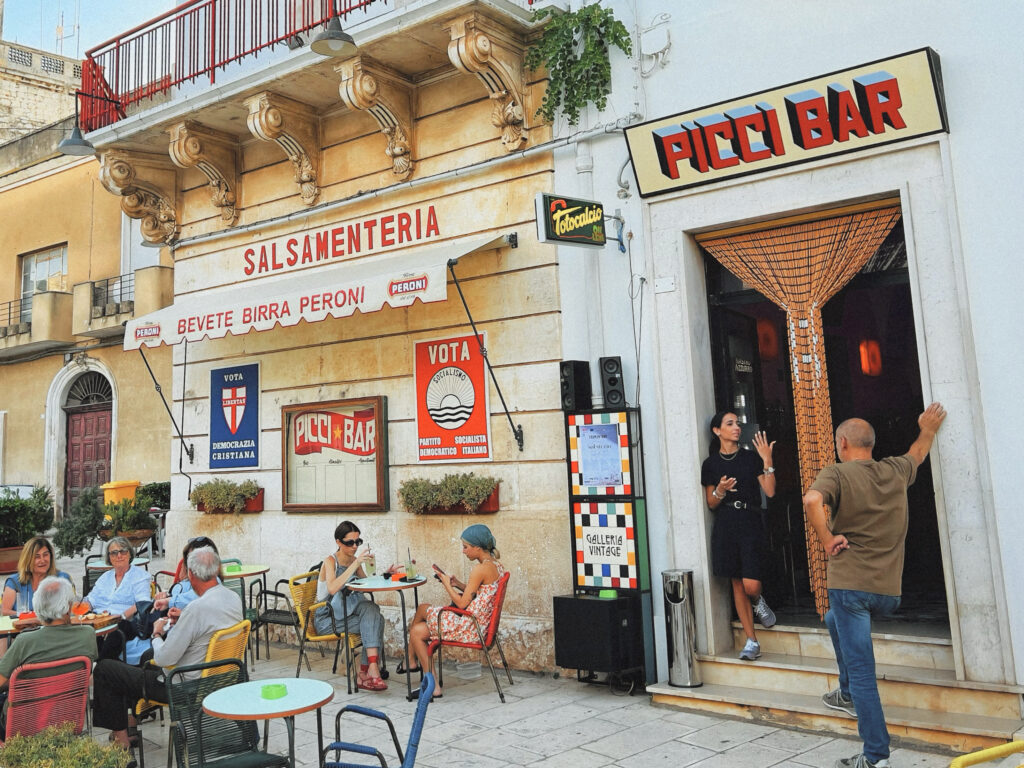
Come in the evening for aperitivo and dinner. Start with drinks at the very lovely – and much Instagrammed – Picci Bar, tucked into the old town’s atmospheric streets. Afterwards, you’ll find plenty of excellent restaurants where the cooking rivals (and often outshines) Ostuni’s better-known dining scene.
Getting there | Just 10 minutes by car or taxi from Ostuni. Carovigno also has an FS station on the Bari–Brindisi line, though it sits about 5 km from the town centre, so you’ll need a bus (see here for services – infrequent) or taxi to connect.
Parking | Use the central pay car park here. You can often park in the adjacent streets, where blue lines mean pay parking and white lines are free (check for local restrictions).
Check out the Puglia Guys Carovigno guide for the best restaurants and bars in Carovigno.
Brindisi
Half day – history, harbour, and a walk through time
Once one of the busiest ports in the ancient world, Brindisi was a hub of Roman naval power and maritime trade. The Via Appia ended here, Crusaders departed from here, and for eight months during the Second World War, Brindisi was even Italy’s capital. Today it is much less visited than Bari or Lecce, but no less fascinating – and all the easier to reach thanks to its central location on the Trenitalia Adriatic line, almost halfway between the two. The railway station sits right on the main boulevard Corso Umberto I, an attractive palm-tree lined avenue leading you straight down to the port and lungomare.
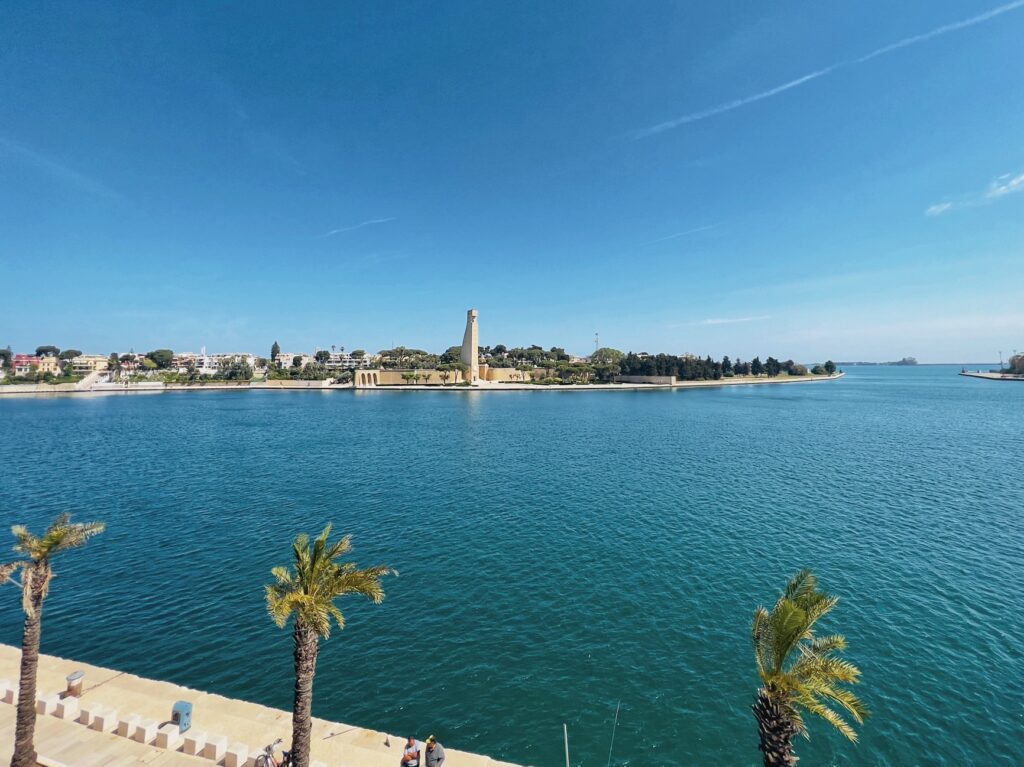
What to do
- Lungomare – Brindisi has a relaxed, understated seafront promenade. From here you can hop on a boat taxi across the harbour to the striking National Sailor Monument.
- Roman Brindisi – see the Colonne Romane, the twin columns that once marked the end of the Appian Way. One survives intact; near them stood the house of Virgil, whose name plate is still there.
- Museums – the Museo Archeologico Francesco Ribezzo (by the Duomo) houses an excellent collection of antiquities. The Palazzina del Belvedere offers both a panoramic terrace and the Collezione Archeologica S. Faldetta.
- Architecture & Monuments – wander via the Fascist-era Fontana Vittorio Emanuele III (Fontana Grassi), then up to Piazza Santa Teresa for the monument to the fallen.
Eat & Drink
- For morning coffee, pastries or afternoon gelato: Betty – Gelateria Café Ristorante Pizzeria.
- For lunch: La Locanda del Porto on the lungomare.
- For a lighter meal or pizza, head to Brunda Pizzeria on Piazza Dante, a local favourite.
Getting there
Brindisi is one of the easiest towns in Puglia to visit by public transport. Its central railway station is on the main Bari–Lecce line, and from there it’s an easy 10–15 minute walk down Corso Umberto I to the port.
More | the Puglia Guys Brindisi city guide.
Lecce
One full day – late breakfast, lazy lunch, and Baroque beauty
Start with a typical Lecce breakfast on the main piazza: a warm pasticciotto (custard-filled pastry) and a caffè leccese(iced coffee with almond syrup). Prefer savoury? Go for a rustico leccese, puff pastry filled with béchamel, tomato, and mozzarella.
Spend the morning wandering the historic centre – a Baroque maze within city walls built by Emperor Charles V in the 16th century to guard against Turkish invasions. The centro storico brims with restaurants, lively bars, and independent boutiques.
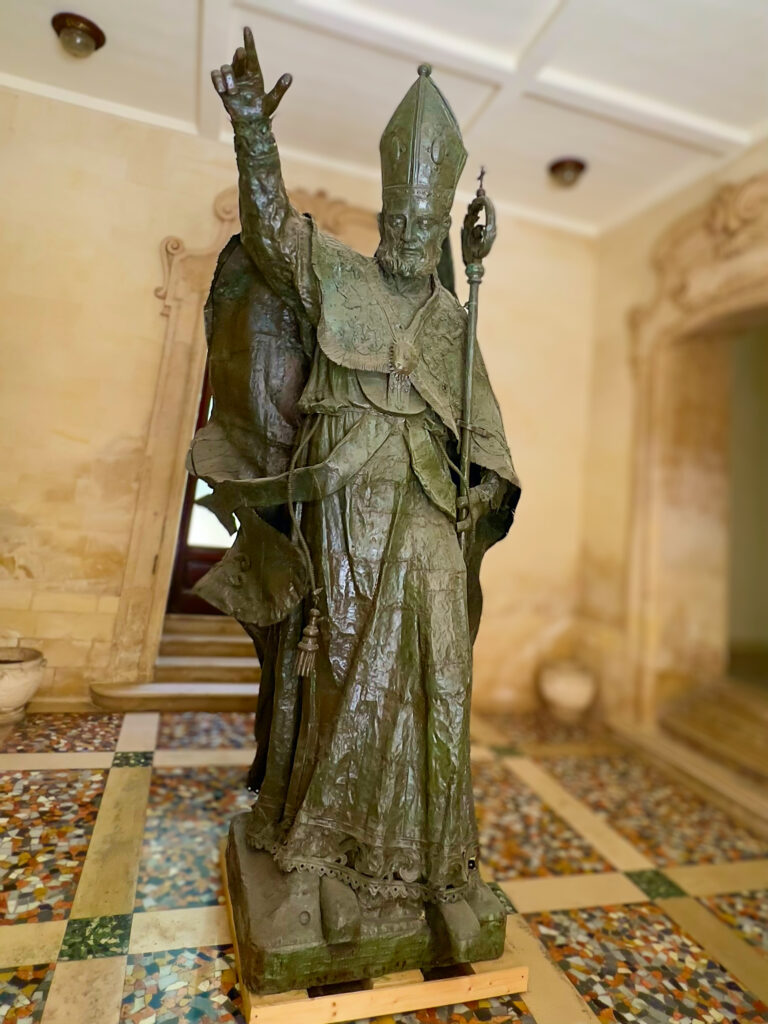
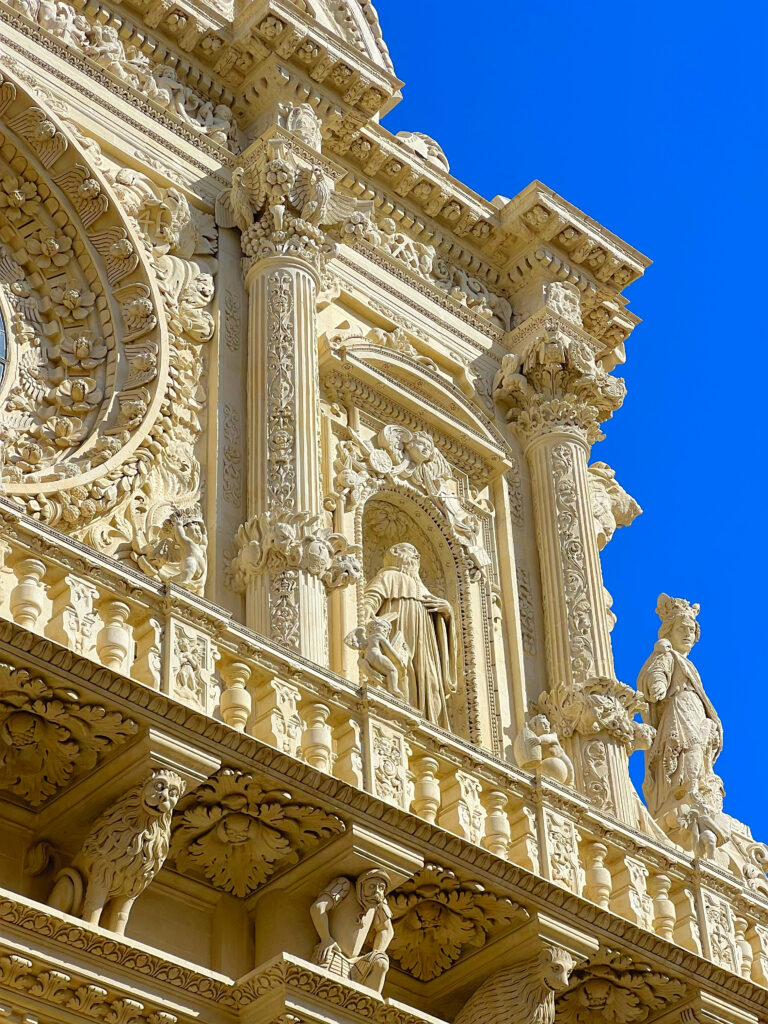
Highlights
- Up! panoramic lift (new in 2024): an elevator beside the Duomo bell tower, offering sweeping views of Lecce.
- Piazza Sant’Oronzo: admire the Sant’Oronzo Column and the sunken Roman amphitheatre (currently under restoration for improved access). The saint’s statue has been moved to the municipality building on Via Francesco Rubichi.
- Basilica di Santa Croce: Lecce’s most famous church, a dazzling showcase of carved Baroque detail.
Eat & Drink
Lecce is best enjoyed slowly: linger over lunch in the centro storico, whether at a traditional trattoria or a modern kitchen. For aperitivo, join locals in the piazzas as the evening unfolds. Lecce has so many places we love to eat. We list them in the Puglia Guys Lecce city guide.
Getting there
Lecce is the southern terminus of the Trenitalia Adriatic line (Bari–Brindisi–Lecce), making it easy to reach by train from other bases. Trains are frequent, reliable, and avoid the hassle of parking in the busy old town.
Parking
If you’re driving, the best option is to park outside the historic centre and walk in. We usually park around Giardini Guiseppe Garibaldi or on the streets around Villa Reale (blue lines = paid parking; white = free, though check for time limits). From there it’s an easy stroll into the centro storico. Our Lecce city guide has more detailed information.
Puglia itinerary | combo day trips From Lecce
Lecce & the Adriatic coast
If you want to add a coastal adventure to your Lecce day, head east to the Adriatic. In under 20 minutes you can reach San Cataldo, Lecce’s local seaside escape. From there, follow the coast south:
- Grotta della Poesia – a spectacular natural sink hole near Roca Vecchia. A protected archaeological park and despite the images you might see, swimming and bathing are banned. Please respect this, to preserve the site.
- Baia dei Turchi – one of Salento’s loveliest beaches, named after the Turkish raids of the 15th century.
- Otranto – finish the day in this whitewashed coastal town with its stunning cathedral (don’t miss the mosaic floor and chapel of the skulls).
This route pairs Lecce’s Baroque splendour with the dramatic Adriatic coast, giving you both city and sea in one day.
If time allows, enjoy dinner in Otranto before looping back inland to Lecce.
Lecce, Galatina & Gallipoli
From Lecce, head inland first to Galatina (about 30 minutes). The town is famous for its Basilica di Santa Caterina d’Alessandria, with extraordinary 15th-century frescoes often compared to Giotto. Galatina is also the birthplace of pasticciotto, so don’t miss trying one fresh from the oven.
Continue west to the Ionian coast and the lively seaside town of Gallipoli (about 40 minutes). Cross the bridge into the old town on its fortified island, explore the cathedral, wander the narrow streets, and walk the lungomare with its sea views. For lunch, try one of the seafood trattorie tucked into the centro storico.
On the way back to Lecce, stop at Nardò if time allows — a Baroque gem with a relaxed local atmosphere and a handsome piazza, far less visited than Lecce itself.
This loop gives you a mix of inland art and history with Ionian coast charm, all in one easy day from Lecce.
Lecce, Nardò & Porto Selvaggio / Santa Maria al Bagno
From Lecce, drive about 30 minutes to Nardò, a compact Baroque town with an elegant piazza and a quieter, more local feel than Lecce. It’s the perfect place for a coffee break and a short wander.
Continue a little further to the coast for Porto Selvaggio, a protected natural park of pine forest and rocky coves — bring walking shoes if you want to hike down to the water, or just stop for the sweeping sea views. Nearby, the seaside village of Santa Maria al Bagno makes a laid-back lunch stop, with tables overlooking the Ionian.
After a relaxed afternoon, you can either return directly to Lecce or continue south along the coast before looping back inland.
Grottaglie
Grottaglie – half day
You’ll see ceramics all over Puglia, but Grottaglie is the heart of the tradition. For centuries, its artisan potters have produced both everyday tableware and collector’s pieces — some even supplying big-name retailers abroad. The “Quartiere delle Ceramiche” is still alive with workshops, where you can browse, buy, and often meet the makers themselves.
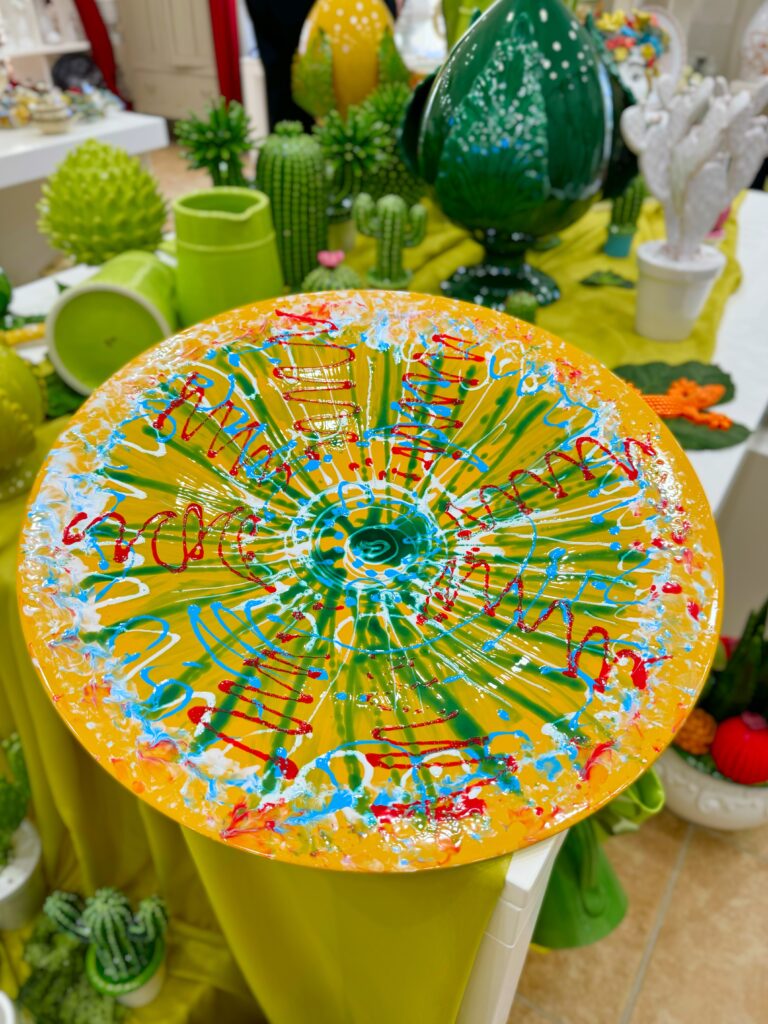

What to Do
- Explore the ceramics quarter – Visit artisan workshops to pick up reasonably priced, functional souvenirs or investment pieces. We regularly shop at:
- Nicola Fasano (FasanoCeramiche srl) – distinctive, beautiful pieces; smaller items remain good value, while larger ceramics are more of an investment.
- Antonio Fasano – known for bold green tones and elegant forms, his work is on the higher end but worth it.
- Cretaglie – excellent value, especially for espresso sets and plates. We often choose face mugs and dishes as quirky gifts.
- Bar delle Ceramiche – perfect for coffee and a sweet break; they usually make their own pasticciotti with rich, creamy filling.
- Stroll the centro storico – Recently renovated in parts, but still with plenty of lived-in character. Grottaglie also has striking street art, thanks to its local art school.
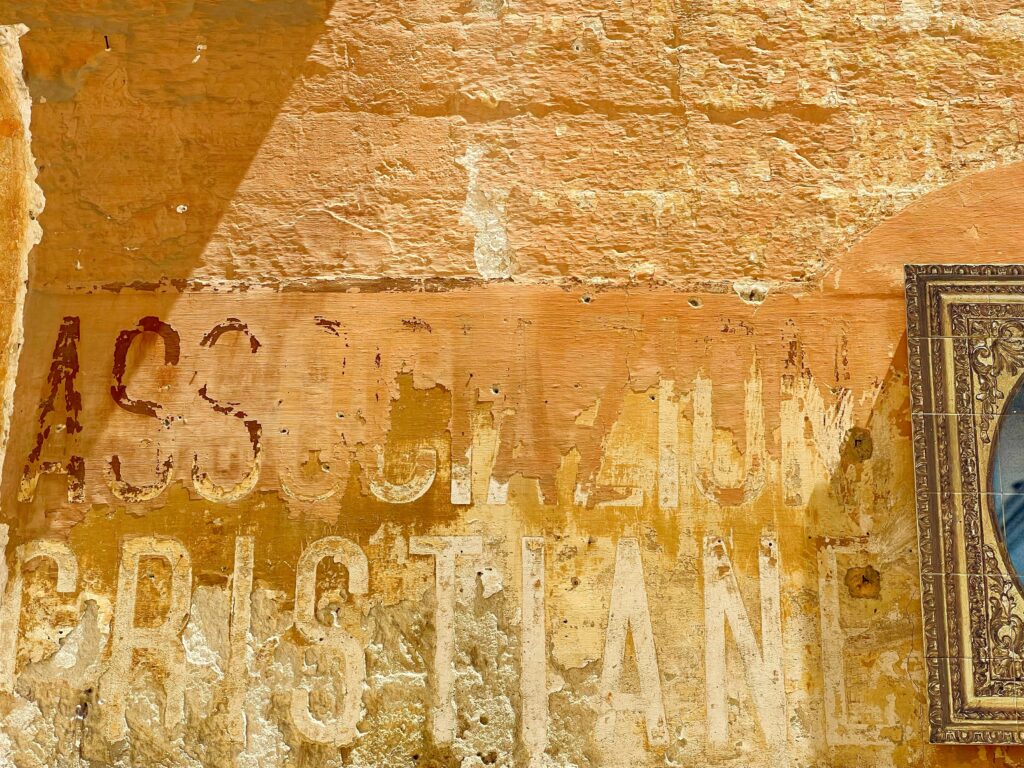
Where to Eat
Two favourites we return to:
- Macchiaviva Bistrot | Via Cavour 13 | +39 099 450 4695
Our go-to in Grottaglie. Sisters Anna (front of house) and Loredana (kitchen, alongside their mama Carmela) serve thoughtful Puglian cuisine with excellent desserts. Local ingredients and carefully chosen wines complete the picture. - Trattoria La Luna nel Pozzo | Via L. da Vinci, 4 | +39 373 784 2289
A husband-and-wife team serve delicious, traditional dishes in the slow food tradition. Warm, unpretentious, and deeply satisfying.
Getting There
- By train/bus: Grottaglie has its own FS station on the Taranto–Brindisi line, making it easy to reach from either city. From Bari or Lecce, change at Taranto or Brindisi. From the station it’s a 10–15 minute walk into the ceramics quarter and old town.
- By car: Grottaglie is just off the SS7 (Taranto–Brindisi highway), about 25 minutes from Taranto and 40 minutes from Brindisi.
Parking
There’s free street parking (white lines) around the old town and ceramics quarter, though spaces can be limited. A more straightforward option is the municipal free car park right inside the ceramics quarter, and the adjacent Parcheggio Largo dell’Accoglienza (also free), both well signposted and easy to access – ideal if you’re coming specifically to visit the workshops.
More
See the Puglia Guys Guide to Grottaglie for more on its ceramics heritage, and art.
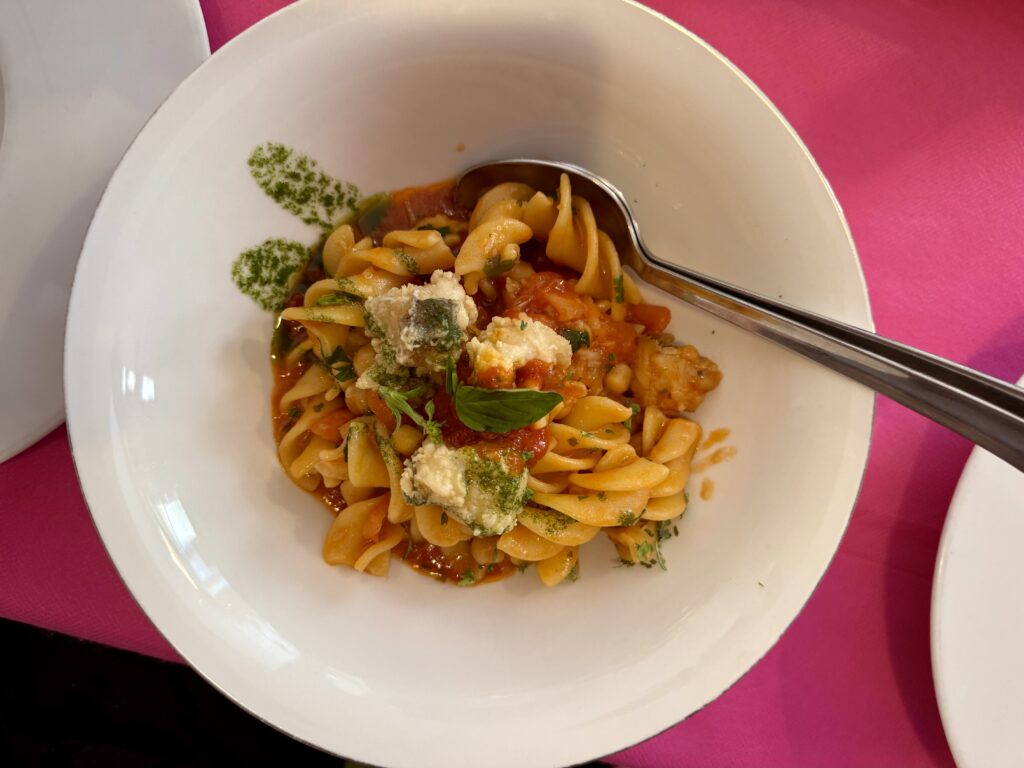
Taranto
A half day to explore Taranto’s borgo antico, including lunch (or dinner).
A visit to Taranto’s borgo antico (old town) is raw, gritty, and unforgettable. Once a great Greek and Roman city, today much of the old quarter is crumbling — yet that’s part of its power. Among the decay are extraordinary fragments of history and some of the region’s best seafood restaurants.
What to See & Do
- Duomo di San Cataldo – step inside to see the stunning marble-encrusted 17th-century apse, one of Puglia’s hidden gems.
- Streets of the borgo antico – wander through alleyways where daily life unfolds, and where whole houses can still be bought for €1.
- Quayside life – follow the trail of water drips down to the boardwalks, where fishermen sell their catch straight off the boats.
Eat: Cozze Tarantine
Taranto is famous for its farmed mussels (cozze tarantine). Served raw with lemon, or steamed in a simple broth, they’re a local obsession. Many of the city’s best restaurants specialise in seafood — freshly landed, prepared simply, and eaten within sight of the sea. For our restaurant recommendations, see our Taranto city guide: troubled Taranto and the beauty underneath.
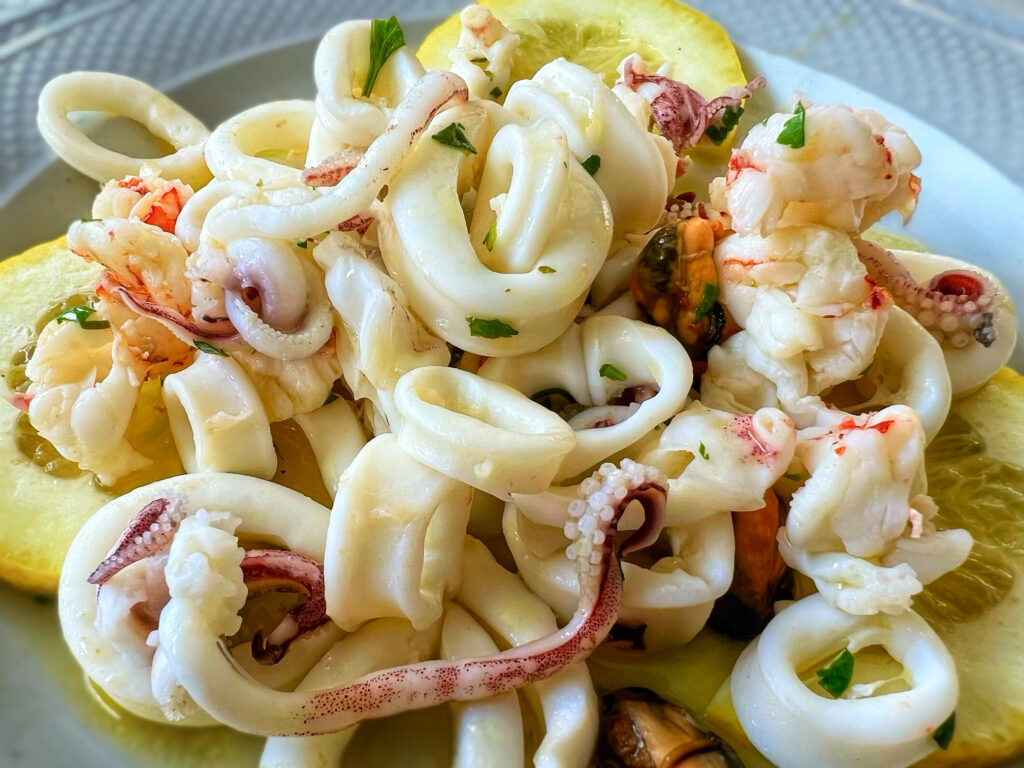
Getting There
- By train: Taranto is well connected to Bari, Brindisi, and Lecce. The Trenitalia station is only minutes from the edge of the borgo antico, making it easy to explore the old town on foot.
- By car: Taranto sits at the junction of the SS7 (from Brindisi) and SS106 (Calabria). From Brindisi take the Croce exit. From Bari it’s around 1 hr 20 min, from Brindisi 1 hr, and from Lecce about 1 hr 30.
Parking
The borgo antico is best approached with a plan:
- Aim for Piazza Fontana or the car parks on Via Cariati/Via Garibaldi.
- First time around, don’t attempt a full circuit of the borgo antico. Instead:
- Drive in through Piazza Fontana and continue along Via Garibaldi.
- You’ll come out by the port; turn left down Via Cariati. This will bring you back to where you started.
- If you haven’t found a spot by then, pass round Piazza Fontana this time and follow Corso Vittorio Emanuele II all the way round to the far end of the borgo antico, then head down from the top of Via Garibaldi to access the car parks easily.
More
See the Puglia Guys Taranto city guide: Troubled Taranto and the Beauty Underneath for our restaurant picks and deeper dives into its history.
Gallipoli
Gallipoli makes an ideal full-day trip, rewarding you with history, beaches, food, and some of the most spectacular sunsets in Salento.
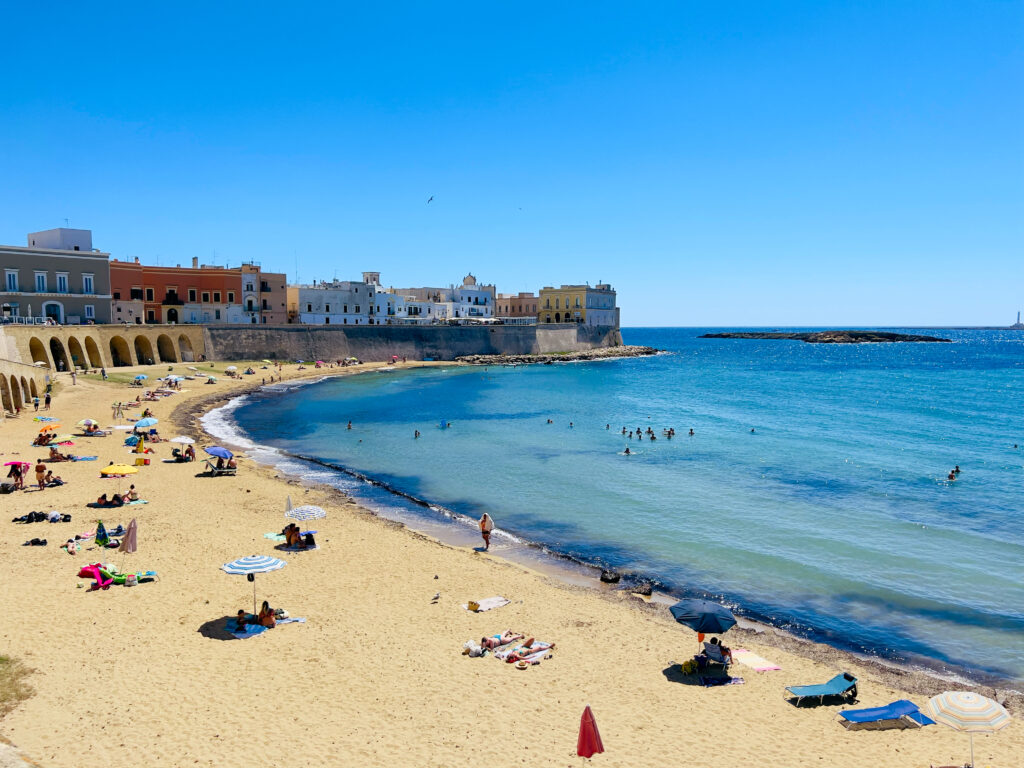
Spend the morning wandering the borgo antico, its maze of narrow alleys and sun-bleached courtyards perched on an island connected to the mainland by a 17th-century bridge. Pause to watch fishermen mending nets or weaving baskets along the port, a reminder that this is still very much a working town.
Spiaggia della Purità, the sandy city beach tucked into the old town walls, is the perfect spot for a swim or lazy afternoon under the Salento sun. Later, as the light softens, the lungomare and seafront terraces become front-row seats for Gallipoli’s legendary sunsets. Few experiences in Puglia rival watching the sun slip into the Ionian with a glass of local wine in hand.
Where to eat
- Trattoria La Puritate | Rustic, unfussy, and beloved by locals, right above Spiaggia della Purità. Order the house linguettine alla Puritate (small linguine with prawns, courgette strips, and cherry tomatoes) and the dramatic gamberoni al sale. | Via Sant’Elia, 18 | trattorialapuritate.it
- Ristorante Il Bastione | A family-run gem with a terrace overlooking the sea. Perfect for a romantic sunset dinner. | Riviera Nazario Sauro, 28 | ilbastionegallipoli.it
For more eating recommendations check out our Puglia Guys Gallipoli City Guide.
Getting there by public transport
Gallipoli is connected to Lecce by the Ferrovie del Sud Est (FSE) regional train, which takes about 1 hour 20 minutes. The station is a short walk from the old town. Buses also run between Lecce and Gallipoli, sometimes faster depending on the schedule. From Bari or Brindisi, change in Lecce for onward connections. Timetables and further information can be found in our Puglia Guys guide to public transport in Puglia.
Parking
Driving into the old town itself is restricted. Instead, park adjacent to it in the Parcheggio Porto Gallipoli (free and pay parking in spaces). Pay parking (blue lines) is also available along the seafront and around Piazza Aldo Moro (by the bridge to the old town). Directions and fuller information on parking for Gallipoli can be found in our Puglia Guys Gallipoli City Guide.
Otranto — a day by the sea and history
Otranto is where east meets west — a port city shaped by Greek, Byzantine, Norman and Aragonese influences. It’s also one of Salento’s most enticing destinations for combining beach time with history and culture.
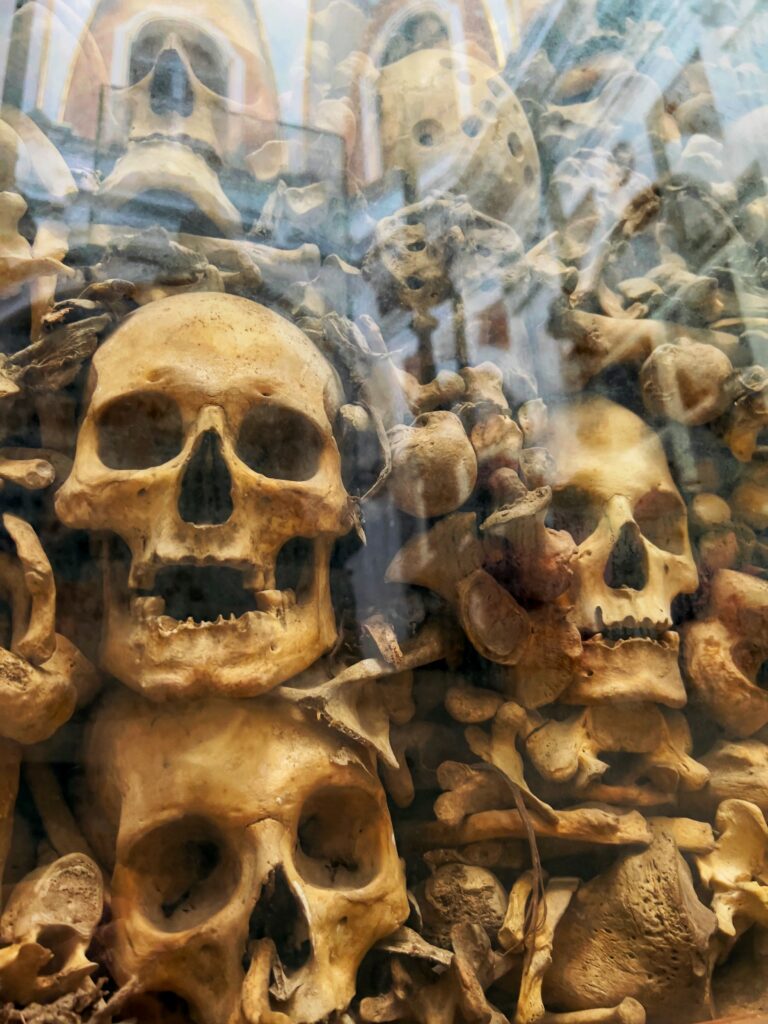
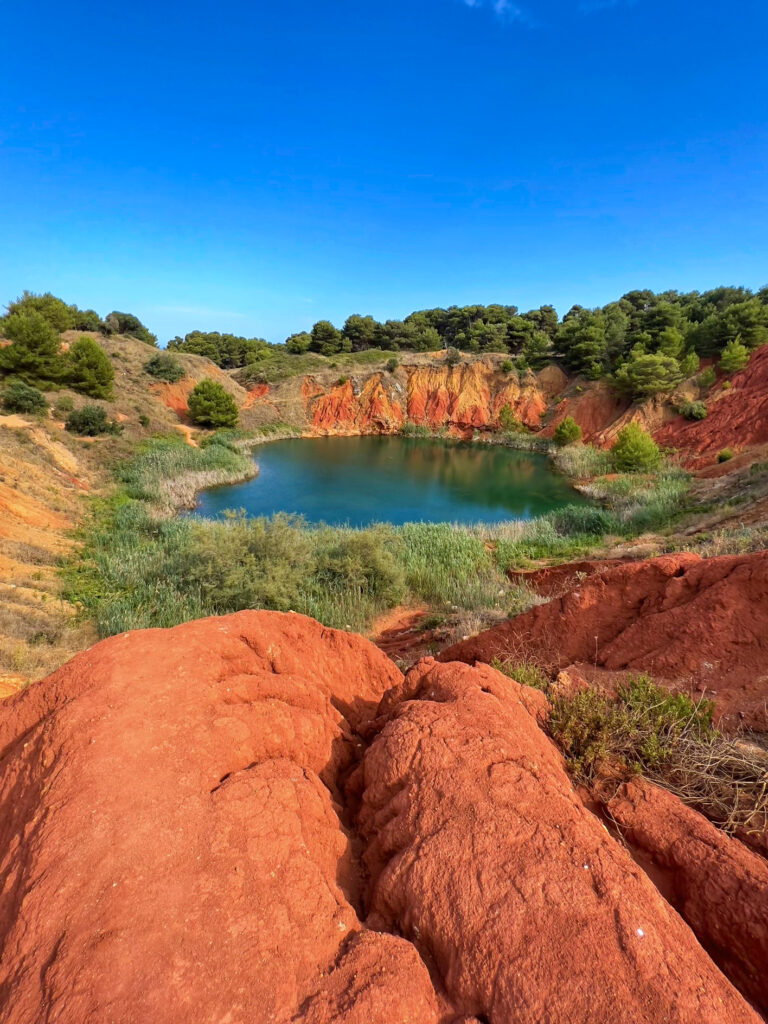
How to spend your day
- Morning coffee and pastry | Start at Martinucci Laboratorio, the local go-to for coffee, pasticciotti, or gelato later in the day.
- City beaches | The sandy stretches around the port are perfect for a swim without leaving the old town. Locals dive straight in from the rocks; for a more classic beach feel, just follow the curve of the bay.
- Sightseeing | Wander the winding streets of the centro storico, then step inside the Cattedrale di Santa Maria Annunziata to admire its 12th-century mosaic “Tree of Life” floor and the macabre display of skulls belonging to the Martyrs of Otranto. Climb the walls of the Aragonese Castle, which inspired the very first Gothic novel, The Castle of Otranto. If you have time (and wheels), head out to the otherworldly Bauxite Cave, a flooded disused quarry with vivid red earth.
- Lunch or dinner | For refined seafood in a modern setting, book a table at LaltroBaffo Ristorante — seasonal fish and elegant plates a few steps from the castle. | laltrobaffo.com
Getting there
- By train | Otranto is served by FSE regional trains from Lecce (approx. 1h 40m). It’s a scenic but slow route, with connections also from Maglie. From Bari or Brindisi, change at Lecce for onward trains.
- By bus | In summer, the Salento in Bus service links Otranto with Lecce and other coastal towns, often more direct than the train.
- By car | Otranto is about 45 minutes from Lecce, 2 hours from Bari. Driving allows easy access to the Bauxite Cave and nearby coves like Baia dei Turchi. Parking is available in several pay car parks around the marina and on the edges of the old town (blue lines). In peak season, arrive early to secure a spot.
Puglia itinerary #1 | Otranto to Santa Maria di Leuca – Puglia’s ultimate coastal drive
If we could only recommend one road trip in Puglia, this would be it. The SP358 coastal road from Otranto to Santa Maria di Leuca is one of the most spectacular drives in southern Italy. We make this journey three or four times every summer — it never fails to astonish.
Cliffs clad in prickly pear tumble into turquoise waters; sleepy fishing harbours open into ravishing viewpoints; the pace is leisurely and free of Amalfi-style drama. This is Salento at its most elemental: sea, rock, sun.
How to plan it
- From Lecce | Start in Otranto.
- From Ostuni or the Valle d’Itria | Head straight to Santa Cesarea Terme (or even Castro) to save time.
- Drive time | Around 50 minutes non-stop, but give yourself at least half a day to wander, swim and linger. Better still, stretch it to two days with an overnight stop.
Otranto → Santa Cesarea Terme (18 km)
Start with Otranto’s bauxite cave — a disused quarry turned vivid landscape of emerald lake, ferrous red soil, and deep green woodland. Park in the €3 car park; it’s a short walk along a clear path. The colours glow best in early morning or late afternoon.
From here, detour to the Faro di Punta Palascìa, Italy’s easternmost lighthouse, or look out for the Torre del Serpente, symbol of Otranto. On clear days Albania is visible across the water.
Back on the SP358, you’ll soon reach Santa Cesarea Terme, its cliff-top villas and Palazzo Sticchi exuding a North African air. Like Polignano a Mare, the town is perched on a plateau that drops dramatically into the Adriatic. Stop for a thermal dip or simply soak up the view.
Santa Cesarea Terme → Santa Maria di Leuca (35 km)
This is the heart of the drive — choose your pace, pick your stops.
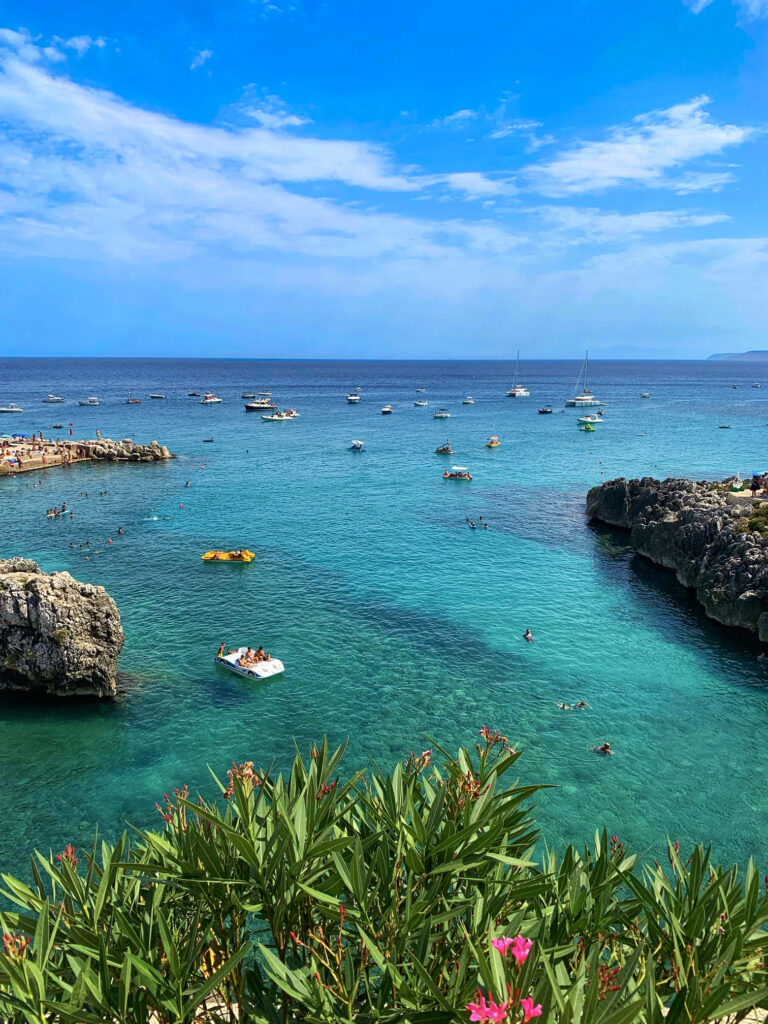
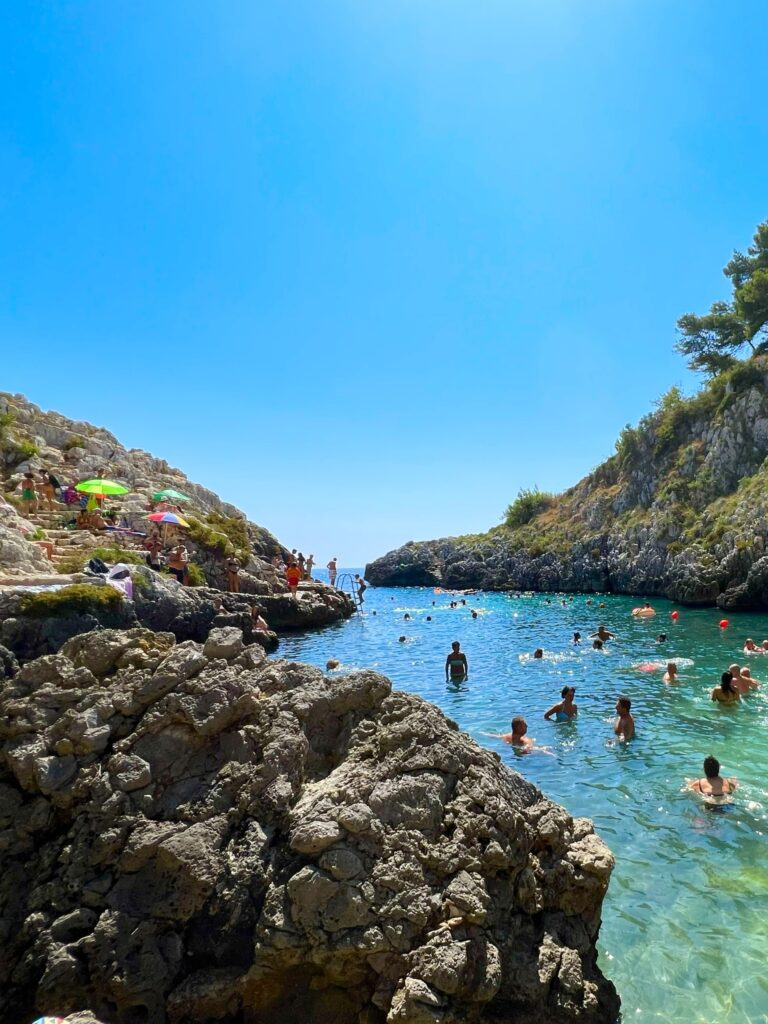
- Castro | Known as Puglia’s balcony over the Adriatic, Castro clings to cliffs 100m above the sea. Its friggitorie serve fresh fried fish in paper cones (cartoccio) with a small bottle of chilled wine — the perfect cliff-top picnic. In summer, traffic diverts through Marittima, bringing you out at Cala dell’Acquaviva, a jewel-like cove perfect for a quick swim.
- Porto Tricase | A tiny harbour where fishing boats bob in jade-green waters. Locals cool off from the quay, teenagers dive, and it’s a lovely stop for a coffee.
- Marina Serra | One of the most atmospheric bathing spots in Salento, with its rocky natural swimming pool. Stay overnight here if you want to supersize the trip.
- Caletta del Ciolo | 8 km north of Leuca, a dramatic ravine spanned by a bridge. Popular with cliff divers and hikers, it’s also stunning just for the views. Parking is limited and the bathing area small, but worth the stop.
Finally, the lighthouse of Leuca greets you, and the road unfurls along the art nouveau villas of the lungomare. This is Italy’s heel-tip, where the Adriatic meets the Ionian.
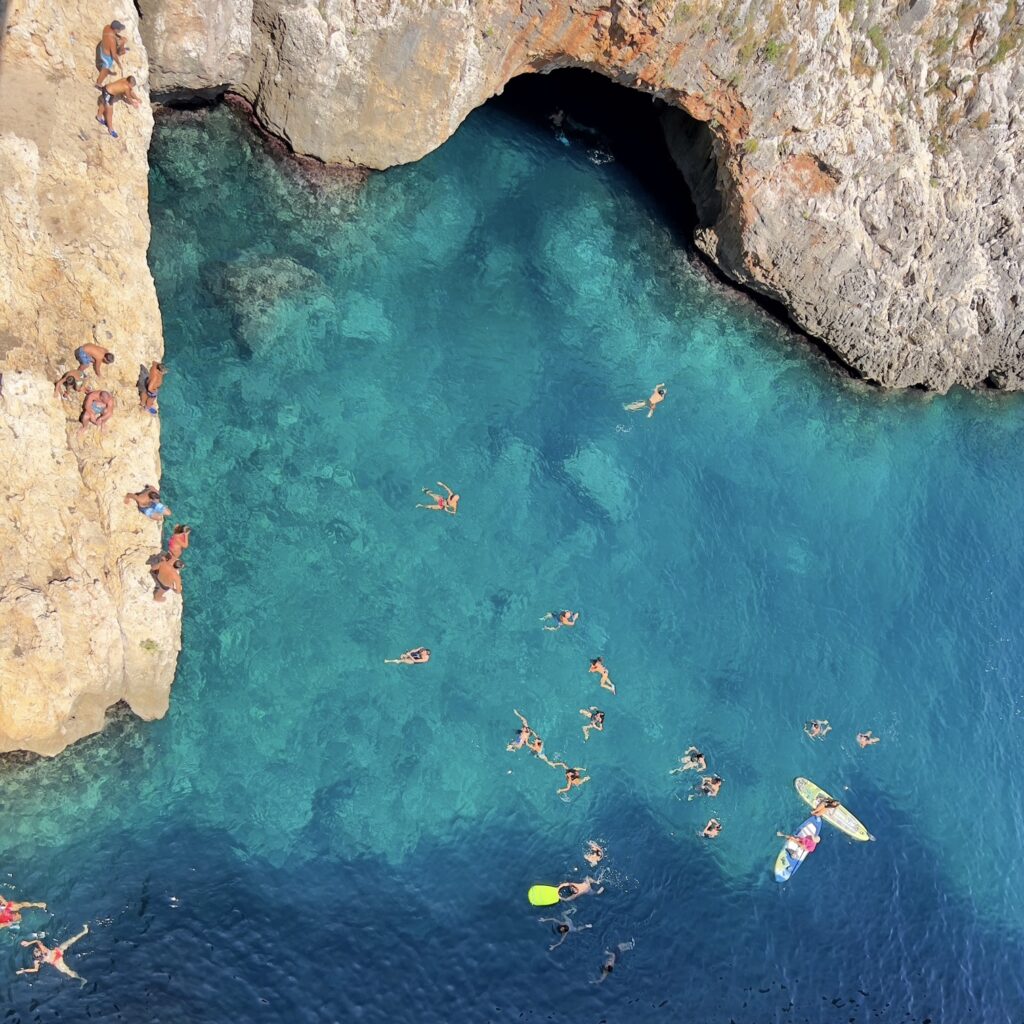
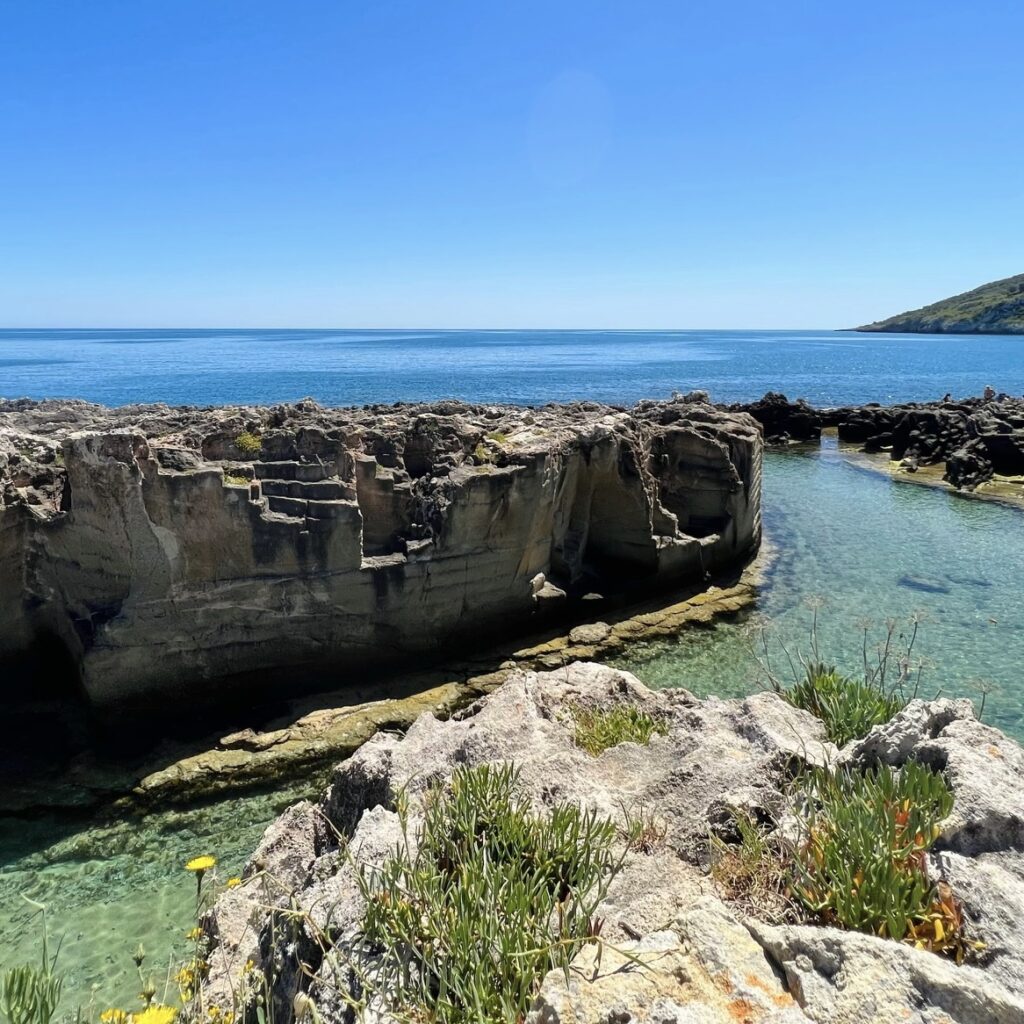
Leuca life
Leuca’s seafront lidos sit on wooden platforms over jagged rocks. Pack ciabatte (rubber-soled swimming shoes) — the rocks are sharp and sea urchins are plentiful. Order fried fish at Lido AlbaChiara, or simply settle in with a glass of wine as teenagers snorkel for urchins and octopus below. In Leuca, everything comes back to the sea.
Supersize the experience | Stay overnight in Marina Serra
To savour this trip at its best, turn it into two days.
- Aperitivo | Head inland a few kilometres to Tricase and sip cocktails at Farmacia Balboa, a converted pharmacy co-owned by Dame Helen Mirren.
- Wine | Pick up bottles (or a 15L box!) of Castel di Salve wines at their shop. Their Santi Medici Rosso negroamaro is pure Salento sunshine.
- Dinner | Try Locanda del Levante, a cosy spot around the corner.
- Morning ritual | Rise with the locals and take a sunrise swim in the rocky pools of Marina Serra. The colours and stillness are unforgettable.
Distances
- Otranto → Santa Cesarea Terme | 18 km
- Santa Cesarea Terme → Leuca | 35 km
- Lecce → Santa Cesarea Terme | 50 km
- Gallipoli → Santa Cesarea Terme | 50 km
- Ostuni → Santa Cesarea Terme | 130 km
Why it matters: This drive is not just about where you stop — it’s about the journey itself. Every bend reveals another impossibly blue horizon, another cliff, another swimming cove. For us, it’s the most essential road trip in Puglia.
Puglia itinerary #2 | Valle d’Itria
Many visitors shape their first Puglia itinerary around the Valle d’Itria. And with good reason: this is the picture-postcard Puglia of travel magazines. Whitewashed hill towns gleam in the sunlight, trulli dot the rolling countryside, and olive groves stretch endlessly across the red earth.
Unlike the dramatic coastal road trips of Salento or Gargano, the Valle d’Itria is about short, leisurely drives between towns. The beauty is incidental — it’s what you see out of the window as you wind your way from one small town to the next.
A typical circuit might include Ostuni → Cisternino → Locorotondo → Martina Franca → Alberobello, and then perhaps a detour downhill towards Monopoli and the Adriatic coast. That last stretch, rolling out of Alberobello and dipping down towards the sea, is one of our favourite drives in Puglia.
Distances | exploring with ease
One of the Valle d’Itria’s biggest draws is how compact it is. Towns are rarely more than 20–30 minutes apart, meaning you can easily combine two or three in a single day without feeling rushed.
- Ostuni – Cisternino – Locorotondo – Martina Franca – Alberobello | 15–20 minutes between each
- Ostuni – Ceglie Messapica | 20 minutes
- Ostuni – Monopoli | 30 minutes
- Monopoli – Polignano a Mare | 10 minutes
This makes day-tripping simple. One of our favourite easy days: Alberobello in the morning, Monopoli for lunch and a stroll, Polignano for a late afternoon gelato, beach, and aperitivo. All with time to spare.
While it’s tempting to stay a night in each town, this quickly becomes a chore – checking in, checking out, packing and unpacking. Instead, pick a central base like Ostuni, and explore at a relaxed pace. After all, Puglia is best enjoyed slowly.
Bases | coast, countryside, or both
- Ostuni | A classic choice, perched on a hill just a few kilometres inland but with superb beach access (Torre Guaceto, Torre Canne, and the coast north towards Monopoli).
- Martina Franca | Elegant and baroque, with a lively evening scene. A good choice if you want something more “city” than village.
- Cisternino / Locorotondo | Sleepier and more intimate. Lovely for a night or two, but many visitors prefer to stop by rather than base here.
- Monopoli | On the coast, and well connected by train. Great if you want the sea on your doorstep as well as easy access to the Valle d’Itria inland.
Our golden rule: mix it up. Pair a coast base with a countryside one for the best of both worlds.
Insider tips
- Stay longer, save more | Many accommodations offer discounts for longer stays.
- Don’t overdo the “white towns” | Locorotondo, Cisternino, and Martina Franca are beautiful but similar in feel – whitewashed centres, narrow alleys, piazzas, excellent food. If you’re short on time, you don’t need to tick them all off.
- Driving vs trains | The Valle d’Itria’s FSE rail line connects towns like Martina Franca, Alberobello, and Locorotondo. It’s slow and timetables can be patchy, especially at weekends, but if you don’t want to drive, it works.
Why the Valle d’Itria belongs in your Puglia itinerary
- Iconic landscapes | Trulli, olive groves, red earth, and endless dry-stone walls.
- White cities | Each with its own twist: Ostuni’s grand sweep, Martina Franca’s baroque elegance, Locorotondo’s perfect circle, Cisternino’s grilled meats.
- Easy exploring | Compact distances, relaxed pace, multiple highlights in a single day.
- Flexibility | Pair with the coast, add a detour to Matera, or mix with a Salento base.
For many, the Valle d’Itria is the very essence of Puglia. And while it may be busier than other parts of the region, it remains unmissable — the trulli and the white towns are part of Puglia’s DNA.
Puglia itinerary #3 | Bari to Vieste
Distance | 175 km | via SS16
Heading north from Bari, the road leads to the Gargano Peninsula – Italy’s “spur”. This is one of Puglia’s most overlooked regions, yet it holds some of the most dramatic landscapes: an ancient beech and oak forest, white limestone cliffs carved into coves and caves, long sandy beaches, and the extraordinary wooden fishing platforms known as trabucchi.
If the Valle d’Itria is Puglia’s most visited highlight, then the Gargano remains its best-kept secret. As you pass the salt flats of Margherita di Savoia, with flamingos picking their way through the shallows, the Gargano rises up in the distance. It feels different to the rest of Puglia – wilder, more rugged – yet still unmistakably Puglian, with its groves of olive trees and shining turquoise waters.
The route
This is a 2.5 hour drive (175 km). To make the most of it, we recommend staying the night in Vieste, then returning to Bari the next day via Peschici and the trabucchi.
- Take the SS16 (2h29m) instead of the A14 autostrada (E55). You’ll save the €6.80 toll and enjoy a far more interesting drive.
- From Bari, follow SS16 → exit Barletta Nord → merge onto Via Foggia and SP141 towards Margherita di Savoia.
- From Manfredonia, follow signs for Mattinata/Vieste and join the SS89 Garganica. Stay on this winding scenic road until you reach Vieste.
With extra toppings
- Stop in Trani (50 minutes from Bari) for a coffee and pastry by the port. The cathedral is one of Puglia’s finest – perched on the edge of the sea. If you’d like to linger, book lunch at Quintessenza Ristorante (Via Lionelli 62, Trani | +39 0883 880948) – Michelin-starred, refined but relaxed.
- Margherita di Savoia | Pull over at the salt flats to spot flamingos. The pale pink of the salt mounds and the sight of the birds skimming the water are a surreal prelude to the Gargano ahead.
Vieste
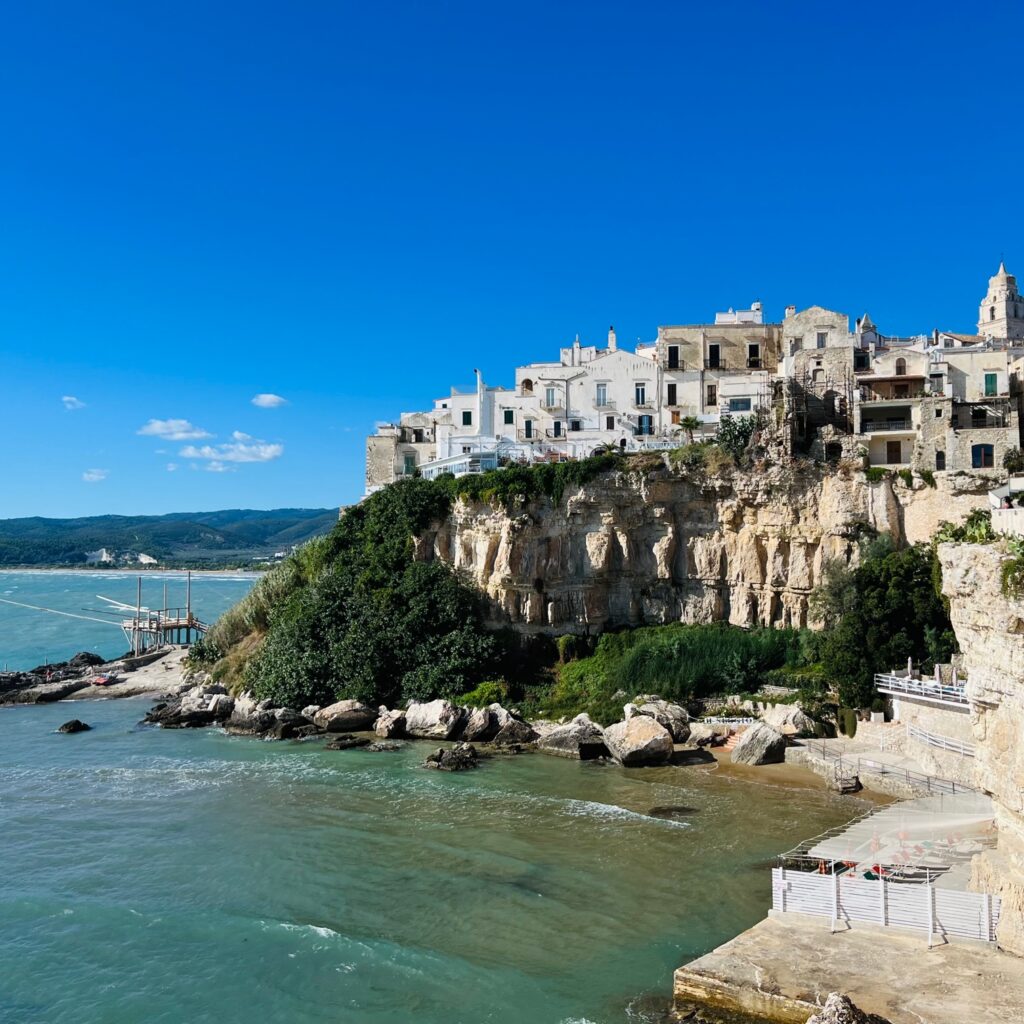
Arrive in Vieste by lunchtime. Settle in, then take your pick of its two sandy beaches:
- South-east | The long sweep of lungomare beach, watched over by the monolith of Pizzomunno. Easy parking (approx. €1/hour) along the promenade.
- North-west | A shorter but deeper beachfront, lined with lidos and backed by a large car park (€1/hour).
What to eat
- Pepata di cozze | A simple but unforgettable dish of mussels in broth, fragrant with olive oil, garlic, white wine, and cracked black pepper.
- Paposcia | A Gargano speciality dating back to the 16th century: slipper-shaped focaccia baked in a wood oven and filled with local ingredients. It’s Puglia’s answer to the panino – but better.
Where to stay
For something unique, try the serviced cabins at Al Trabucco da Mimì. The location – perched on the rocks beside one of the most famous trabucchi – is hard to beat.
Tip | Don’t miss Rocco’s roadside stall (Azienda Agricola da Rocco), just minutes from the trabucco. Stock up on caciocavallo cheese, fiery chilli paste, stuffed peppers, jams, olives, and wine. Tell him we sent you.
Peschici and the trabucchi
On your return the next day, head 30 minutes along the coast to Peschici. The drive itself is a highlight: translucent turquoise coves, rocky headlands, and trabucchi standing like spidery wooden machines over the water.
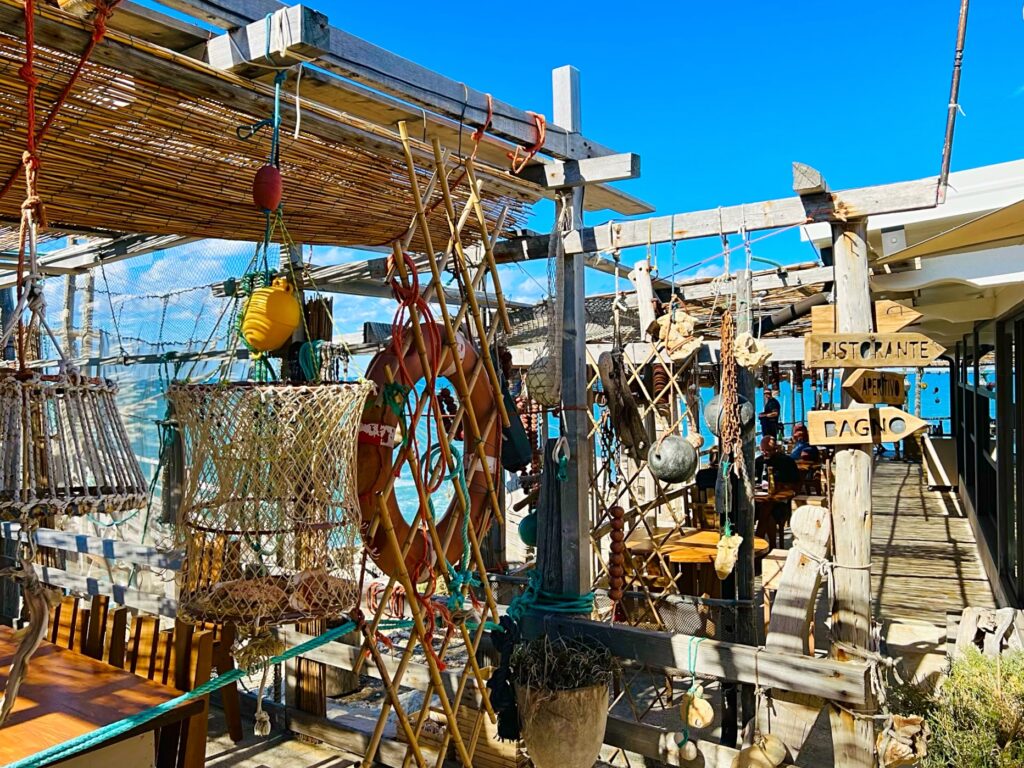
- Morning | Spend time on one of Peschici’s beaches.
- Lunch | Book ahead at Trabucco da Mimì (essential, terrace table at 1.30pm). This is one of Puglia’s best dining experiences: fresh fish and seafood straight from the nets, served with bread, lemon, and a cold glass of wine, while waves crash below. Don’t expect to finish before 3pm.
From here, wind your way back towards Bari – recharged, and with one of Puglia’s great road trips under your belt.
Why this Puglia itinerary works
- Contrast | A very different Puglia from the Valle d’Itria or Salento – rawer, wilder, more elemental.
- The coast | Sweeping beaches, hidden coves, and some of the most photogenic sea views in the region.
- Food and culture | From paposcia and pepata di cozze to meals on trabucchi, the Gargano has its own identity.
- Authenticity | Far fewer tourists make it here, and you’ll feel the difference.
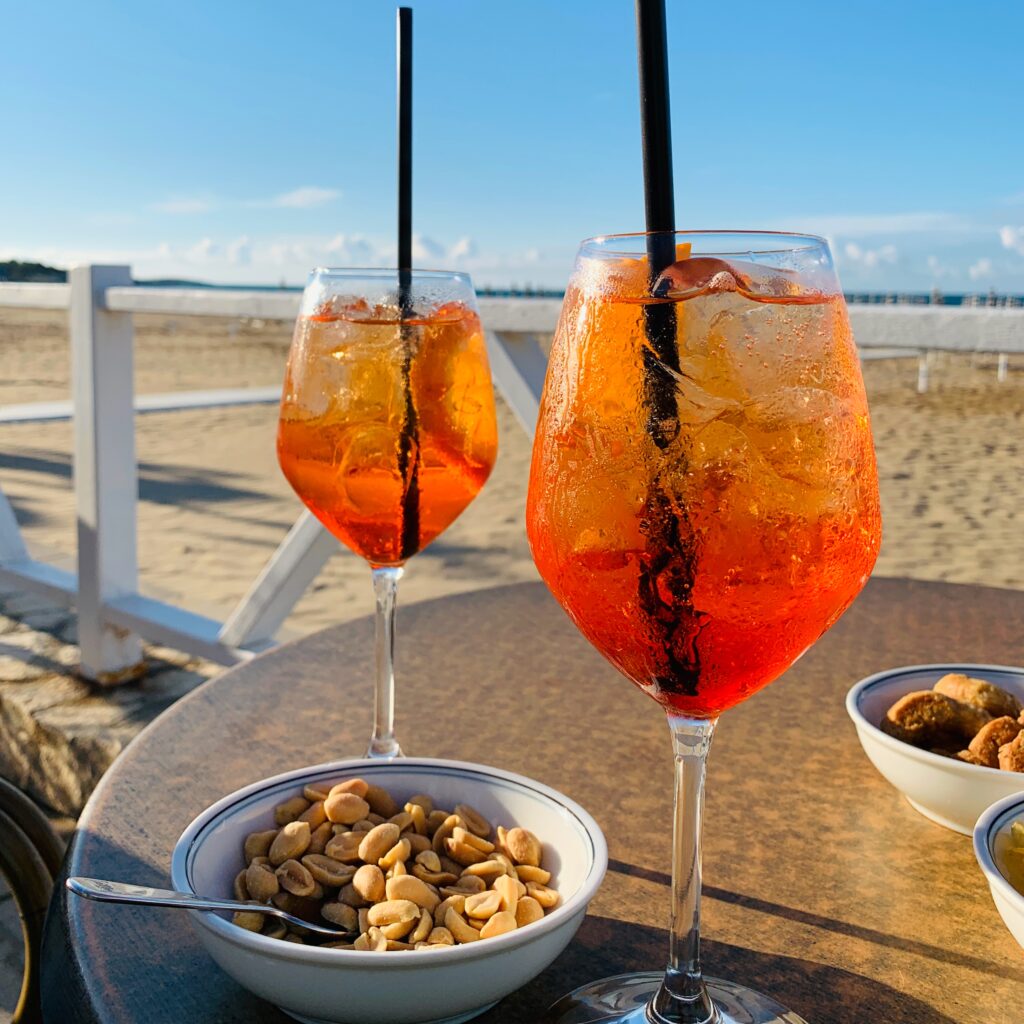
Plan the perfect Puglia itinerary | Boat trips
For a different perspective on Puglia’s dramatic coastline, hire a boat. From the water, you’ll enjoy views and scenery impossible to see from the road: hidden coves, sea caves, rugged cliffs, and secret swimming spots.
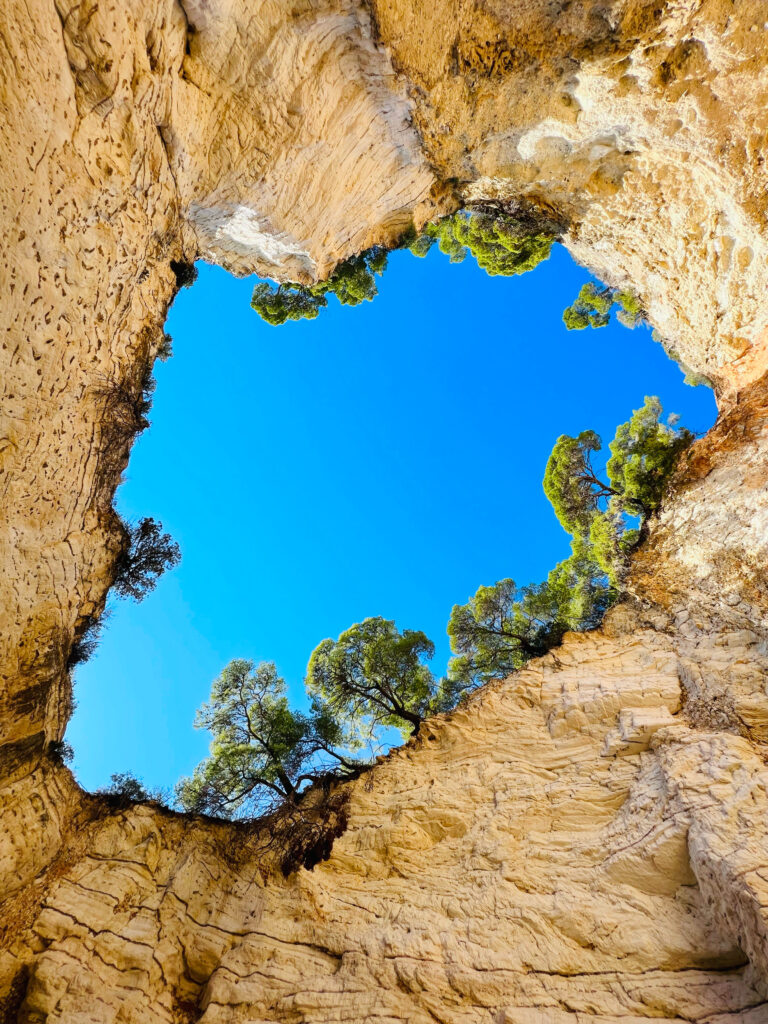
We often rent from:
- Nautica Red Coral, Castro Marina
- Piccola Nautica, Santa Maria di Leuca
Both offer self-drive rentals as well as guided boat tours. If you’re confident at the helm, driving your own boat is an unforgettable way to explore. But if not, tours are an excellent alternative.
Between the two, we prefer starting from Leuca. From there you can explore in both directions: the Adriatic side, with its caves and grottoes, then head around the point and up the Ionian as far as Torre Vado. The variety of coastline is remarkable — sheer cliffs and grottoes on one side, gentler shores and sandy beaches on the other.
Some trips deserve a guided tour even for experienced boaters. When we visited Vieste, we joined the Desirèe imbarco Tour Grotte Marine , which took us beyond the spectacular Faraglioni di Baia delle Zagare. Depending on the sea conditions, the skipper navigates into narrow caves and hidden passages before stopping (usually at Spiaggia di Vignanotica) for a swim.
Boat hire prices vary depending on season and duration, but in our experience both Castro and Leuca offer good value for money, especially considering the unforgettable memories you’ll take home.
Plan the perfect Puglia itinerary | Walking trips
Porto Selvaggio
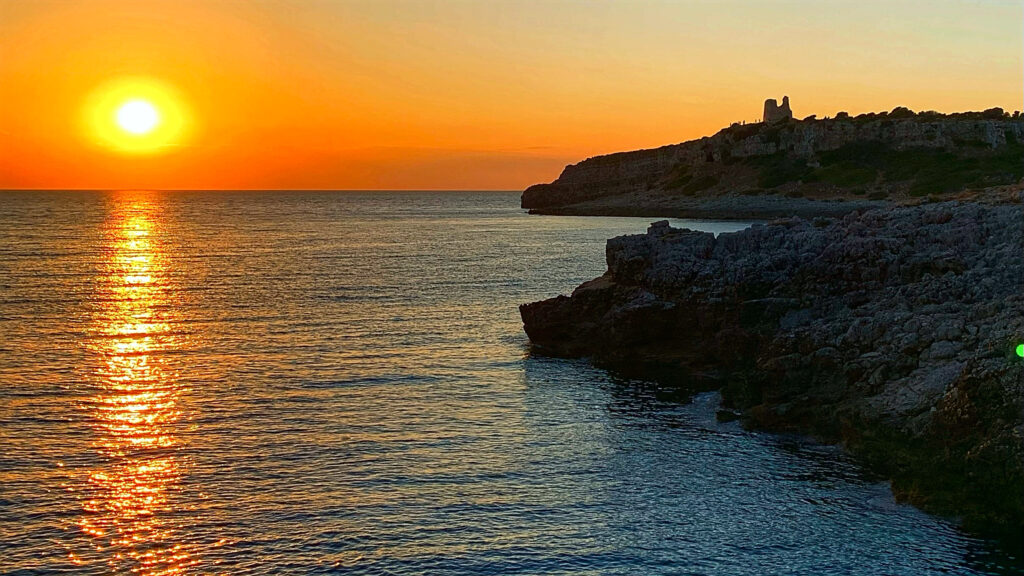
For those who prefer to explore on foot, Puglia offers some spectacular hiking routes. Porto Selvaggio, a protected nature reserve less than 20 km north of Gallipoli, is one of our favourites. Covering over 1,100 hectares, the reserve is a mix of dense pine forest, rocky coastline, and archaeological sites.
A walk here takes you through a surprisingly wild side of Puglia. Our route, guided by Giacomo De Mitri, took just under four hours. We began at Masseria Torre Nova, descending through the forest to Spiaggia di Porto Selvaggio — a lively, rock-and-pebble bay popular with locals. From there we followed the coast up towards Torre Uluzzo.
The terrain becomes more challenging around Grotta del Cavallo, with a steep ascent over rocky ground and scrubby vegetation. Sturdy trainers or hiking shoes are essential, as are long trousers to protect your legs from thorns and undergrowth.
While Porto Selvaggio is accessible without a guide, we recommend going with one if you want deeper insight into the history and ecology of the reserve. Giacomo’s tours (in Italian) can be found via his facebook page.
Sensible shoes (trainers) and long trousers to protect legs against the scrub and thorns you will trek through are recommended.
More information on tours with Giacomo De Mitri can be found on his facebook page. Tours are in Italian.
Puglia Itinerary | Bases, Day Trips & Drive Times
At-a-Glance: Quick Picks
Bari is ideal for Matera, Alberobello, Monopoli, Polignano a Mare, and Trani.
Polignano a Mare or Monopoli both give quick access to each other plus Alberobello, Locorotondo, Cisternino, and Ostuni.
Ostuni works well for the Valle d’Itria towns, Brindisi, and nearby villages, with Carovigno and Martina Franca offering similar reach.
Lecce, Gallipoli, and Otranto each cover the Salento coast and inland gems like Galatina and Nardò.
Taranto, and Vieste make strong bases for their surrounding clusters.
Otranto is perfect for the full Otranto–Santa Maria di Leuca coastal drive.
| Base | Day Trips & Pairings | Approx. Drive Times |
|---|---|---|
| Bari | Matera, Alberobello, Monopoli, Polignano a Mare, Trani | 35–50 mins (Trani 50 mins) |
| Polignano a Mare | Monopoli, Alberobello, Locorotondo, Ostuni | 10–40 mins |
| Monopoli | Polignano a Mare, Alberobello, Locorotondo, Cisternino, Ostuni | 10–35 mins |
| Ostuni | Cisternino, Locorotondo, Alberobello, Ceglie Messapica, Carovigno, San Vito dei Normanni, Brindisi | 10–40 mins |
| Cisternino | Locorotondo, Ostuni, Alberobello, Ceglie Messapica | 10–25 mins |
| Carovigno | Ostuni, Cisternino, Ceglie Messapica, San Vito dei Normanni, Brindisi | 10–30 mins |
| Martina Franca | Locorotondo, Alberobello, Cisternino, Ceglie Messapica, Grottaglie | 10–30 mins |
| Lecce | Otranto, Gallipoli, Galatina, Santa Maria di Leuca | 30–60 mins |
| Gallipoli | Lecce, Santa Maria di Leuca, Otranto, Porto Selvaggio, Galatina, Nardò | 20–60 mins |
| Grottaglie | Taranto, Martina Franca, Ceglie Messapica | 20–30 mins |
| Taranto | Grottaglie, Manduria, Pulsano beaches | 20–40 mins |
| Vieste | Peschici, Trabucchi coast road, forest drives | 20–40 mins |
| Otranto | Lecce, Gallipoli, Santa Maria di Leuca, Castro, Porto Badisco, Caletta del Ciolo | 20–60 mins |
| Santa Maria di Leuca | Otranto–Leuca coastal drive, Castro, Porto Tricase, Caletta del Ciolo | Coastal route full day |
The Classic Puglia Itinerary | Smart Bases, Slow Travel
Not everyone wants to build their trip from scratch. While we believe there’s no such thing as a one-size-fits-all itinerary — which is why we’ve broken down Puglia into destinations you can mix and match to create your own adventure — sometimes it helps to see it all planned out. Maybe you don’t have the time to do the research, or perhaps you simply prefer the reassurance of a ready-made route. That’s where our sample itineraries come in: think of them as frameworks you can follow in full, or adapt to suit your own pace and interests.
Whether you’re arriving in Bari or Brindisi, the itineraries we suggest work equally well. If your trip begins or ends in Bari, we recommend adding at least a night in Matera. While it’s possible to visit on a day trip, Matera deserves the slower pace that an overnight stay allows — its cave dwellings and stone streets take on an entirely different character at night.
Bari itself makes for an interesting visit, but we don’t usually suggest it as a base. Instead, it’s easy to reach Bari Vecchia as a day trip from Polignano, Monopoli or Ostuni. Even if you’re driving, we suggest leaving your car at the station and taking the train. Trenitalia’s connections are reliable, efficient and inexpensive — and they save you the headache of navigating traffic and finding parking.
Classic Puglia itinerary A | Coast (Valle d’Itria) + Countryside (Salento)
Base 1 | Polignano a Mare or Monopoli (3–4 nights)
For a coastal atmosphere in the Valle d’Itria, Polignano or Monopoli make lively bases. Neither has the long sandy stretches you’ll find further south in Salento — here it’s mainly rocky coves and small city beaches — but both offer buzzing old towns, excellent restaurants, and easy access to Valle d’Itria’s inland white towns.
Day trips from Polignano/Monopoli:
- Bari Vecchia – the old town of Bari is just 30 minutes by train. Wander narrow streets, taste focaccia barese, and see daily life unfold in the lanes where orecchiette is hand-rolled.
- Alberobello – embrace the crowds, that’s part of the trulli experience.
- Locorotondo & Cisternino – two of Puglia’s prettiest white towns.
- Martina Franca – baroque streets and opera in summer.
- Ostuni – the White City, glowing at sunset.
- Matera – worth the longer day trip if you can, though ideally an overnight stay.
Base 2 | Lecce (3–4 nights)
The ideal cultural counterpoint to your coast base. Lecce’s baroque palazzi, churches and buzzing aperitivo life make it a fantastic inland hub for exploring the Salento.
Day trips from Lecce:
- Otranto – cathedral mosaics and city beach.
- Gallipoli – island old town, seafood and sunsets.
- Galatina – frescoes and the birthplace of pasticciotto.
- Santa Maria di Leuca drive – Puglia’s most dramatic coastal road.
Classic Puglia itinerary B | Countryside (Valle d’Itria) + Coast (Salento)
Base 1 | Martina Franca (3–4 nights)
An inland alternative to Polignano/Monopoli. Martina Franca offers baroque elegance, a thriving local scene and cooler evenings in summer. From here you can dip in and out of Valle d’Itria towns without moving hotels every day.
Note: day trips from Martina Franca are less straightforward by public transport, so this option works best if you have your own car.
Alternative | Ostuni
If you’d like a compromise between inland culture and easy beach access, Ostuni makes a smart alternative. It’s only a few kilometres inland, with superb access to some of the Valle d’Itria’s most interesting Adriatic beaches — from Torre Guaceto nature reserve to the Torre Canne coastline.
From Ostuni you can also make city day trips by train:
- Drive to Ostuni’s station, leave your car, and take Trenitalia’s comfortable and reliable trains north to Bari Vecchia, Polignano and Monopoli. It saves the headache of parking, and all three stations are within easy walking distance of their old towns.
Day trips from Martina Franca or Ostuni:
- Bari Vecchia – explore the old town lanes, focaccia barese, and handmade orecchiette.
- Alberobello, Locorotondo, Cisternino – all within 20 minutes by car.
- Ceglie Messapica – a food town with a slow rhythm.
- Matera – longer trip but unmissable if possible (better if you can stay overnight, especially if flying out of Bari).
Base 2 | Gallipoli (3–4 nights)
Gallipoli is the surf to Martina Franca’s turf. With proper sandy beaches, superb seafood and unforgettable sunsets, this island town is the perfect place to wind down at the end of your trip.
Day trips from Gallipoli:
- Lecce – baroque magnificence just 30 minutes away.
- Santa Maria di Leuca – follow the spectacular coast to Italy’s “finibus terrae.”
- Nardò & Porto Selvaggio – baroque squares and a nature reserve for swimming.
- Otranto – Adriatic charm and history.
How to Choose?
- If you prefer to start by the sea and finish with culture, choose Polignano/Monopoli + Lecce.
- If you want to end on a sandy beach with a sunset spritz in hand, choose Martina Franca (or Ostuni) + Gallipoli.
Either way, you’ll balance surf and turf while covering Puglia’s two headline regions:
- Valle d’Itria: trulli, white towns, rolling olive groves.
- Salento: baroque Lecce, Ionian beaches, and dramatic Adriatic cliffs.
- Bonus tip: if you can squeeze it in, don’t miss Matera — whether as a day trip or, even better, an overnight stay.

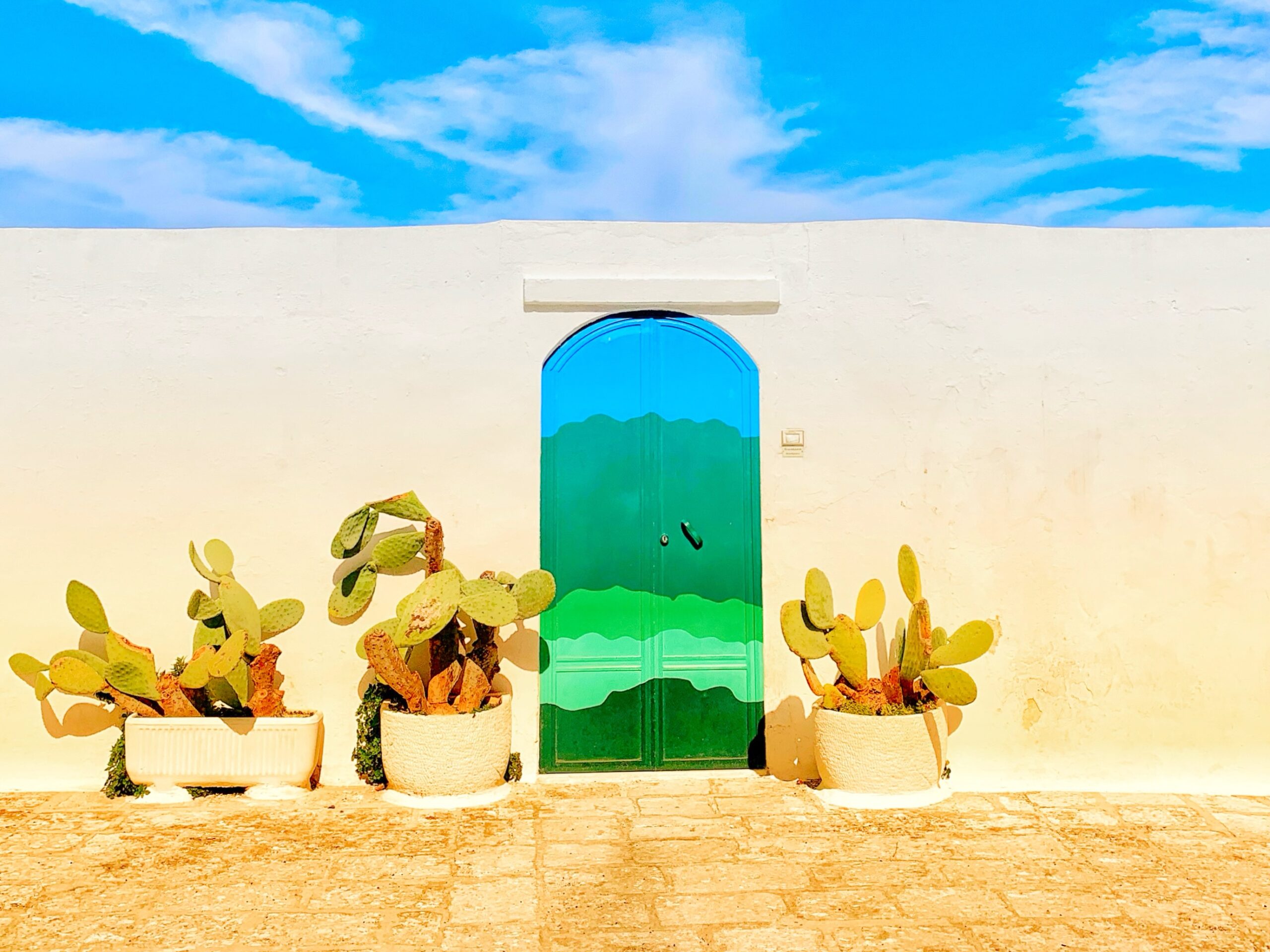
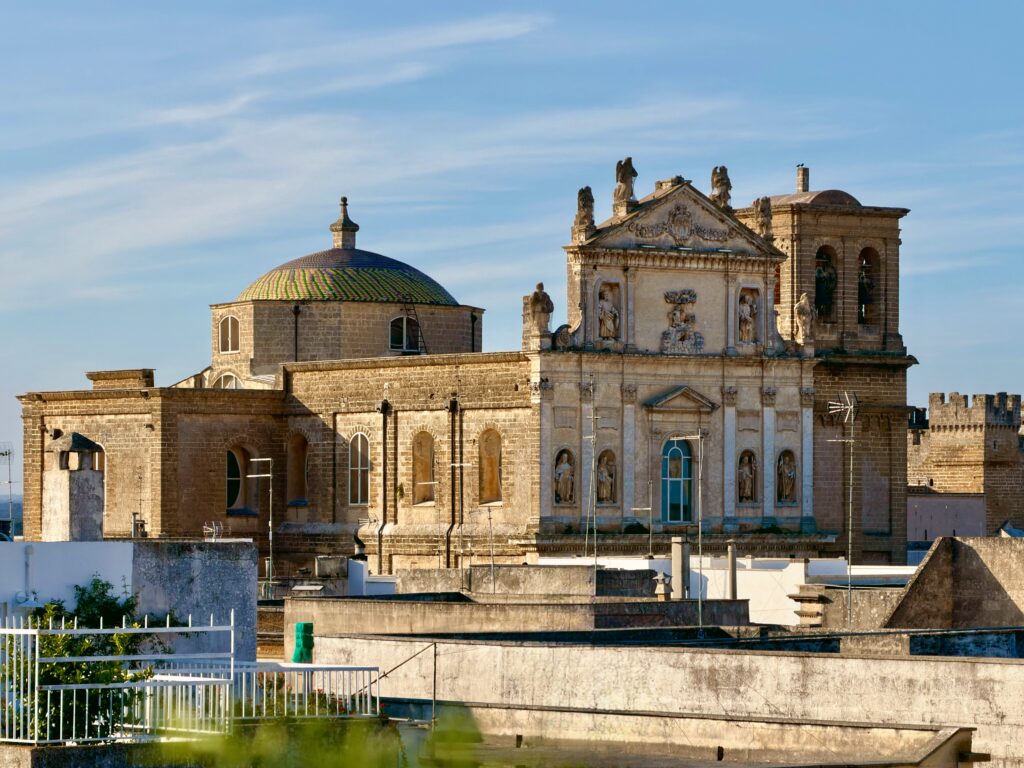
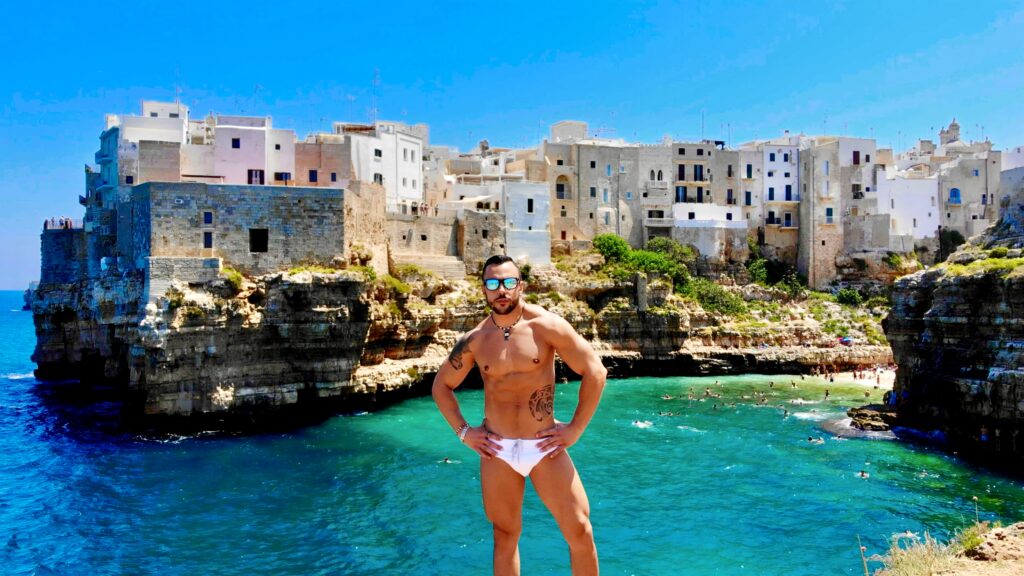
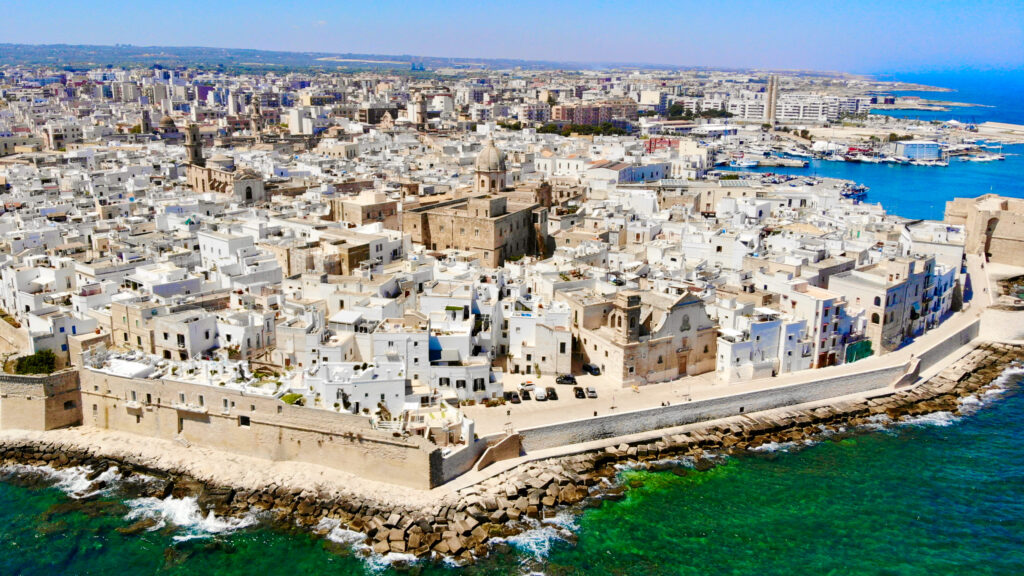
Hello! I am so happy to have found your website, as I am in the process of planning a trip for my family to Puglia and I find your guides and advice so helpful! We are flying into Bari in August next year, arriving around 5pm and then driving to Matera to stay for one night. The next day, we will slowly make our way to our hotel Baglioni Masseria Muzza where we will spend the next 5 nights. Do you have any suggestions of how to spend the day beginning in Matera and ending at the Baglioni hotel? This will be our main day to see central Puglia, as we plan to stay in the southern area and fly out of Brindisi after we arrive at the Baglioni hotel. I’d love to stop in Alberobello if possible and then possibly make 1-3 other stops along the way. Would love to hear what you suggest! Thank you so much in advance!
Ciao!
From Matera to Baglioni Masseria Muzza near Otranto you’re looking at roughly 226 km, just under 3 hours’ drive without stops. It’s perfectly possible to make a full day of it by crossing through the Valle d’Itria, one of Puglia’s most beautiful areas.
A good route for you based on your intentions would be:
Matera → Alberobello → Locorotondo or Cisternino → Ostuni → Otranto
That will give you a complete taste of central Puglia’s landscapes — olive groves, trulli, and whitewashed hill towns — before continuing south to Salento.
Alberobello: allow about 2 hours to see the trulli zones (Rione Monti and Aia Piccola) and have a quick coffee or gelato.
Locorotondo or Cisternino: both make lovely short stops — Locorotondo is more polished, Cisternino a little more rustic with great views and a handful of easy lunch options.
Ostuni: often called the “White City”, it’s the natural last stop in the Valle d’Itria before the final stretch to Otranto. You’ll get sweeping views to the Adriatic and a good sense of Puglia’s architecture shifting from limestone hill towns to red-earth plains.
Alternatively, you could drive Matera → Alberobello → Martina Franca → Ostuni → Otranto.
Martina Franca is baroque in style, similar to Lecce, so if you’re planning a day in Lecce later, we’d suggest the Locorotondo / Cisternino route instead for more variety.
If time feels tight, skip one stop — heading straight from Alberobello to Ostuni still gives you a solid snapshot of the region.
One thing to bear in mind: you’re travelling in August, peak season. Roads will be busy, especially around Alberobello and Ostuni, and journey times may stretch well beyond Google Maps’ estimates. Expect 3–5 times the usual volume of traffic on some sections, and allow plenty of time for parking.
Our tip: set off from Matera fairly early, but not too early to miss out on what it offers (it is a one of a kind destination). Enjoy Alberobello despite the crowds, have lunch somewhere else as per our suggested route, and aim to reach your hotel by early evening. That way you’ll have seen the heart of Puglia without too much stress.
Enjoy your trip — you’ve picked a spectacular route through the region!
Buone vacanze
LuigiM.
This is so helpful! Thank you so much for the detailed reply! We have younger kids (7 and 10 years old) so am thinking we would like to stop every hour or so. If we did Matera to Alberobello to Ostuni, is there one more stop between Ostuni and our hotel (Baglioni Masseria Muzza) that might make a nice stop? We plan to visit Lecce and Otrano during our 5 days at our hotel so would not add those to this day. Also, do you think we are missing out by not visiting Polignano a Mare or Monopoli along this drive? Thank you again!
Ciao again!
If you’d like to add Monopoli and Polignano a Mare, then your route would look like this:
Matera → Alberobello → Monopoli → Polignano a Mare → Ostuni → Otranto.
That would give you the full stretch of central Puglia — countryside, trulli, and coast — but you should know it’s around five hours of pure drive time in normal conditions. In August, with heavier traffic and time spent parking or queueing through the coastal towns, expect this to stretch closer to 6½ to 7½ hours drive time in total.
For comparison, when friends visit us, we often do the following loop as a day trip: from Ostuni — Alberobello in the morning, lunch in Monopoli, afternoon coffee and gelato in Polignano, and then back to Ostuni for dinner. We set off around 9am and usually get home between 6 and 7pm. For us that’s a good pace. We’re efficient, but see enough to make the stop-offs meaningful.
In August, though, expect traffic to be much heavier. The coastal road between Polignano and Lecce, and the stretch south of Lecce towards Otranto, are especially busy. You could easily add another hour or more to the drive time just from congestion and parking queues in Monopoli and Polignano alone.
You can always adjust your route on the day depending on traffic. If you have to choose between the two, Polignano a Mare is the more iconic stop — that cliff-top view really is something special.
If you prefer to keep things gentler after Ostuni, possible stops on the way to Otranto include:
• Brindisi, where the ancient Via Appia ends at the Roman columns on the seafront.
• Galatina, home to one of southern Italy’s most beautiful churches, the Basilica di Santa Caterina d’Alessandria, with incredible 14th-century frescoes.
Or, honestly, you might be happiest just pausing at a service area — the drive itself is long enough, and you’ll already have packed in a lot.
If you’re tempted by Monopoli and Polignano, another option would be to fly out of Bari instead of Brindisi and stop in those towns on your return journey north.
However you plan it, the key is to balance distance and destinations with time to enjoy each place — so that your memories are of experiences, not hours in the car.
LuigiM.
Once again just WOW . Every time I dig deeper into another section of your wonderful guides and recommendations I am blown away by how much useable information and the excellent tips you have included . It really shows this was a labor of love for your region. Bravo ! My husband and I will be in Puglia for 6 nights from October 5- 10 , arriving from Pescara ( a short pilgrimage to where my grandfather was from ) and then heading to Rome . We have taken your suggestion and have 2 bases from which to try to see most of our wish list ( we know 6 nights is not enough lol) First – 3 nights just outside Polignano a Mare at Masseria Mancini , and 3 nights in Lecce. I would very much appreciate your opinion on how we will divide our time. We will have a car . We will arrive Polignano at mid day and thought we would spend the afternoon and evening there . Day 2 we would visit Bari in the morning till after lunch and Locorotondo for the rest of the day. ( we could also do the reverse if you think it would be better) Day 3 there is a tour we could take which does morning in Alberobello and afternoon in Matera , so we can at least get to both towns. ( we are not big on tours but I am concerned about parking in some areas ) Day 4 drive to Lecce and spend afternoon and evening there . We would drive to Ostuni on day 5 for the day . Day 6 is open for “serendipity “ or if you have a suggestion that would be an easy drive from Lecce and to somewhere where parking would not be an issue .
Ciao Elizabeth
It’s good to know that our guides have been useful, and we are happy to learn that you are enjoying them.
1. Bases and overall structure
Polignano a Mare and Lecce make good smart bases. With six nights, your outline will let you experience both the Valle d’Itria and Salento. Having a car will also give you the flexibility you need.
2. Arrival day (Polignano a Mare)
Arriving at midday and spending the afternoon and evening in Polignano makes sense. The town is compact and easy to explore on foot, and you’ll enjoy the sea views and atmosphere at sunset.
3. Bari and Locorotondo (Day 2)
Bari is the regional capital and traffic can be heavier than in smaller towns. Bari Vecchia is atmospheric and deserves a full morning — don’t miss San Nicola and the waterfront. Locorotondo is best later in the day, especially around sunset, when the views over the Valle d’Itria are at their most beautiful. The order you’ve planned — Bari in the morning, Locorotondo in the afternoon — is the right way round.
However geographically and distance wise it could make better sense to do Alberobello and Locorotondo together, and (even although Matera deserves a full day at least), you could consider Bari Vecchia and Matera together by train (if connection times work), and it doesn’t feel too rushed).
4. Alberobello and Matera (Day 3)
Alberobello can be enjoyed in just a couple of hours; its main trulli zones are compact. Parking at this time of year is rarely an issue. Pairing Alberobello with nearby Locorotondo makes more sense geographically and is less travel overall. Matera, however, really deserves more than half a day. If you cannot dedicate a full day, it may be more time-efficient to go by train: you could take the train from Polignano to Bari Vecchia for the morning, then onward to Matera, and back again. That avoids city driving and parking in Bari. Still, if the timing of an organised tour is easier — with all the transfers taken care of — then that may be the most practical solution, even if it is a little rushed.
5. Ostuni and transfer to Lecce (Day 4)
Rather than going back to Ostuni from Lecce (which would mean an hour’s drive each way), it makes sense to stop there en route to Lecce. Ostuni is only about 30 minutes from Polignano, so you could enjoy lunch and spend the afternoon exploring before continuing on to Lecce later in the day. That way you use your time more efficiently.
6. Lecce (Day 5)
Dedicate a full day to Lecce itself — the baroque architecture, piazzas and churches are best appreciated at a slower pace. The city really comes alive after dark when the façades are beautifully lit.
7. Open day from Lecce (Day 6)
From Lecce, Galatina makes an easy and rewarding day trip — about 30 minutes’ drive, with straightforward parking. The Basilica di Santa Caterina is one of the hidden joys of southern Italy, and the town is also the spiritual home of the pizzica tradition. It’s compact, walkable and not overrun with visitors. Or you could go to Gallipoli, or even both.
Buone vacanze
LuigiM.
Ciao LuigiMax and thank you for your insight. If you think parking around Matera would not be too much of a problem this time of year , I would definitely prefer not to do a tour and like your suggestion of Bari then Matera. . My husband and I like to wander , explore the winding streets to discover and take things at our own pace . Your revision of Alberobello and Locorotondo combined also works very well for us as the Masseria we are staying at is 8 km outside of Polignano , so we don’t need to go to the coast to get to either by car . Again I was more worried about parking . I also see your point regarding stopping in Ostuni on the way to Lecce. We will definitely take a full day for Lecce , and i appreciate your suggestion of Galantina – i will now read your info on it 🙂 sounds wonderful. Thank you so much again for these great suggestions to improve our itinerary. It seems like such a beautiful part of Italy we want to enjoy as much of the area as we can with the time we have ! Grazie mille !
Prego.
Our Matera and Alberobello guides (as also our Bari guide – in fact most of our guides) have information on where to park, and at the beginning of the end of our season (October), Puglia really is much quieter, with few, if any Italian tourists, and most European tourists back at work, and no school holidays scheduled until the end of October.
Buone vacanze.
LuigiM.
Ciao LuigiMax!
Would love your opinion on my itinerary and thoughts on driving (on the wrong side of the road 😂)
We are a married couple, early 60’s, fit, well travelled but never been to Puglia. We are usually found on the other side of the Adriatico where my parents were born in what was Italy now Croatia.
Anyway this is the plan – 9 nights total from early September – Bari 2 nights, Matera 2 nights, Cisternino 2 nights and Lecce for 3 nights.
I’ve read so many articles about driving or public transport. I do have a car booked from the day we leave Bari for Matera till departure from the ferry terminal however I can cancel it without penalty 24 hours prior. It’s booked through Avis to pick up and drop off Bari downtown.
I am 50% sure we should drive while my husband is not. He would be driving and I will navigate with the help of google maps and I do agree that nobody needs stress with ZTLs, narrow roads, etc.
Given that we will be staying in the Sassi and the Centro Storico in Lecce I am somewhat torn. I understand that there are maintenance works on the Bari Matera line and buses will replace. I have tentatively booked a local driver from Bari to Cisternino at this stage. Additionally I have a cousin in Lecce who will take 3 days of ferie and will take us to places we won’t have seen (Gallipoli, Porto Cesareo and others).
So over to the experts to tell me what to do! It’s been quite some time since we’ve driven in Europe but with so many horror stories (insurance headaches and thefts from cars amongst others) it does make me feel u easy. (And I’d prefer to stay married to my man. 😂)
Grazie mille!
Grazie Paula
Firstly, I’m sorry to say that on this occasion you haven’t found Luigi Max – he’s currently away working hard to improve his English, so you’ve got me instead. But hopefully you’re in good hands!
Secondly, one thing we always emphasise at Puglia Guys is that we never presume to tell anyone what to do. Our website isn’t prescriptive – it’s designed to offer advice based on experience, which you can take, adapt, or ignore completely depending on your own travel style and comfort zone. You sound like seasoned travellers who know yourselves well, and that’s half the battle already won.
As for driving: it’s true that there are plenty of horror stories online – and we wouldn’t be honest if we said they were all made up, although some must be taken with a (good) pinch of salt. But we also think that, with a few careful choices and some realistic expectations, hiring a car can be a good way to unlock parts of Puglia that are otherwise difficult to reach.
Driving in Puglia: My thoughts
If you’ve been researching driving in Italy, you’ve probably come across all kinds of advice warning about chaos on the roads, kamikaze scooters, hairpin bends, and villages you’ll never escape from once you’ve entered. That might be true of Amalfi, Naples, or even parts of Sicily – but Puglia is different.
Driving in Puglia is a far calmer, more spacious experience. The region is mostly flat and agricultural, with long stretches of open road between towns. The traffic is rarely heavy outside the cities (except in August when we have more than 900,000 Italian tourists descent for their Italian staycation), and once you get the hang of roundabouts and the overtaking style, it’s really not intimidating.
Some real-life feedback we’ve recently received from visitors says it better than we ever could:
“We are just back and driving was fine, although some of the roads could do with resurfacing. It’s nothing major and shouldn’t put you off.”
“American mom who just returned from a Lecce and Ostuni-based trip with my family of four: if you can drive [at home], you can drive there. We had no issues getting to the beaches and towns. Paid for an overnight lot in Lecce and dropped our car off next to the Bari train station before heading back to Rome.”
So yes, some rural roads have potholes. Yes, some signage can be confusing. But overall, Puglia is not the dramatic, high-stakes driving experience many people associate with Italy. In fact, the hardest part is often finding a legal parking space in the old town centres – and even that becomes easier once you know to park just outside the ZTL zones.
If you feel confident driving at home, you should be fine here. We’re not here to tell you what to do – only to say that driving in Puglia is very often the most flexible and efficient way to get around, and it’s a far cry from the stress-inducing stories you might have read elsewhere.
On ZTLs:
We understand – if you’ve read any online forums about driving in Italy, you’ll have seen the acronym ZTL (Zona a Traffico Limitato) pop up again and again, often surrounded by horror stories, warnings, and caps-locked rants.
The reality? ZTLs are simply restricted traffic zones, usually in the historic centres of towns and cities. Think of them like pedestrian-only areas you might have at home – places where access is limited to protect walkable neighbourhoods, reduce traffic, and preserve architecture. The only difference is that in Italy they’re enforced (often by camera), and the signage isn’t always as obvious as it should be.
For example, in Lecce it simply isn’t an issue for us. We never drive into the centro storico, parking just outside. The centro storico for the most part is sorrounded by the old city walls and it’s difficult to drive into by mistake! Likewise Bari Vecchia, Monopoli’s old town etc..
But here’s the key point: ZTLs are typically very small zones – a few streets in the very heart of town. They’re not entire cities. In fact, most of the historic centres where ZTLs exist were never designed for cars in the first place. These are medieval towns with narrow alleys and piazzas that were meant for feet and hooves, not wheels.
Unfortunately, many tourists who’ve mistakenly driven into a ZTL – often by blindly following their satnav – have gone on to write passionately worded online warnings that make them seem far more widespread and menacing than they really are. This in turn causes travellers to obsess over them, often to the point of avoiding driving altogether.
What to do instead:
Always ask your accommodation if they are inside a ZTL, and what the parking options are.
Never rely solely on Google Maps or your car’s GPS in historic centres – it won’t know the ZTL boundaries.
Watch for signs, usually a white circle with a red border and text indicating hours of restriction.
If in doubt, park just outside the centro storico and walk in. You’ll avoid fines, frustration, and you’ll usually enjoy a much more scenic arrival.
The bottom line? ZTLs are nothing to fear – but they are something to respect. With a little forward planning, they’re completely avoidable.
Itinerary thoughts
From what you’ve described, your itinerary is actually sensible and mostly straightforward. Here are a few thoughts:
Driving from Bari to Matera is easy and direct. If maintenance works on the train line are still ongoing in early September, then this leg is especially well-suited to driving. The road is good and not too busy, although traffic will be busy – and likely seem chaotic if it’s your introduction to driving in Puglia – in downtown Bari.
Matera’s Sassi zone is a ZTL (restricted traffic zone), but many accommodations provide parking just outside or offer permits for limited access. Always check in advance with your host. Fines are camera-enforced and unavoidable once triggered.
Driving to Cisternino also makes good sense. Cisternino does have a train station, but the main Trenitalia one is a long way from the town. You’re better off getting off at Fasano and taking the STP Brindisi bus, which runs to Cisternino. Public transport between Matera and the Valle d’Itria is fiddly and time-consuming. A car allows you to stop en route – perhaps at Altamura or Locorotondo – and see more of the countryside.
Lecce is different. If your cousin is picking you up for day trips, you won’t need a car here. Lecce is a walkable city, and parking in or near the centro storico is limited and often frustrating. In fact, we’d suggest returning the car when you arrive in Lecce if that’s logistically easy – and if your pick-up and drop-off point with Avis is Bari city centre, you might ask about the cost of returning in Lecce instead (just to compare).
A few additional tips we always offer:
Don’t leave anything in a parked car, especially luggage, bags, or electronics. Petty theft happens all around the world. Exercise common sense, as you do at home and as we do, especially at unmonitored beach car parks.
Stick to the larger rental companies, which you’ve done with Avis – that’s good.
Insurance: be clear on what’s included, and consider buying excess insurance via a third-party provider before you travel. It’s usually cheaper and gives peace of mind.
Lastly – if the car is becoming a source of tension, don’t force it. Your itinerary works perfectly well with a mix of local drivers and regional trains. And no trip is worth jeopardising your marriage over!
Buon viaggio!
Gianmarco
By way of update I have been working on our Using Public Transport in Puglia Guide to make it a little easier to work through. This might also be useful information to help you come to a decision.
Gianmarco
Can you please please give me your advice? I am heading to Puglia in September with my young family. The kids are 5, 3 and 6 months. We will have almost 3 weeks in Puglia and I want quality time with the kids experiencing all the amazing sandy beaches. I am coming from Australia and we are not wanting to move around too much but we will have a car.
I have researched for weeks and followed your page etc but am still very overwhelmed about the best itinerary and where to stay.
I was thinking 5 days Gallipoli, a week in Otranto and a week in/ near Monopoli.
1. How does that sound?
2. Is it better to stay in Monopoli or in the countryside? I feel like you will say Ostuni.
3. The beaches down south look amazing but the quality of the accommodation does not look great…
4. Is it better to include a place like Vieste in the itinerary?
I also want to stay in Matera but it’s too hard with young kids just for 1 night.. We are flying in and out of Rome.
Any advice or hotel recommendations is so so so appreciated.
Ciao Lauren
Thanks for reaching out — and for following our page! We completely understand how overwhelming it can feel planning a long trip, especially with little ones in tow. There is no one size fits all itinerary solution, and choices mean making compromises. The good news is: you’re absolutely on the right track. September is a brilliant time to visit Puglia — the crowds ease off, the sea is still beautifully warm, and you’ll have your pick of sandy beaches.
With fewer crowds – the staycation Italians will have gone back to work – the roads will be much quieter.
The main theme of your email is the beach.
Salento and Gargano have the best beaches, the Valle d’Itria is better known for its towns. Ostuni is a perfect base for those who want to take in the towns and cities of the Valle d’Itria, but means compromising on beach choices, albeit it puts you nearby the better beaches in the Valle d’Itria. But with beaches front, middle and centre of your planning, we wouldn’t recommend Ostuni as a base for your holiday.
1. Your proposed itinerary: Gallipoli – Otranto – Monopoli
This is a very sensible and family-friendly plan, especially as you’re not wanting to move around too much. All three towns are well located for exploring their surrounding areas, and each offers a different flavour of Puglia. You’ll get the best of Salento’s Caribbean-like beaches, the historic charm of whitewashed towns, and access to great food and culture — without too much driving. With no driving whatsoever if you are staying in town, you can simply walk to the city beaches.
Gallipoli is ideal for sandy beaches, especially near Baia Verde or Lido San Giovanni. There are plenty of shallow, calm stretches perfect for small children. But more importantly it has a great city beach which is a good size and beautifully sandy. The city beach is usually less busy than other destinations because many visitors drive to the nearby beaches out of town at Baia Verde, etc.. So it’s a top choice for the combination of things to do in the old town (restaurants, caffe bars, shops), some amazing boutique hotels with swimming pools in the old town centre that are some of the most stylish we have stayed at in our travels around Puglia (you will find full details in our Puglia Guys Gallipoli guide). It’s also convenient for day trips to Galatina and Lecce.
Otranto is stunning, with one of the most scenic sandy beaches right in the centre of town. The water is crystal clear and gentle, and you’ll be close to Torre dell’Orso and Alimini for even more beach options (although you would need to do those beaches by car). They are all referenced in our Puglia Guys Otranto guide.
Monopoli is a great base for the final leg of your trip. While the town itself is full of charm and the beaches are walkable, it’s worth noting that most are rocky coves or small stone-and-sand inlets. Sandy beaches are at a premium here — not like the long, comfortable sandy stretches you’ll find in Gallipoli or Otranto. Still, the convenience of walking to a cove for a swim or exploring the old town with a gelato in hand is hard to beat.
Monopoli also gives you flexibility if you do want to explore nearby inland towns like Alberobello, Cisternino, and Locorotondo. You can do this easily by car, or even by train — the regional line is reliable, inexpensive, and comfortable for the destinations it serves (like Bari, Polignano a Mare, Brindisiand even Ostuni should you want to visit it).
2. Monopoli vs Countryside
Monopoli works really well for families wanting everything close at hand — beaches, shops, restaurants, the evening passeggiata. But if you’re tempted by a more peaceful stay, the countryside nearby is full of beautiful masserie and villas.
These countryside stays often have:
More space
Gardens or outdoor terraces
Pools
A more relaxed, natural environment for children to roam
But the downside is that if you want dinner in town, away from the masseria you will need to go by car (or hire private transport). There won’t likely be anything in walking distance in the countryside.
3. Accommodation quality in the south
Southern Salento has some of the best beaches, but finding accommodation that feels up to scratch can take a bit of effort. In the areas around Gallipoli, Torre San Giovanni, and Pescoluse, there are many mid-range hotels and holiday homes that are basic and family-focused. We have already commented on the hotel that we love in the heart of Gallipoli’s old town.
But there are hidden gems — often inland or slightly off the coast — including masserie with pools and small family-run villas. These offer more charm and comfort than the large coastal complexes.
In the countryside we keep meaning to visit Maison d’Enri, but haven’t got round to staying there yet, but it is on our list of places to stay.
https://www.maisondenri.com/en/
We have some more recommendations in our Puglia Guys Masseria guide.
4. Should you include Vieste (Gargano)?
Vieste is beautiful, but for a trip with three small children and three solid base locations already planned, we’d suggest skipping it this time. It’s quite far from the rest of your route, and involves more winding, slow roads — you did say that you don’t want to move around too much.
Better to slow down and enjoy the places you’ve already chosen — that’s very much the Puglian way. Long lunches, lazy beach mornings, early evening aperitivi — that’s the rhythm you’ll come to love here.
5. Matera with kids?
We love Matera, but we agree — for one night, with three young children and all the logistics that involves, it’s probably not worth the extra effort. It’s a magical place, but most of that magic comes eating dinner out at evening. Matera is usually a few degrees higher too.
Final thoughts
Less is more in Puglia. Your plan already captures the best of Salento and central Puglia, with plenty of variety.
Sandy beaches? You’ll find them in Gallipoli, Otranto, and Salento’s south coast: Torre dell’Orso, Torre Lapillo, Punta Prosciutto, Pescoluse — all shallow, warm, and kid-friendly.
Monopoli is charming, and while the beaches are mostly rocky coves, the atmosphere is unbeatable. Plus, you’re well placed to day trip inland. However better beaches are south of Monopoli, from Torre Canne to Torre Guaceto.
Masserie stays can be a great alternative to city centres — especially for a more relaxed family pace.
One final thought – mealtimes. With la pausa splitting the working day, dinner is later and many young families are beyond bed time by the time restaurants open for dinner here. It can be managed, but you will need to plan and prepare!
Hope that helps.
Buone vacanze
LuigiM.
Thank you thank you thank you! I really appreciate your response and taking so much time to reply. You have been so helpful and it is very much appreciated. It has been stressful planning to make sure we balance seeing everything but traveling with little kids and there are so many amazing places to see. I will follow the original plan I had and look for accommodation Thank you!!!
Thank you guys for all your amazing insights into the Puglia region. We (2×50+ year old women) are coming to Puglia flying into Bari 7th October and travelling the region to finish up flying out of Naples 16th October. We thought it was best to hire a car. We love food so this is going to be a foodie tour with a bit of beach relaxing and photography thrown in too. We prefer to base in two places and then day trip from there and possibly do one night in Matera on our way back to Naples. What two bases would you suggest?
Buongiorno.
You arrive in October, a quieter time, when the busiest months for tourists (July, August, September) have passed, but the sea is still warm from summer sun and the weather still sunny and warm to spend the day on the beach should you choose to.
Good food is everywhere and will not be difficult to find.
Gallipoli would give you easy access to a fine city beach (and others nearby if you want to travel for beach), some amazing seafood restaurants in a very attractive old town setting. From there Galatina and Lecce are easy visits.
Ostuni in the heart of the Valle d’Itria is a perfect base for visiting Cisternino, Locorotondo, Alberobello and for the foodie focus especially, Ceglie Messapica and Martina Franca. From Ostuni you can easily visit Monopoli and Polignano a Mare (in our Itinerary Guide we explain how with friends we like to visit Alberobello, Monopoli and Polignano from our Ostuni base). We also suggest a day trip to Bari Vecchia from Ostuni by train (fast, efficient, inexpensive and no parking worries). And Ostuni gives you easy access to the best beaches in and around the Valle d’Itria.
And a night in Matera is highly recommended – you won’t find anywhere else like it in Italy.
Buone Vacanze
LuigiM.
Grazie mille Luigi! Your advice is much appreciated. I cannot wait to be in your beautiful part of Italy.
Hi guys! My husband and I will be going to Puglia in early October. We’re struggling to figure out a good 5 day itinerary. We will have a car. We know we definitely want to visit Lecce and Matera. But we’re not sure what the best beaches and smaller towns to hit. We’d also like to stay at an authentic masseria. Any recommendations would be appreciated!
Ciao
We don’t know whether your preference is long stretches of golden sand, or rocky shelves to bake on. But to help up you choose, our Puglia beach guide has a very wide selection of beaches all around the coast, with a description (sandy vs rocky, for example).
Five days is a short time and Matera, in the neighbouring region of Basilicata, and Lecce have so very many small towns in between. In fact some of our favourite small towns are even further south in Salento. Our travel style is to relax, chill and not have a frequent change of accommodation. But we all have different travel styles so our itinerary guides will certainly help you plan a stay that suits your itinerary.
As for a masseria, have you checked out our Puglia Guys masseria guide? That has all the information we have to offer for the moment.
Buone vacanze
LuigiM.
Ciao, we will be travelling in the region from Sept 6 to 20 coming into Rome or Naples. My plan is to rent a car for the duration. There will be 4 of us for 7 days and then 3 for the balance of the trip. I was thinking of the following locations with the days in brackets: Bari (2), Monopoli (2), Alberbello (1), Ostuni (2), Lecce (2), Matera (2) and Sorrento (2), with day trips from each location. Do you recommend choosing 2 or 3 bases rather than the 6 (excluding Sorrento). Thank you for the fantastic site and taking the time to read/respond to my post. Grazie.
Ciao from Puglia. We cover this in our Slow Travel Guide to Puglia. Limit Accommodation Changes: A central base allows for smart itinerary planning and less time packing, unpacking, changing accommodation and managing check-in and check-out times.
Also look at our Puglia Guys itinerary guide where we highlight that in one day we can do an easy road trip from Ostuni to Alberobello, Monopoli and Polignano, taking in as much as we need to see in each of these destinations with friends and family when they visit, returning in time for a relaxed dinner in Ostuni. Choose a central base in the areas you want to explore. Bari Vecchia is great for travelling around Terra di Bari and for a hop over to Matera. In or around Ostuni is perfect for exploring the countryside around the Valle d’Itria [Alberobello, Locorotondo, Martina Franca, and Ostuni], plus Monopoli, Polignano a Mare, and for getting to the Valle d’Itria’s best beaches. You can day trip Lecce from Ostuni. For exploring Salento, in or around Lecce, or seaside towns like Gallipoli or Otranto are recommended.
Glad to hear that our site has been helpful. Grazie.
LuigiM.
n the beginning stages of planning a spring trip to Puglia. Could you give me your opinion on Oria as a home base? I am looking for a walkable, quiet but with a few restaurants and bars, small town vibe, someplace not too far from other noatable towns and cities. Is it comparable to Carovigno? Thank you! I love your site!
Ciao. We don’t find Oria particularly attractive. We have visited to eat there, but found nothing remarkable. They don’t have any Slow Food recognised osterie for example. It has an interesting history, the Swabian Castle and the Baroque Basilica Cathedral with its crypt of mummies containing 11 brothers from the Confraternita della Morte. In the 2nd half of August it has its Torneo dei rioni tournament (fashioned on the 1225 original). Based on our own observances, its unfortunate geography putting it equidistant between the Adriatic and Ionian , means that the two weather systems often clash (like sea currents) right above Oria, and when we have nice weather we can see clouds sitting over Oria and often hear thunder rumble in the distance there!
We would say Carovigno is completely different in feel and in fare (bars, restaurants, ambiance).
If you have no particular reason for choosing Oria, try somewhere like Ceglie Messapica or Galatone instead.
Hope that helps. Grazie for enjoying the site.
LuigiM.
Very helpful! I was beguiled by an airbnb listing, but your answer has brought me back to reality!
Thank you for the best Puglia travel site I have seen. I will be in Puglia for three weeks in October. Flying into Bari. How long should I spend in Bari. My plan is to rent a car on the way out. I was considering 4 nights.
Ciao – check out our eat Bari guide. Bari is our regional capital, the largest city in Puglia. It’s our favourite place to eat in Puglia. It’s the most visited city break destination in Puglia and visitor numbers to Bari in the first three months of this year increased by 33%. It’s also very close by Matera, a magical place to visit where we would also recommend staying one or two nights.
How long you want to stay in Bari will depend on how much of the rest of Puglia you plan to see, your travel style – are you here to enjoy slow or mindful travel or are you planning a packed-full schedule?
Our Puglia Guys itinerary guide tells you how to visit in half a day if time is tight, but it also suggests that to do justice to the city and its fantastic cuisine two nights will give you a better taste of the fantastic choice of restaurants there.
Buone vacanze.
LuigiM.
Hello,
Your website and blog are amazing! We are having trouble with our planning. If you had 12 nights in the Puglia region coming from Rome and returning to Rome how would you spend them? We cannot drive ourselves.
Thanks!
Ciao.
Our style is slow and mindful travel, so we would plan a very limited itinerary, resisting the urge to over-schedule and allowing time for spontaneous adventures and unplanned moments of relaxation. We would certainly limit accommodation changes. A central base allows for smart itinerary planning and less time packing, unpacking, changing accommodation and managing check-in and check-out times.
We like the sea and seafood, so would probably choose Gallipoli. For a change of scenery to balance the surf with turf, we might look to spend the rest of our holiday in Martina Franca, or Ostuni, where we could make short hops by car around the Valle d’Itria.
If you have different holiday aspirations and a different travel style, and certainly without your own transport, that probably isn’t going to be the type of holiday that works for you.
The good news is our find the best base guide will allow you to choose which destinations best suit your needs. We weigh up their pros and cons. Our itinerary planning guide will help you work out the perfect itinerary that suits your holiday, allowing you to make the most efficient use of time, if your style is to pack in as much as possible, or leave things as flexible as you want them to be if the purpose of your visit is to rest, reflect and recharge.
It also will help you plan based on the resources that you have. Our itinerary would be different if we were only making limited use of a private driver and using public transport, than if we had no limit on the number of journeys or distances or time of day that we would have access to a private driver.
Happy planning.
LuigiM.
Hey guys love your site! We are headed out there in the middle of July for a wedding staying in Fasano. We have 2 days before that we are staying in old town of Bari. Looking for recommended day trips leaving Bari. Only must stop is Matera. Any thoughts on how best to plan a 2 day adventure both times leaving from Bari early morning and returning to Bari after sunset?
Ciao – our Bari guide has some different suggestions for where to visit from Bari. Hidden in our Explore 1 and Explore 2 destinations!
Or you have all the usual Valle d’Itria recommendations as per our itinerary guide. Scope it out, and you will work it out.
Not knowing what you love and where your focus is, you have the fun of choosing for yourselves. Better that way.
Buone vacanze.
LuigiM.
Amazing site! Well done. Question: we are planning to retire in a warm climate someplace in Europe. Italy/Puglia is one where we want to explore for most likely 3 weeks. We are looking for a village that is clean, within walking distance of a sandy beach and that has good health services for both people and pets. Do you have any recommendations? We will be focusing on these types of cities/towns rather than exploring the beautiful towns within the interior (that will come later when we move). Any input would be greatly appreciated!
Ciao. We have some information about buying a property in Puglia. Email us and we will send it. The big take away is that winters are brutal, damp and wet: much of the vibrant tourist side of Puglia is closed down. So away from the big cities there isn’t much of interest over the 5 months of winter. There really are only 2 seasons in Puglia–summer and not summer!
In the meantime our city guides and information on where to base yourself on vacation should steer you for your visit.
LuigiM.
Hi Puglia guys!
we are 2 x 60+ year olds who love travel, coming from Western Australia. We have pretty spectacular coastline and beaches, so are coming more for the inland areas of Puglia rather than days at the beach. We will have a car, and really like to base ourselves in one places and soak up the local rhythms, markets, food, bars etc.
At the moment im think a week in an AIRBNB in Martina Franca, so we can do day trips to many of the towns around us,including Matera, do a bike ride, have some lay days and generally soak up Puglia.
What do you think about Martina as a base?
And if we were to split our time over 9 days, which other location would you recommend. We love art, architecture, photography, sitting having coffee, looking and learning.
thankyou!
Ciao Amanda
With your own transport Martina is an excellent choice. Lovely baroque and great restaurants. Plenty beautiful piazzas to enjoy your coffee and people watch.
Having chosen somewhere green and inland, in the heart of the Valle d’Itria, for a contrast to that turf, how about some Salento surf? Gallipoli with its great seafood selections.
Our find the best base for your holiday in Puglia guide weighs up pros and cons of Gallipoli and other destinations.
Buone vacanze, safe travels.
LuigiM.
Fabulous thankyou! I am madly perusing your recommendations and hope to meet you along the way. Super excited to spend 10 days in the region,
thanks again.
Hi Puglia guys, great insights into your beloved country, so very helpful and appreciated esp when we don’thave the luxuryof time!! We (my husband and visually impaired 6 yr old) will have 3 maybe 4 nights in the Bari region mid August. We plan to rent a car from salerno and bring it back there after our Puglia stint. Can you pls give me yr opinion on this plan? We would like to have a mix of slow strolls on old towns and sandy beach for our daughter if possible,otherwise a nice pool works too.
Day 1: leave salerno around 1:30pm, stay in Bari vecchia 1 night
Day 2: leave Bari either before lunch or after, visit Polignano a Mare, check in hotel by the beach in Capitalo or Martina Franca(pool). Hotel in Capitalo is twice the price of those in vecchia Martina. Undecided which one is best or if beach is worth it.(we just need a nice place where my daughter can play in the water).
Day 3: lunch in monopoli, quick,short visit to Alberobello+ sandy beach. Horseback riding(amateur) maybe ? would you know of a farm that offers this service?(and usually how much does it cost approx for 1 hr?) Or maybe some fruit/olive picking?
Day 4: check out after breakfast, drive to visit Matera. Then either :
– stay 1 night in Matera and leave early next day to bring car to salerno and catch a train to Rome on the same day
– or bring car back to salerno, catch train to Naples, stay overnight there and catch train to rome the next day.
Please let me know if you have any other ideas. Any input is very much appreciated.
Many thanks:)
Ciao Nath
1. Beaches nearby your area of interest. Some our guides should be particularly helpful and contain the information you are looking for. The Puglia Guys best beaches in Puglia which highlights the best, sandy beaches in Puglia are in Gargano and Salento. You will be hard pressed to find the same sandy stretches of beach between Bari and Monopoli (Polignano’s iconic beach is pebble and rocky shelves).
Our Puglia Guys Monopoli guide lists the best nearby beaches, heading south from there, including some information on Capitolo, and our Puglia Guys Ostuni guide references the best beaches along the coast nearby Ostuni.
We prefer the section of beach around Pilone, and further south the Punta Penna Grossa end of Torre Guaceto. Capitolo still has many rocky coves and sections.
2. Your dates of travel. Mid-August is peak Italian vacation season, Ferragosto (every 15 August) is the biggest national holiday. Puglia is where the majority of staycation Italians visit – for the beach. Almost 900,000 Italians visit in August and over 250,000 foreign tourists arrive in Puglia during August (probably why your accommodation costs are at a peak). Public beaches will be packed, packed, so ideally choose one with a long stretches of sand. Certainly the beaches in and around Monopoli will be crammed. So accommodation that has private beaches would certainly be a good option, as would having one with a pool to retreat to away from crowded beaches. (We mitigate such crowds by going to the beach early, around 8am, and leaving around 11am).
3. We have no personal experience of horse riding in Puglia, and don’t have any friends who know of provisions. We have seen some offered around Gargano. However, remember that in August we have temperatures in the high 30s, perhaps even 40s which might make the activity a little uncomfortable, and perhaps even too hot for the horses. But that’s speculation – we have no information. We are a just for fun project. We only write about what we have experience of, and we are not a tour operator with no product or services to sell, so our experiences are limited. However we recommend Pietro of Puglialy.com. He is a licensed tour operator, very much in demand and might be able to organise some activities for you. However he may take his break in August – which might sound counterintuitive given it’s peak holiday season. But that’s because the heat in August makes even organised tours and other non-beach activities uncomfortable! That said, even though we think his holiday month is August, he might still be able to organise activities for you in advance.
4. Puglia’s olive harvest takes place starting in October (we harvest our olives in November). You will be on the early side for that. But grape harvest starts around mid-August in certain places. See Pietro for options.
5. We have friends at Xfarm who have two young children, and they organise all sorts of activities. It’s south of Ostuni and perhaps not where you are looking, but they are interesting people, with interesting activities (their Brusco wine is extremely good)!
6. Matera not to be missed and we thoroughly recommend spending a night there. It transforms at night, and is so very atmospheric. A well known travel writer recently commented, “Italy excels in extraordinary cities and towns – and I’ve visited many of them – but Matera surely belongs in the upper echelons of the ‘most extraordinary cities’ list.” He described Matera (which is in the neighbouring region of Basilicata, at least for the moment) as “one of the most extraordinary towns I’ve ever laid my eyes on”.
We just dropped a Podcast guide to Matera today. You will find it on Apple Podcasts, Spotify or wherever you get podcasts from.
One other suggestion might be to follow us on Instagram – for frequent video stories, reels, photos, ideas and other information to inspire your stay in Puglia. Much of the content there is different from our website. You might see some reels of places that particularly interest you.
Hope that helps. We are not professional tourism operators or industry insiders, and the Puglia Guys website is a just for fun project we fit in around our daily lives.
Buone vacanze
LuigiM.
Thank you very much LuigiMax, your input and suggestions were very helpful. In your opinion, is it worthwhile extending our stay by 1 day, forego the Bari-Monopli region and go to Lecce for 3 nights with a 1 night stop in Matera and Ginosa on the way to/from -just to go to the beaches around Lecce. Are the beaches there equally crowded mid August? Or should we just forego the beaches and combine historic villages with hotels with pools? We’ve been combing forums and can’t decide.
Ciao ancora Nath
1. Forums can provide useful information and insight. People post their experiences, but they are personal, to their visit, their expectations and desires, age, who they are travelling with – solo, group or family – and at the time of year they travel at.
It’s unlikely anyone posting is in your shoes, travelling in an identical family group, at the same time of year, with the same desires and expectations. We don’t think they provide solutions to itinerary planning for that reason.
2. Bari Vecchia is one of our favourite places to visit and to eat at. This Easter it was Italy’s 4th most popular city to vacation in.
3. Whilst we are not fans of the beaches surrounding Polignano a Mare and Monopoli, we enjoy the stretch of beach from Torre Cane south. Sorry if we didn’t make that clear enough. Ostuni is perfectly positioned for access to the Vale d’Itria and its nearby beaches. They include long sandy stretches. We think we mentioned Pilone and family friendly Torre Guaceto (Punta Penna Grossa end).
4. Salento is the most popular part of Puglia for Italian tourists in August. They flock there, then probably the Valle d’Itria and least popular, Gargano.
5. Coincidentally Gargano has some of the longest stretches of sandy beach. Vieste has a 3km stretch on one side, and over 1km on the other.
If we were more interested in a beach vacation in August without concerns about the Valle d’Itria’s white walled cities, or the Baroque and roll of Lecce, we would certainly head to Vieste. And with all those beaches, forests and wilderness.
6. Being confined to an hotel’s swimming pool for the main part of the holiday would defeat the purpose of a vacation in Puglia. It’s perfect for a retreat when the temperatures go way up during la pausa, but even at the most glamorous masseria, we imagine feeling missed out.
We hope our guides might point you in the direction that suits your family circumstances, with information for you to decide, and no prescriptive direction.
Buone vacanze,
LuigiM.
Mille grazie LuigiMax. I like the fact that your wonderful site is just for fun, makes it all the more authentic. Buena continuazione!
Bravo! Your site is truly so helpful, so well laid out and SO SO appreciated! Heading to Puglia in late June and bookmarking lots of this.
Quick question on recommendations in Locorotondo as we are staying nearby – any specific restaurants or cafe’s you would recommend?
Grazie Mille!
Ciao Jessica. Grazie. Good to know the website was helpful for your planning. The team put a lot of thought into the content, plus we only make recommendations based on our experience, and we pay for everything ourselves so the experience reflects the paying customer.
The last time we ate in Locorotondo was pre-covid, and two of our favourite restaurants there have since closed. We drive around or through more often than we visit, though that’s not to detract from it. It’s such a pretty town, with beautiful views over the Valle d’Itria.
You could try La Taverna del Duca. We haven’t eaten there ourselves, but our friends liked it and it is a recommended osteria in the Slow Food Osterie d’Italia guide which is usually a reliable reference for traditional cooking and dishes.
However one of the great joys of towns like Locorotondo is happening upon a great local restaurant that has great food, PLUS, you are a short hop from each of Martina Franca, Cisternino and then Ostuni (where we eat out most), where we have some super recommendations in the guides. So many that it’s hard to choose!
We are also eating out a lot at the moment posting lots of food onto our Instagram stories, much of which doesn’t find its way into our guides, so be sure to follow us at PugliaGuys for more recommendations and tips for your Puglia visit.
Buone vacanze.
LuigiM.
Your site is truly amazing ! Thank you for the time and effort you put into it.
Would love and appreciate your recommendation on the following –
Will be in Puglia in late May (a few weeks) and are hoping to explore from otranto to Leuca by car (3 days)and have lazy days of swimming in coves and eating fresh seafood.
Would you stay in several places or base yourself 3 nites in one spot…if the latter is preferred….which town or where would you recommend. Mille Grazie
Ciao
1. If it’s just exploring Otranto to Leuca (as you probably know, our favourite Puglia road trip), we’d stay in one spot. Taking our own advice to limit accommodation changes: A central base allows for smart itinerary planning and less time packing, unpacking, changing accommodation and managing check-in and check-out times. That also saves worrying about keeping luggage in the car in between.
2. Otranto to Leuca is about a 60km drive, about an hour. Again, taking our own advice would mean choosing a central base. In this case Castro is perfectly placed: it’s around a 36 minute drive from Castro to Otranto, and a 36 minute drive from Castro to Leuca.
Here is the Puglia Guys Castro Guide.
3. However as you might have seen from our Otranto guide, there are some amazing coves and stunning architectural swimming spots north of Otranto, heading in the opposite direction from Leuca. We mention them in our Puglia Guys Otranto guide here.
If these are interesting such that you would want to visit them too, then you might consider Castro is not as central and consider Otranto.
4. Just to give you an idea of time and distances, two weeks ago we drove from Gallipoli, leaving at noon, down to Leuca where we stopped for a walk along the lungomare, then drove on up the Adriatic coast to il Ciolo where we stopped for a swim, then on to Marina Serra for a coffee. We passed through Castro onto Santa Cesarea Terme for a late lunch, and after that drove onward to Otranto (arriving about 4.30pm) for gelato and a walk around the old town and cathedral. (After that we drove back to our Ostuni HQ in time for dinner).
5. Fresh seafood will be everywhere you go along the coast, and won’t influence where you choose to base yourself.
6. We have a saying here about the weather: “Aprile non ti alleggerire, maggio non ti fidare, giugno fai come ti pare”. Basically meaning wrap up in April, May can be changeable, but in June dress as you please. May can be changeable. You might have excellent beach weather. Or not. Just in case its not possible to go to the beach every day, and you fall back on visiting somewhere, Otranto might have more to offer, and if there is more than one bad weather day and you decide you need to visit Lecce, that’s easier from Otranto than Castro.
Glad you found our site useful. It’s a fun hobby to have.
Buone vacanze
LuigiM.
Hi!
I am booking my honeymoon in Puglia and am looking for a luxury experience, and a hotel with beach access. Can you recommend a hotel in a good location?
Ciao Rachel
All our recommendations you will find in our guides. Although we mention certain masserie (these are typically the boutique hotels we have in Puglia, though you might find some hotel chains, but typically you should be looking for a fab masseria), we only make recommendations based on our experience. Because we live here and pay for all our own accommodations to recommend we don’t have huge experience of staying in the types accommodation that you are looking for! 🙁
But we do know that Madonna chooses Savelletri’s Borgo Egnazia as her luxury bolthole when she is in Puglia and it’s where Justin Timberlake got married.
Auguri
LuigiM.
Hello
I love your site !! We were in Puglia last year and we will come back this year. We try to do another itinerary than last year and we want to go on Gargano and after Salento .. I know that the distance is long and we would like to do a step do you have any recommendation ? Many thanks for your help !
Ciao Lisa. Big, big fans of both, but especially love Gargano. Bari would be a nice place to stop off – a night in Bari Vecchia. Spaghetti all’assassina (Bari Vecchia has a great atmosphere and is one of our favourite places to eat out). Or else Trani, nice city by the sea with a famous cathedral, a port with some expensive looking boats and good seafood. Trani might be a little more equidistant depending on where in Salento you are coming from.
Enjoy, buone vacanze.
Luigi M.
Dear Luigi and Max, thanks for having taken the time to create this extremely useful guide, definitely more detailed and comprehensive than the Lonely Planet web pages on Puglia. I have followed your advices to visit the Valle d’Itria plus Bari and Lecce. Your recommendations did not disappoint both regarding places to visit and where to eat. Unfortunately however I cannot comment positevely on the quality of my beach experience. I have been to Torre Guaceto Reserve, Punta Prosciutto and Spiaggia Palude del Conte and I was shocked and saddened by the poor conditions in which those environments are kept. The beaches were dirty, not cared for, without services or proper infrastructure to manage beach goers. Trash was everywhere. I struggle to understand how those Nature Reserves are effectively protected and how they can qualify in the best European beaches ranking. Regards, Federico
Ciao. The infrastructure debate concerning certain destinations is well known. In August especially, with significant visitor numbers, littering of beaches is not the only problem. Sufficient car parking to support the busy beaches is also a concern. Of course, with littering, the problem starts with beach users. The other littering problem concerns the countryside. There are out of the way (but popular) places where there is no domestic rubbish collection. Some do not pay the local rates for their summer countryside homes, and have no collection. There are even holiday rentals where guests are told not to leave any waste after their stay. Where they are meant to put it? Bizarrely some of the recycling centres are now only accessible with a state issued CNS card with microchip. Without one, you cannot use it. We see dumping of domestic waste by roadsides in the beautiful countryside.
Thank you for the information.
Luigi Max (just one person!)
Planning to do a driving trip for about 8 nights, late October, which is the most central airport Bari or Brindisi to the main attractions? We would like to stay in 2 or 3 cities, which ones would be more accessible to the nearby points of interest?
Is it possible to go swimming in October, water not too cold? where is the most pristine beach?
Which Masserias or quaint hotels do you recommend?
I’ve been reading a lot of blogs, etc. but I think you guys are fantastic and I am sure I can get more reliable and better advices from you.
Grazie mille.
Monica
Ciao Monica
Thank you for your kind words. All of our contributors live in Puglia and (with one exception) are originally from Puglia. Our guides are written with insider insights, hints and tips.
1. Bari vs Brindisi airport
Have a look at this article on choosing Bari or Brindisi airport as a general rule of thumb. There are attractions north of Bari and south of Brindisi, so work out which is most convenient for arrival/departing based on your itinerary.
2. Puglia offers endless choices: where to go, when to visit, how to get here, and what to do. Our goal isn’t to dictate your journey but to inspire your own path based on your unique circumstances.
We have 3 guides to help:
Our Puglia Guys guide to choosing the best base for your holiday in Puglia, our smart guide to planning day trips and road trips in and around Puglia and our guide to Puglia’s best beaches.
Punta della Suina was one of 40 of Europe’s best beaches, and often comes out top in Italian beach surveys. Puglia officially has Italy’s best water quality, so wherever you choose the water quality is pristine. Personally we prefer some of the Gargano beaches but we are closer to Salento’s Ionian coast, which we generally prefer to the Adriatic.
We think all the information you need to answer the first part of your message is here for you to discover based on your own preferences and circumstances.
3. We have hot summers that usually peak in August temperature wise, but the heat continues through September and the summer season extends through to October. The average sea temperature drops to around 20°C in October from 25°C in September, but we suspect this year it will probably be a few degrees warmer than average. The sun usually shines in October and we continue swimming in the sea usually until the last week in October.
4. Masserie. There are so many and they are so different in style and attitude. We return to Masseria Moroseta, Masseria Partemio, Relais Histo and hotel wise Paragon 700 in Ostuni, and slightly plainer, but in one of our favourite destinations but with rooms that still have character,
Taranto’s Hotel L’Arcangelo.
There are many more and we only recommend the places we have visited – which we don’t do regularly. We all live in Puglia from Bari to Brindisi, Taranto and Lecce and only stay in pay accommodation when there is a reason (festival, for reviewing etc).
Hope that helps. The one thing that doesn’t change is the excellent food and choices wherever you are in Puglia!
Enjoy your visit.
LuigiMax.
We are coming the first week in Nov. and are trying to decide to base in Brindisi and do day trips to Bari and Lecce. We have to head back to Naples after. Thinking of renting a car or a driver to see these areas. What do you recommend? Thank you- Denise
Ciao. Brindisi, Bari and Lecce are very connected by good regional train services, and all have central stations. On the same line you can also easily connect with Polignano a Mare and Monopoli. For these day trips from Brindisi (or from Bari, Lecce if you choose them as a base) no car hire or driver is needed. Our Puglia Guys guide to visiting Puglia by public transport gives you information.
In November these bigger cities are the best places to base yourself on a visit, because the smaller towns are much quieter – not just in terms of visitors, but also services. Many bars and restaurants are seasonal and will close in the smaller towns. Even Ostuni’s old town and main piazza, where many of the shops and restaurants close after the summer season.
We might suggest, if you are inclined, splitting your base between Bari and Lecce. Although Brindisi is in between, it is still quieter and depending on your length of stay, Bari and or Lecce might have more interest for you over a few nights.
Enjoy! LuigiMax
I love your site guys. A very interesting and detailed view on everything Pugliese. My girlfriend and I have fell in love with the region and are returning for the second time this year next week. Thanks to your posts we have decided to go dance the Pizzicca in San Vito Dei Normanni. Would you have any other recommendations for village festivals, public events, evening outs next week? We will be in Ostuni from the 13th to the 21st of August.
Thank you for your time and keep up the great work
Ciao – on 13th August San Vito has the Rizzica festival in the town centre. A mashup of a festival celebrating the Rezza (the wooden door shutters the town is famous for, which are often turned to art) and pizzica music. With food as well. Usually there’s a main stage in the main piazza Leonardo Leo with pizzica music and dance.
La Notte della Taranta is the best known festival (and culminates in Italy’s largest outdoor concert) which has many smaller concerts (and pizzica workshops) in the run up, including a full programme for August:
https://lanottedellataranta.it/en/la-notte-della-taranta-en/festival
Unfortunately you just miss Ostuni’s festa patronale from 25,26 and 27 August.
Other tips – we usually post information on our Instagram stories (@PugliaGuys) about forthcoming concerts and events. Main pizzica participants who follow us are Mina Vita, Andrea de Sienna and Fabrizio Negro, all based in and around San Vito dei Normanni) and we often repost their events, so follow us and find and follow them!
Finally here are some of the festivals (music and food – sagre festivals) from around Puglia for this August. Usually they have pizzica elements. Some will be out of reach.
Festival Rites and Flavors around the Menhir in Tricase (LE) in Puglia
Festival of the sugar potato in Lecce (LE) in Puglia
Festival of cicatelli in Celle di San Vito (FG) in Puglia
Black pig festival in Deliceto (FG) in Puglia
Sagra te cose noscie in Ugento (LE) in Puglia
Festival of grandma’s sandwich in Giovinazzo (BA) in Puglia
Festival of caciocavallo, cicatiell and acc ‘in Monteleone di Puglia (FG) in Puglia
Pepper festival in Vernole (LE) in Puglia
Watermelon Festival in Botrugno (LE) in Puglia
Sagra de la sciuscella in Patu ‘(LE) in Puglia
Feast of the Holy Family of Nazareth in Apricena (FG) in Puglia
San Cataldo – Patronal Feast in Corato (BA) in Puglia
Patronal feast of Maria Santissima in Capurso (BA) in Puglia
Among the other events held in August in Puglia are:
International folklore festival “Terra delle Gravine” in Palagianello (TA) in Puglia
Summer of Ugento in Ugento (LE) in Puglia
Pizzica & Primitivo in Manduria (TA) in Puglia
Notes of taste in Santa Cesarea Terme (LE) in Puglia
Healthy pulse in Pulsano (TA) in Puglia
Gi. re. art in Ginosa (TA) in Puglia
Floema Art Meeting Puglia in Castellaneta Marina (TA) in Puglia
Puglia Sounds & Flavors in Carovigno (BR) in Puglia
The valley of folklore in Monopoli (BA) in Puglia
Vespa national meeting of Salento in Alezio (LE) in Puglia
Night of art in Manduria (TA) in Puglia
Chiardiluna in Maglie (LE) in Puglia
National fair of crafts and typical products in Margherita di Savoia (FG) in Puglia
Historical parade of Federico II and Tournament of the districts in Oria (BR) in Puglia
White Night of Castellaneta in Castellaneta (TA) in Puglia
The Night of the Brigands in Alberobello (BA) in Puglia
Delfino Award in San Vito dei Normanni (BR) in Puglia
Beer among the Trulli in Alberobello (BA) in Puglia
Tarantella serenade in Vieste (FG) in Puglia
The night of the brigands in Alberobello (BA) in Puglia
Books in the ancient village of Bisceglie (BA) in Puglia
Festival of the Senses in Martina Franca (TA) in Puglia
Embers & Hugs in Martina Franca (TA) in Puglia
Vieste in Love in Vieste (FG) in Puglia
If any take your interest, translate into Italian and search them – most will have a Facebook presence with information).
Enjoy!
LuigiM.
This is the BEST site I’ve found for travel info to the Puglia area. THANK YOU!!! Can you tell me how or where to get a good road map of the area? Also, where to rent a car – I am solo 77yr old woman traveler – with years of experience driving in Europe and Ireland – are there age restrictions to rent a car? Thanks,
Ciao Kathleen. Thank you for your very kind words.
Road maps! That’s a blast from the past. We were always fans of the Michelin series, which we used to drive the roads that separate us from Italy to the UK, when it was possible to do that without the fuss of post-Brexit waiting times. Soon we will remember with fondness and sepia tinted memories and nostalgia the days when we could travel (almost) seamlessly from one to the other.
In these days of SatNav and Google maps it’s reassuring to know that Michelin keep up to date. Try the:
Puglia – Michelin Local Map 363: Map (Maps/Local Michelin) Map – Folded Map, 11 April 2024
Available from Amazon UK. (Hope the link works).
If the link doesn’t work, just search on Amazon: Puglia – Michelin Local Map 363: Map (Maps/Local Michelin) Map – Folded Map, 11 April 2024
We are thrilled that you love to drive. We are often stupefied by people who discount driving in Puglia because of the reputation of driving in Italy (for which read visitors who heard from the friend of a cousin’s neighbor’s mother’s best friend’s sister’s dress maker who once visited the Amalfi and enjoyed hot dogs, americano coffee, burgers and Chicago style pizza – but were caught up in the nightmare tangle of traffic, at least on their side of the road). We are not the Amalfi, and driving here can be a pleasure – especially around Savelletri’s olive groves and the coastal route from Santa Cesarea Terme to Santa Maria di Leuca.
For car rentals, our experience is limited to airport rentals – sometimes our own, mostly our friends when they visit. Recently, happy experiences have been enjoyed hiring from Noleggiare. We say happy because friends were pranged in a car park and the Noleggiare experience was helpful and straightforward. They took the full insurance.
Some car rental companies have an upper age limit. Check with them. It is likely possible, the compromise being an additional insurance premium.
But best of all, enjoy. Have a lovely happy time exploring Puglia.
LuigiMax.
Ps – do the links work? We are never sure!
I am intending to travel to Puglia in September. I am sollo traveler from Rio de Janeiro and I would like to receive a travel agent suggestion to see the best of Puglia. I kindly thank you in advance if you could help me in order to book it.
Ciao. If you are looking for a guide to show you around, we recommend Pietro of Puglialy.com. Tell him that the Puglia Guys made the recommendation so that he knows! Grazie.
Can I take you with us!! This has been so helpful as we plan our drive from Rome through Puglia.
Grazie!
Grazie mille. Have a great time in Puglia.